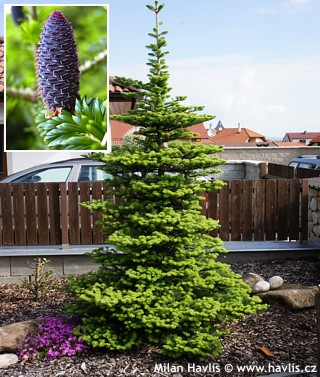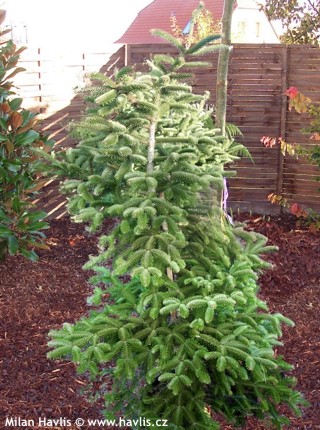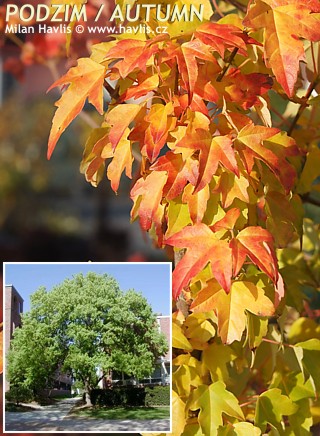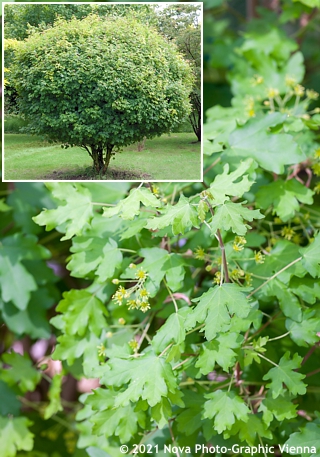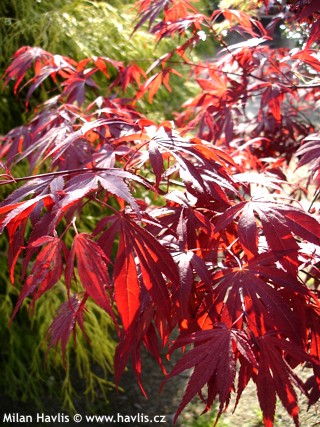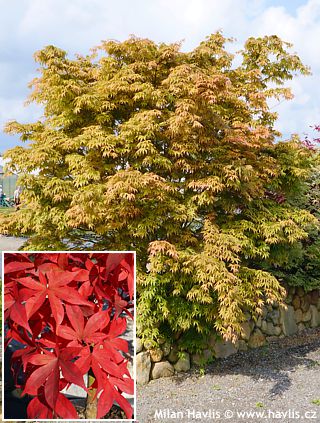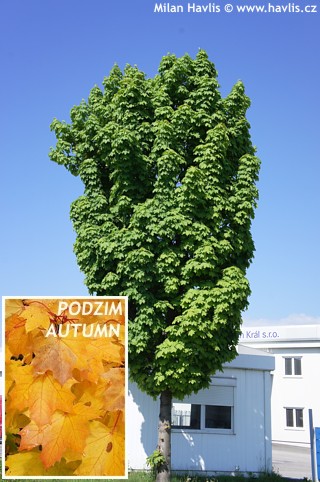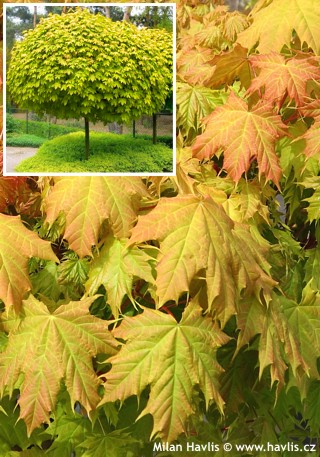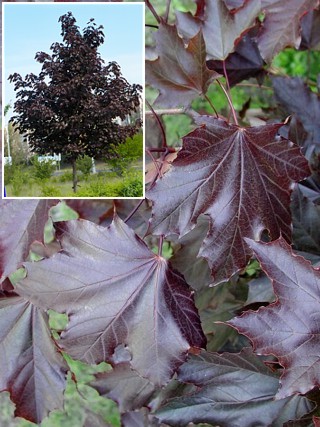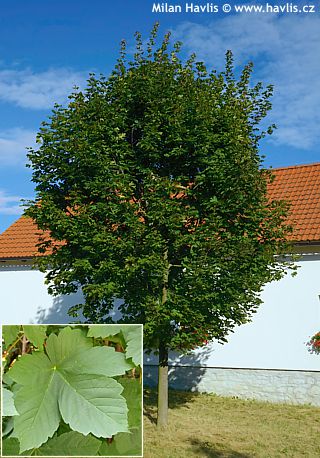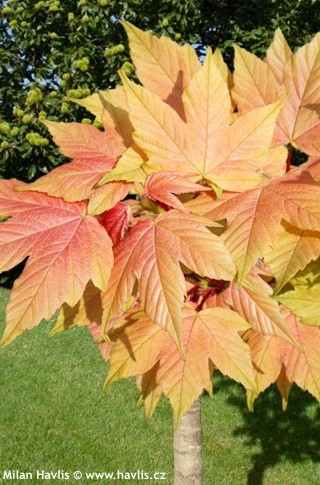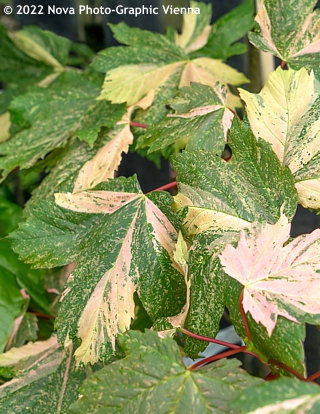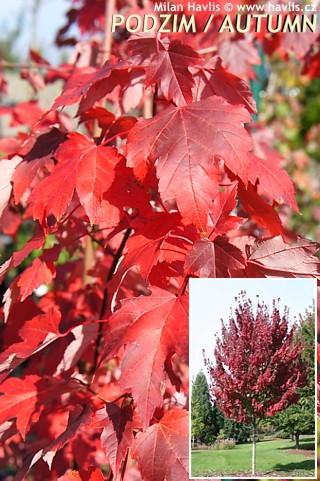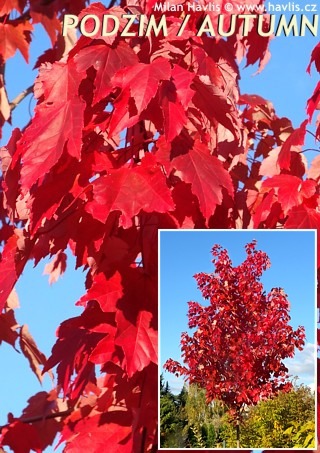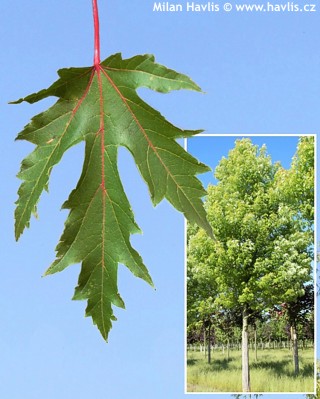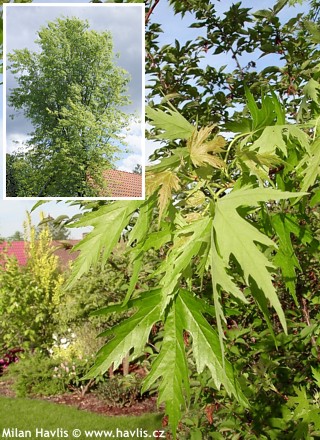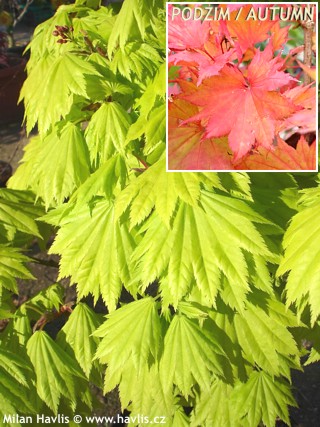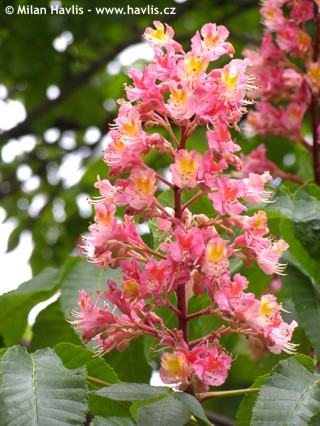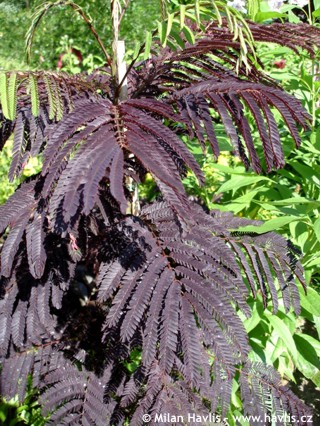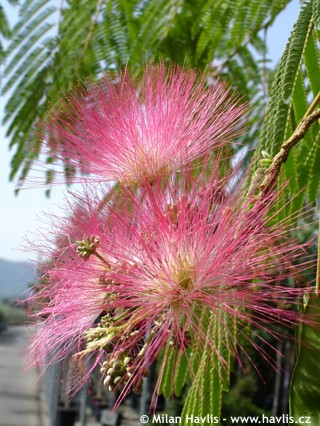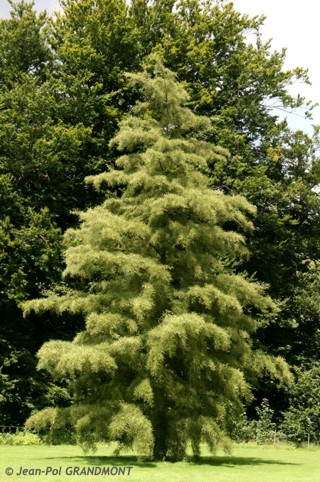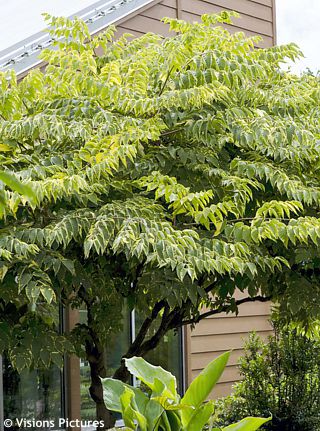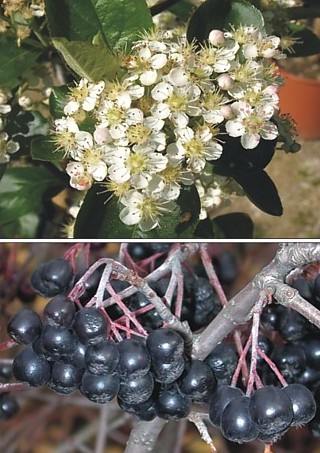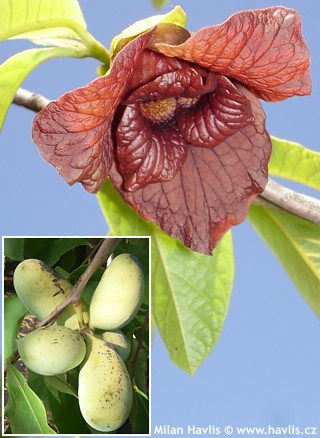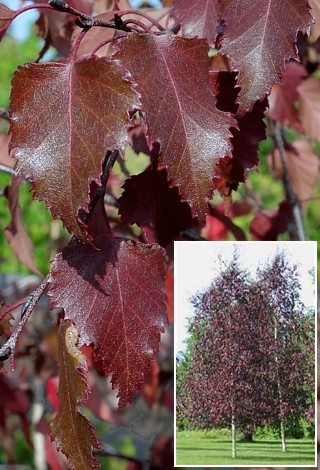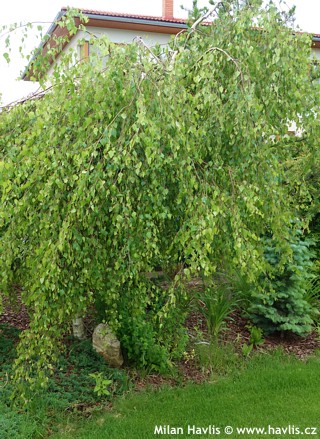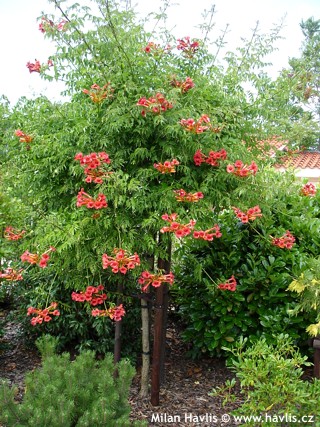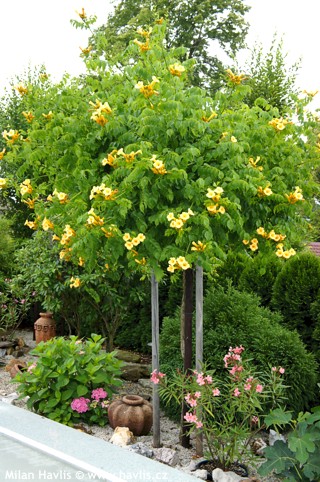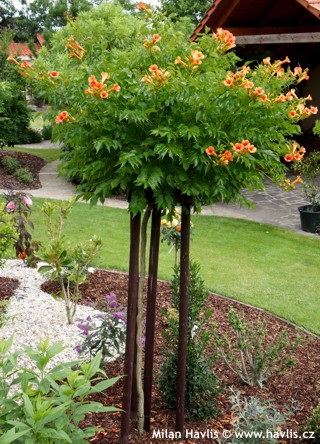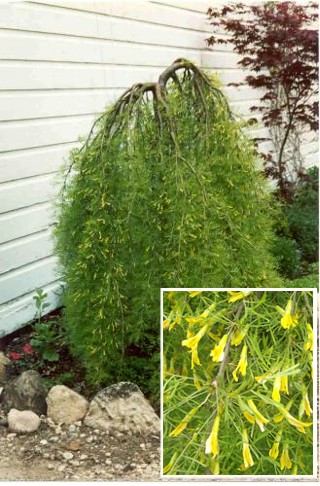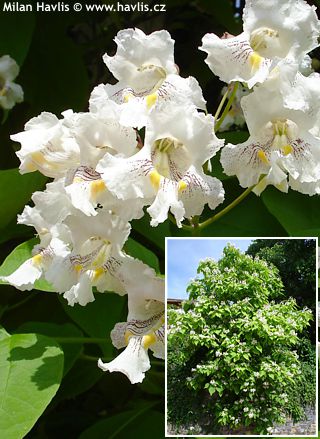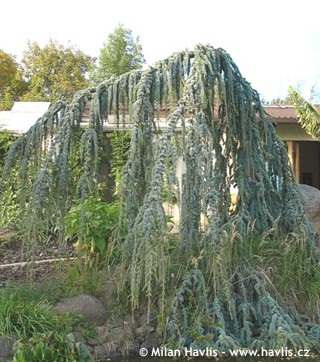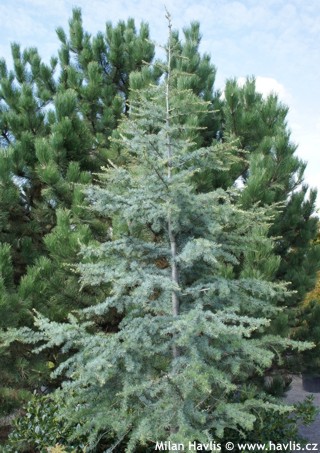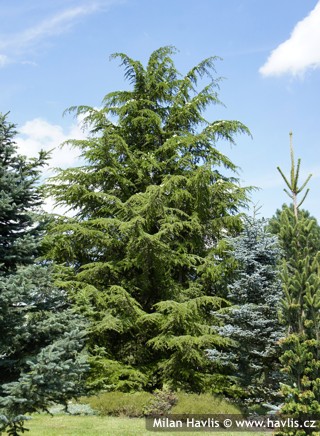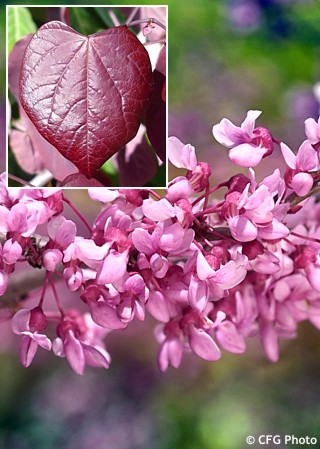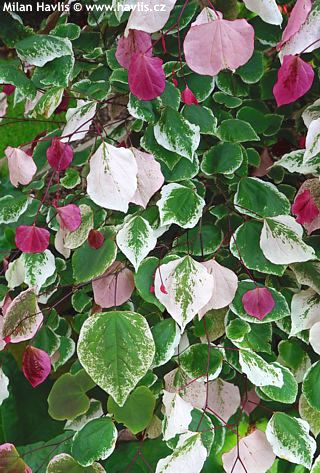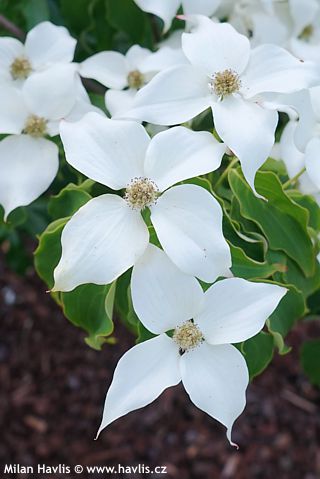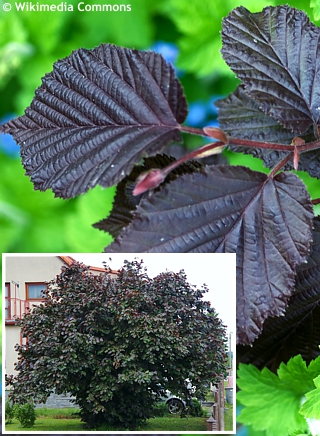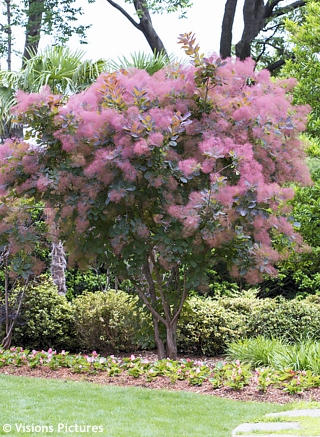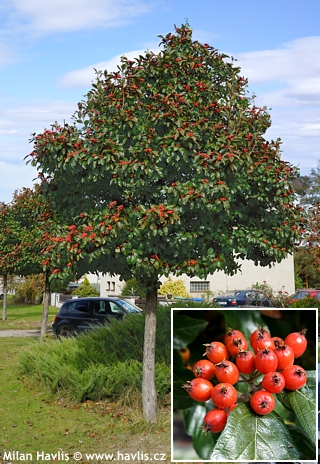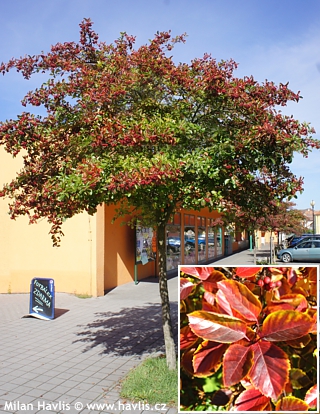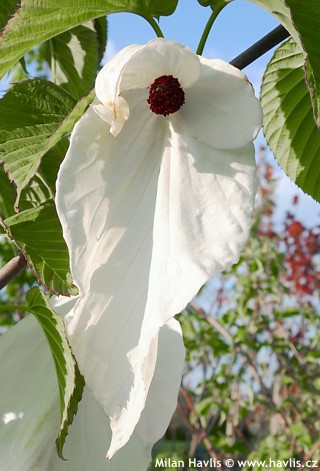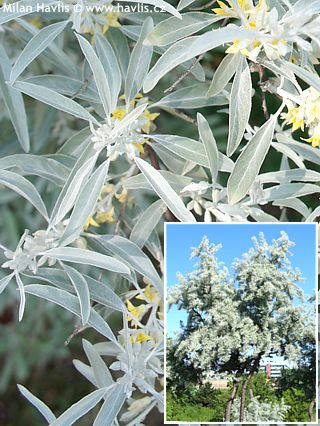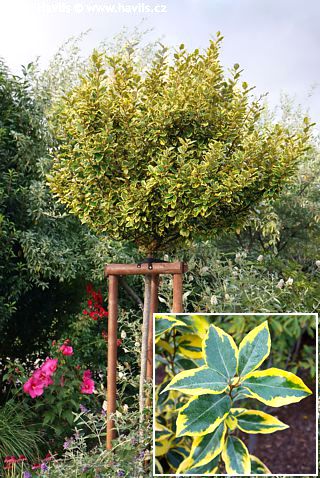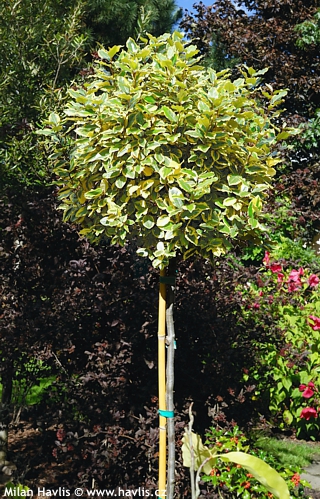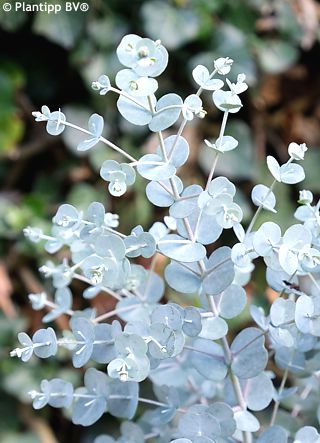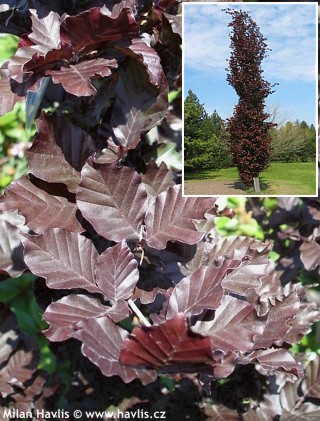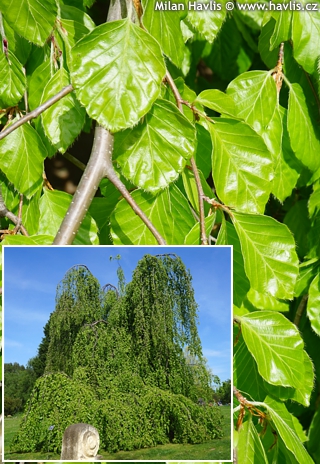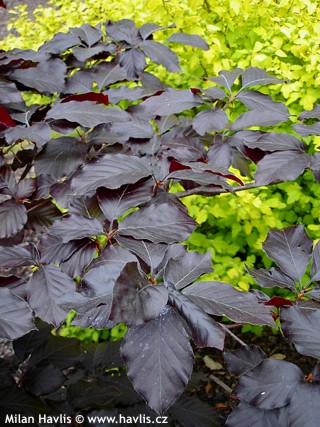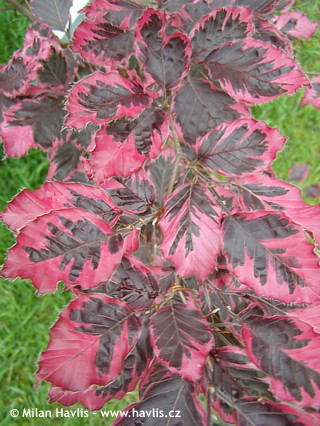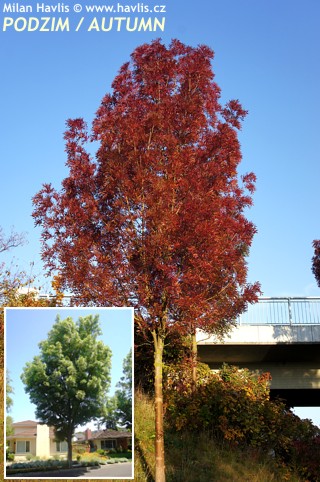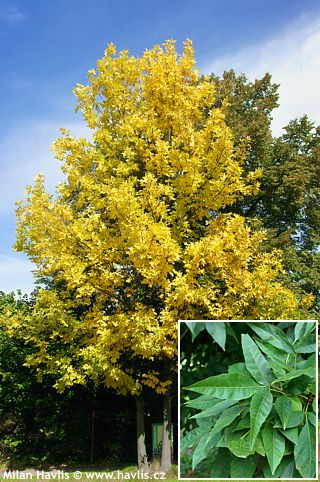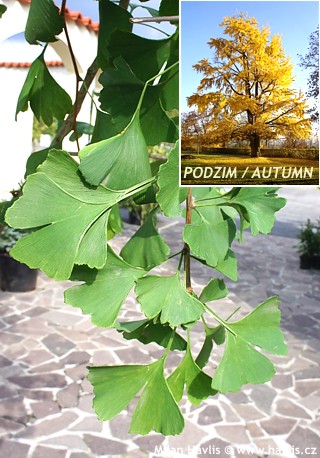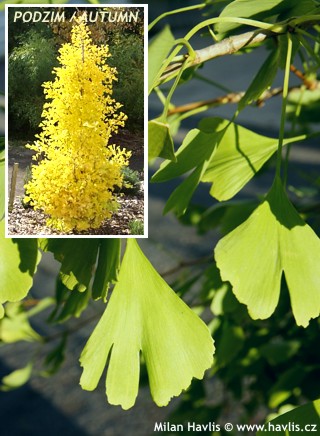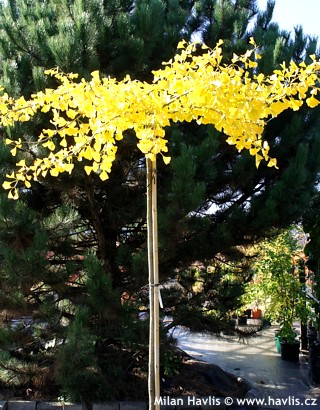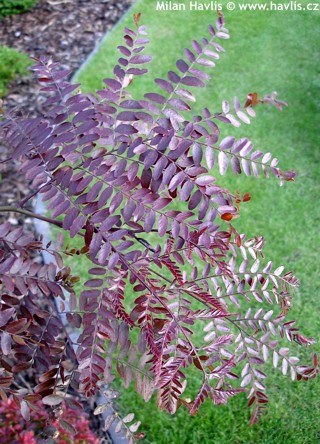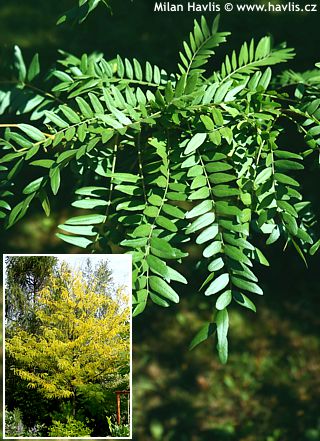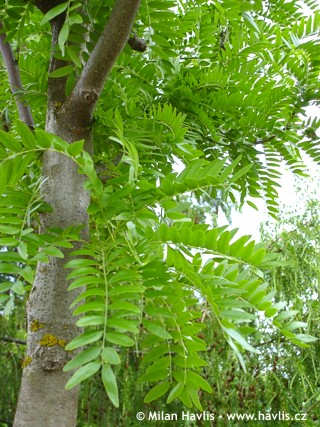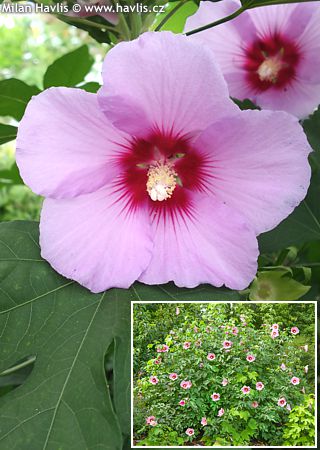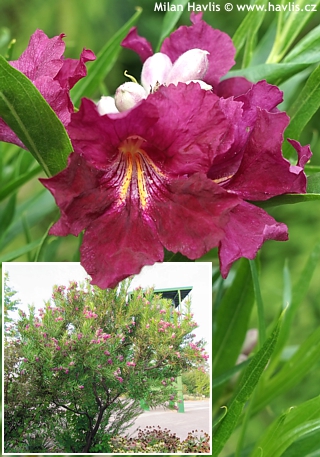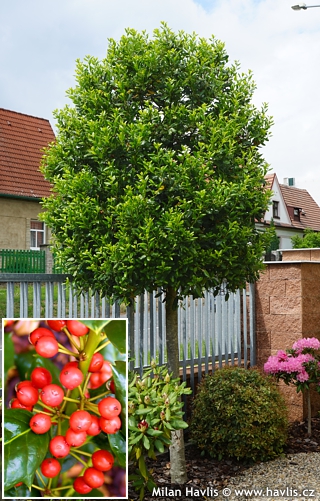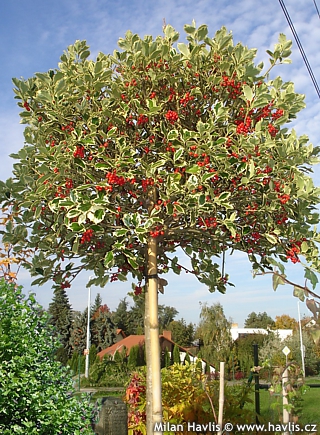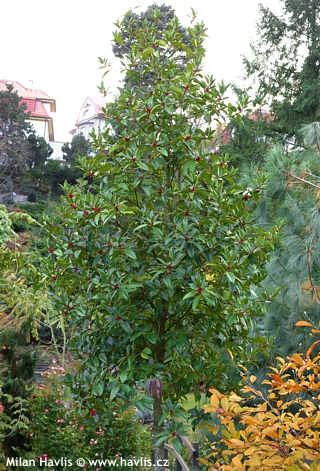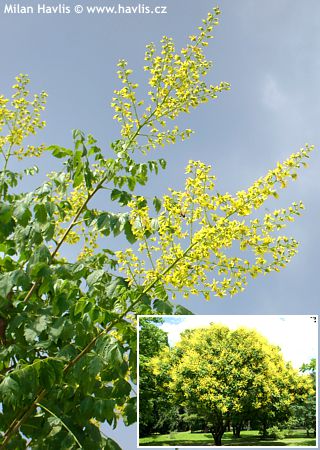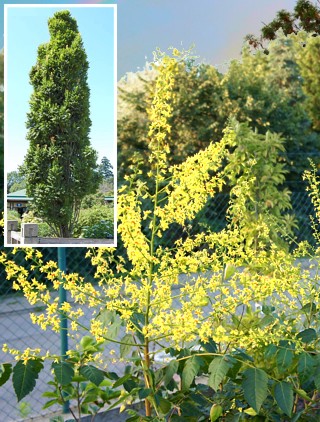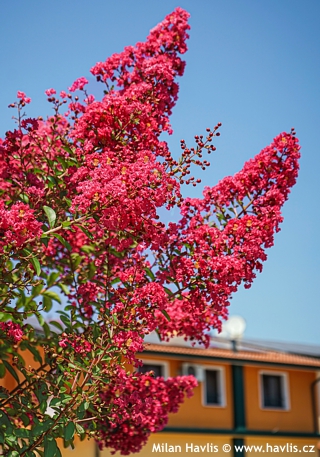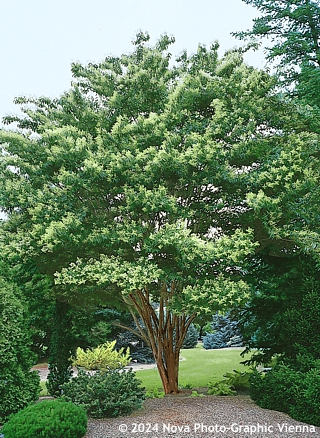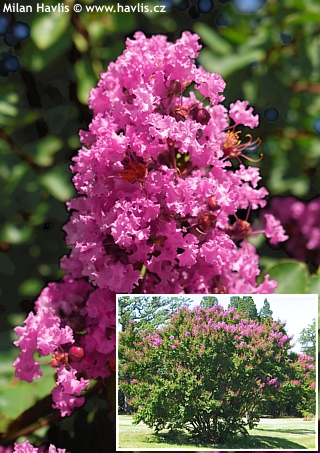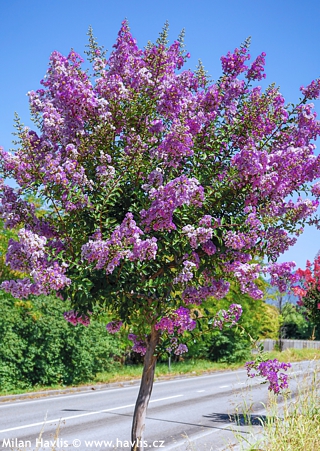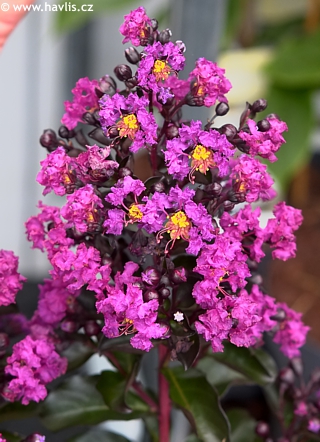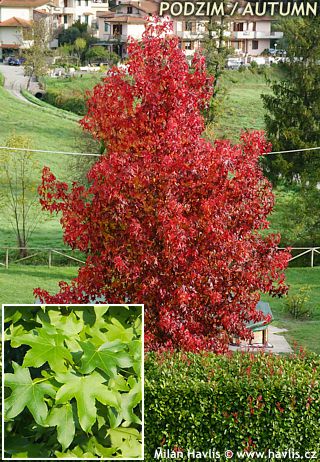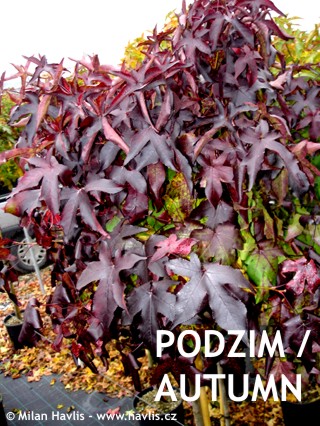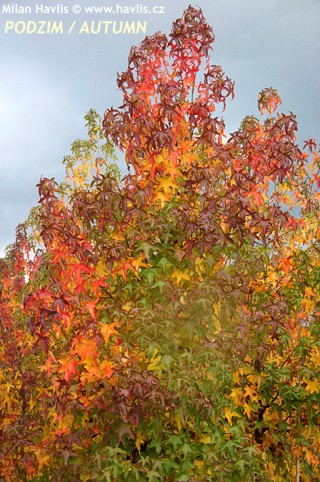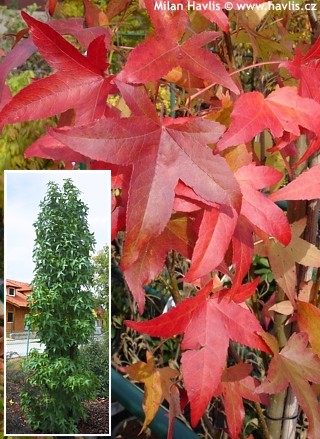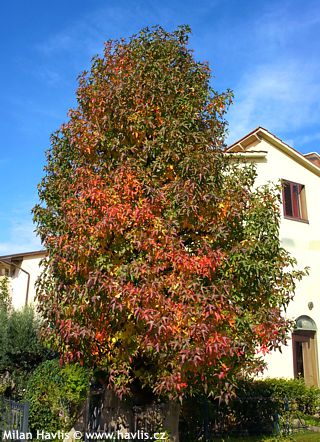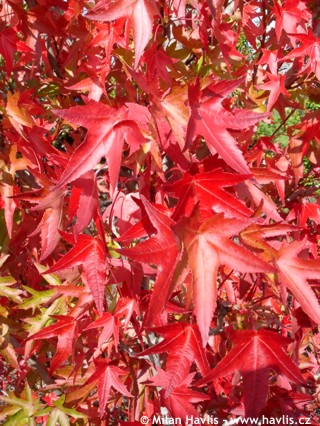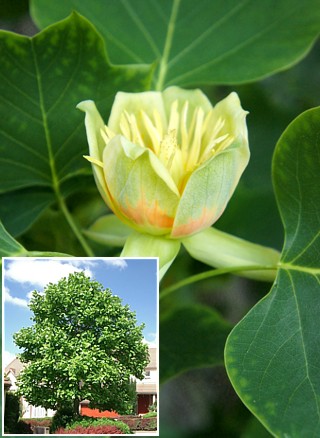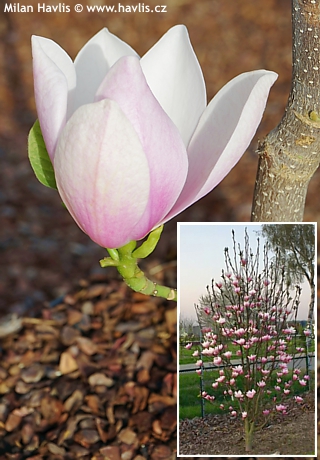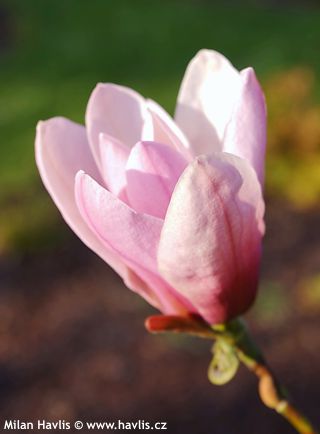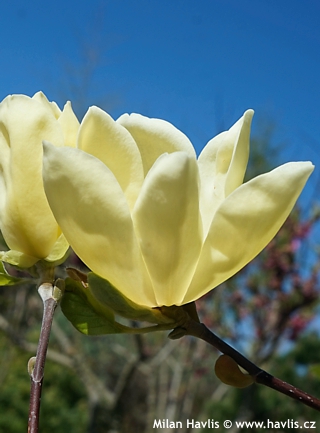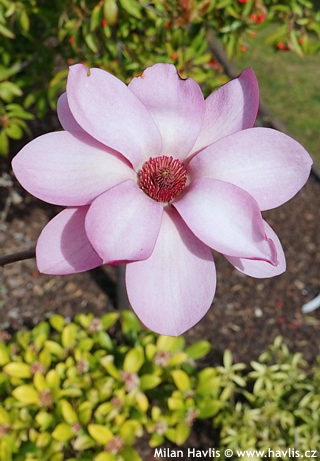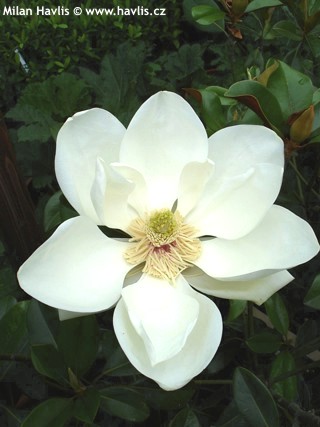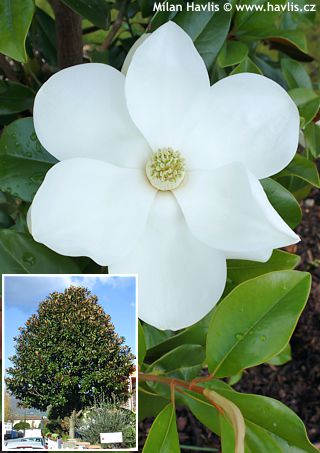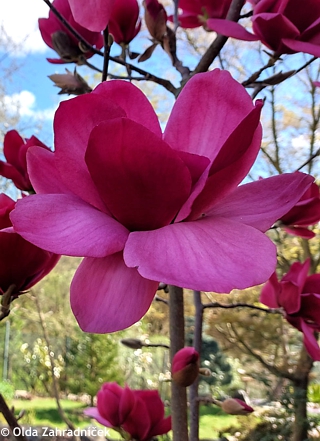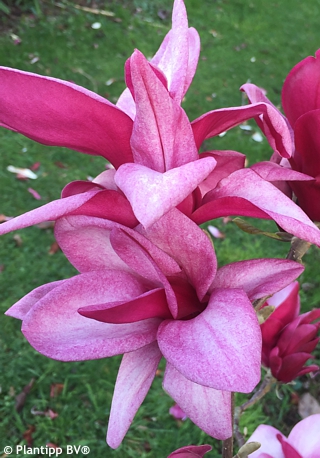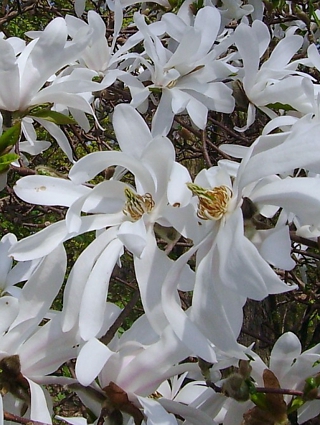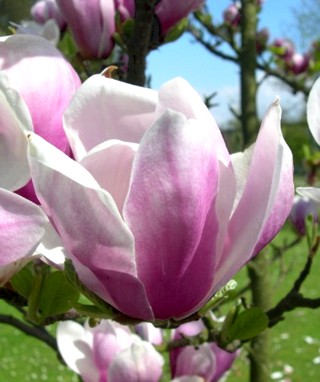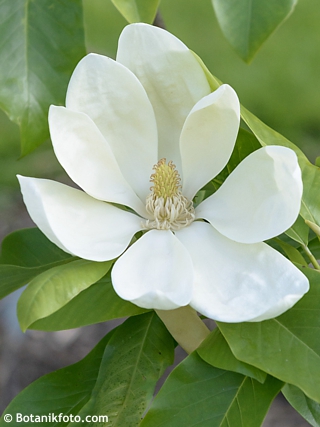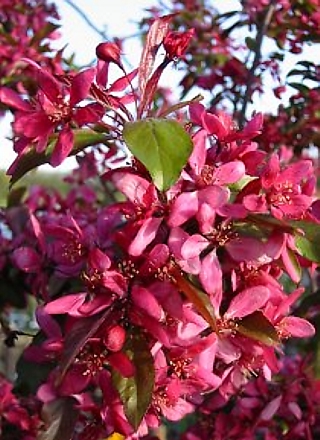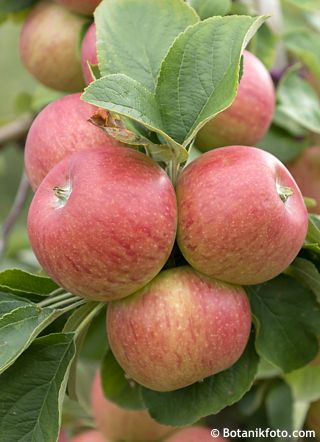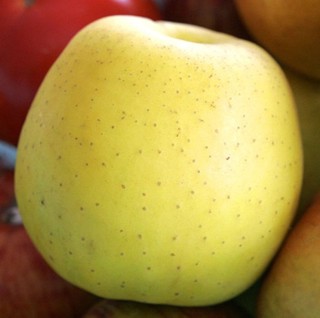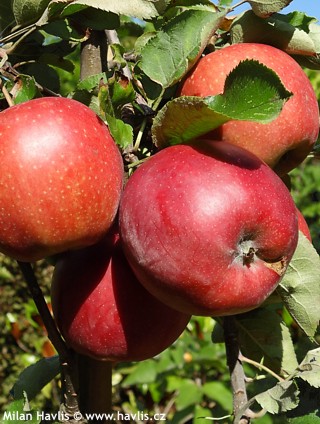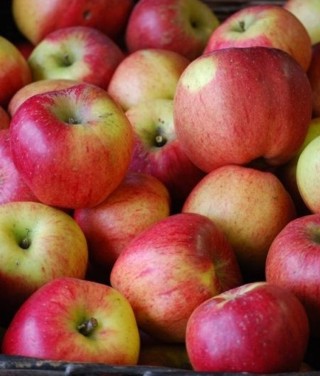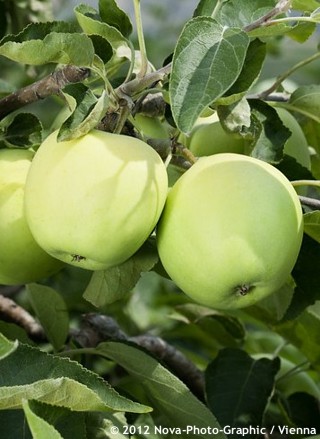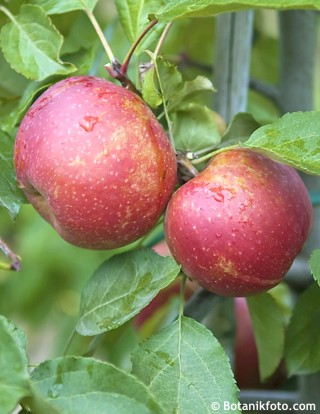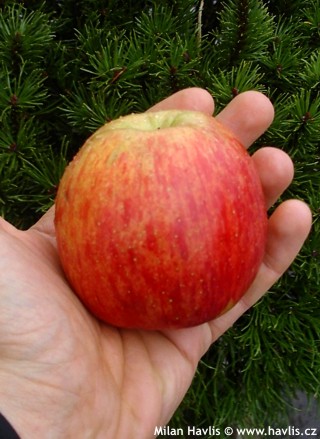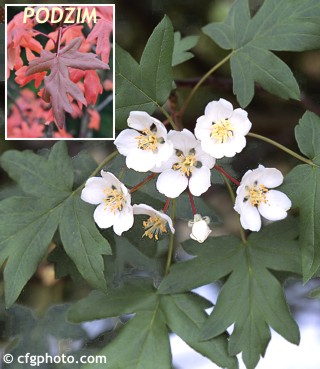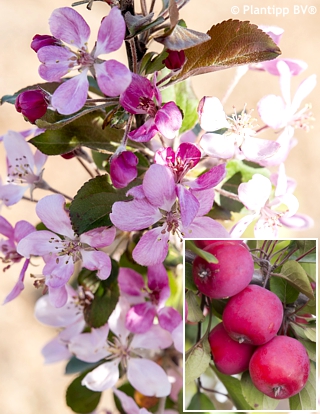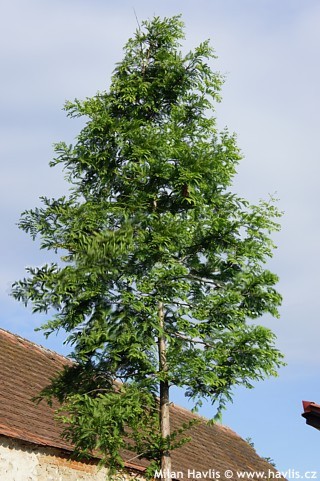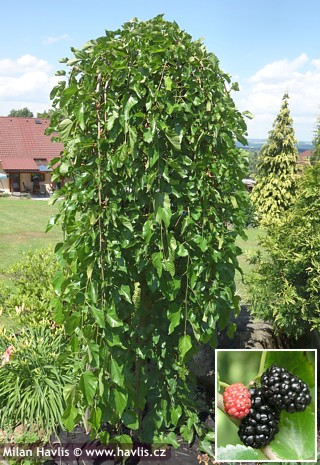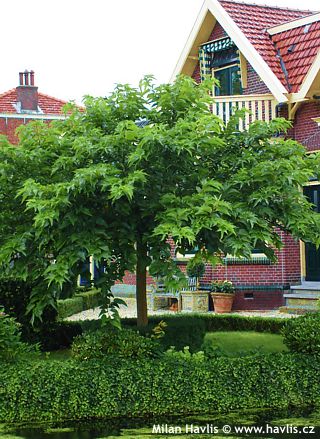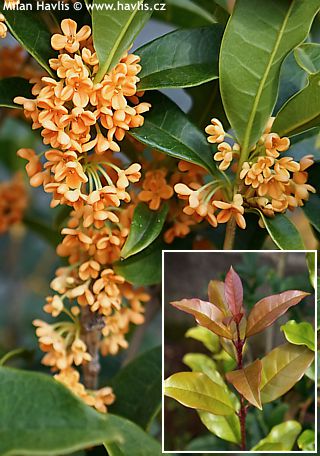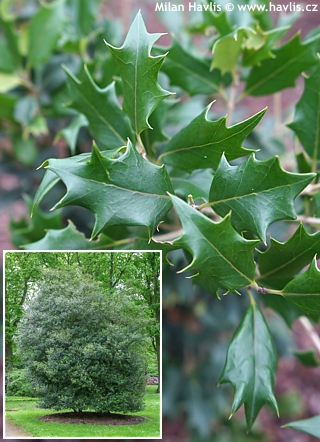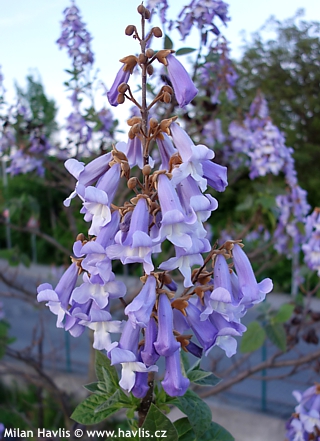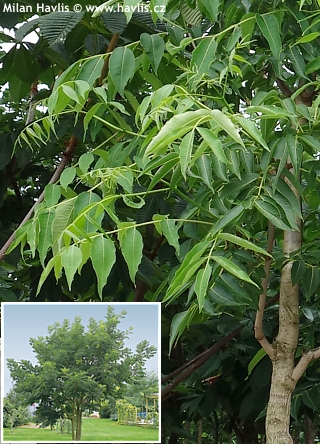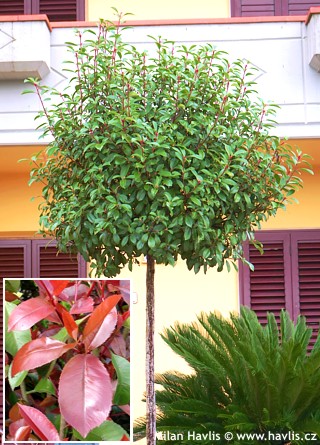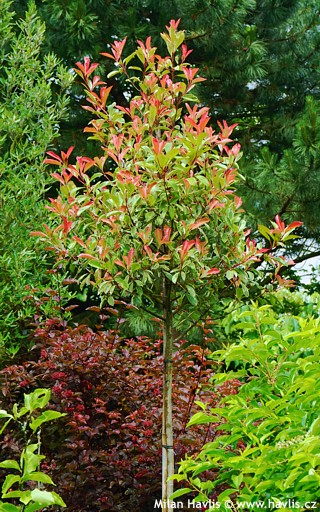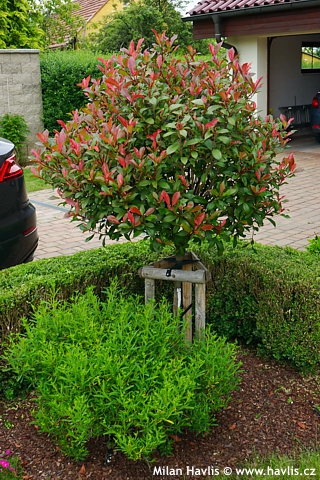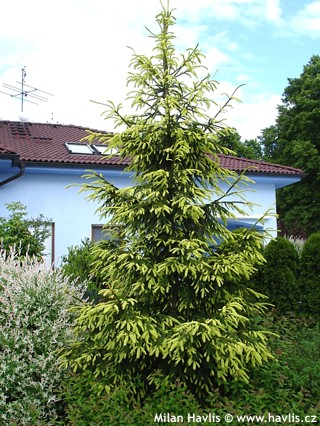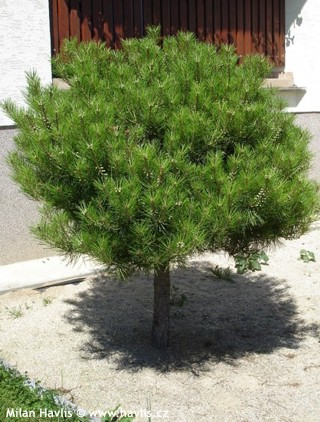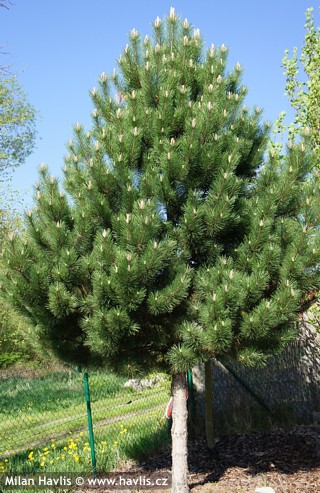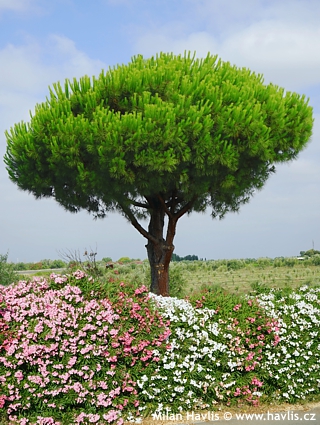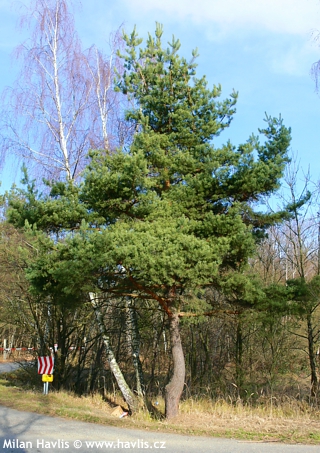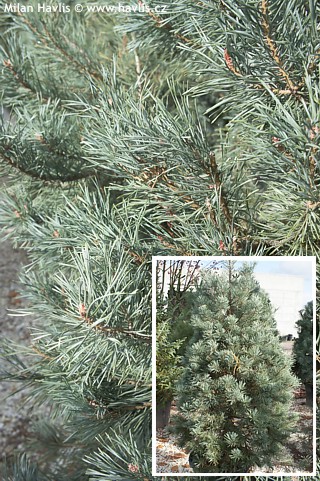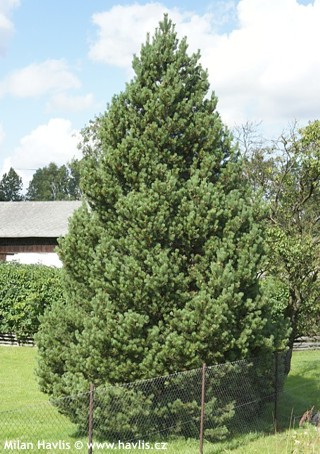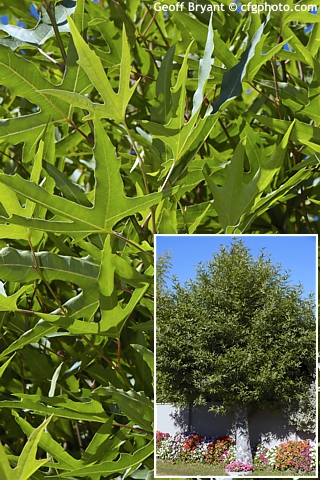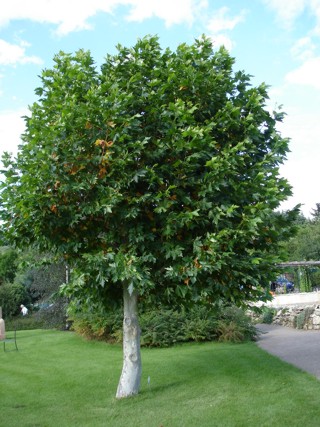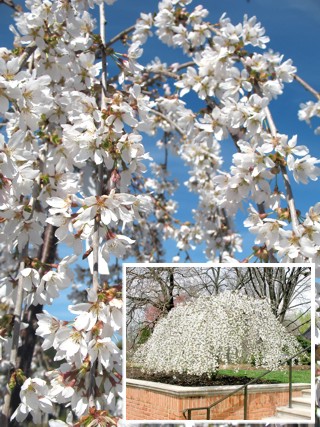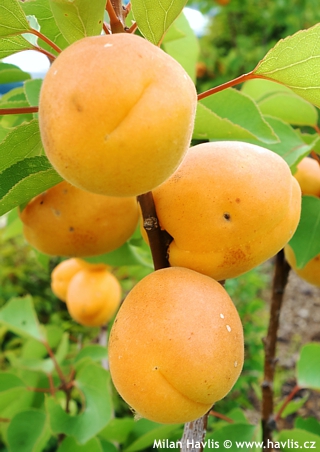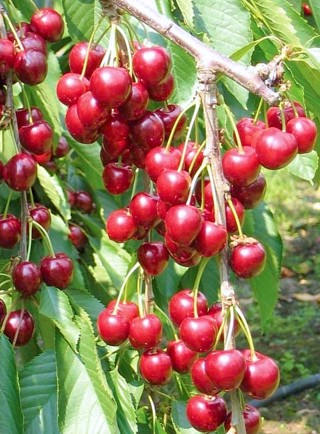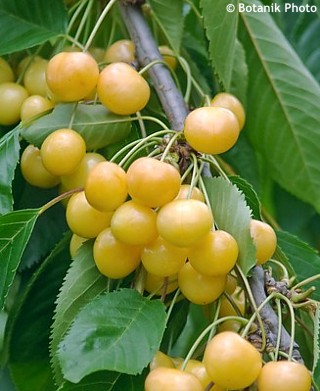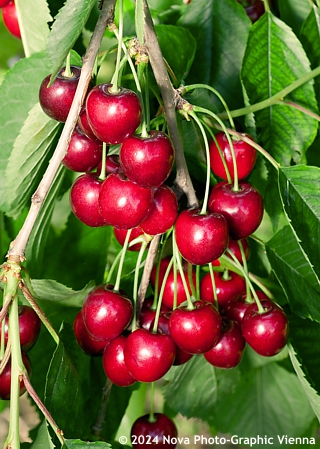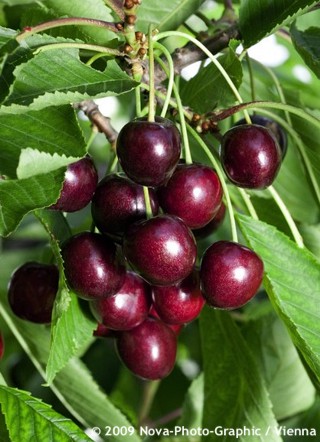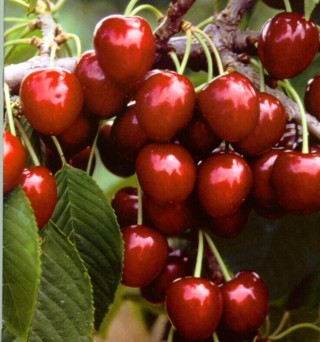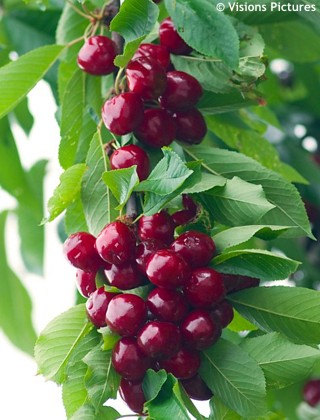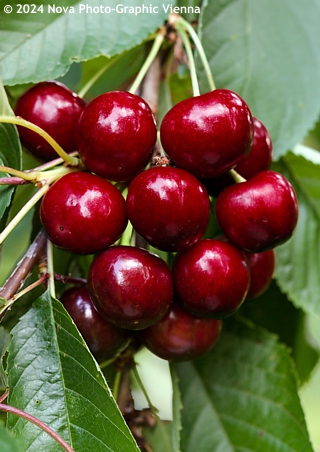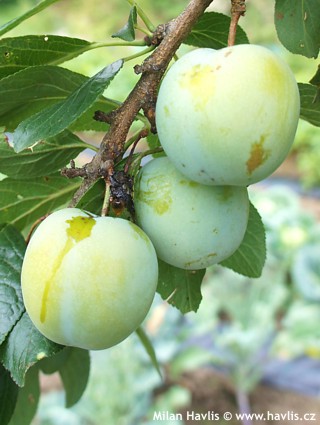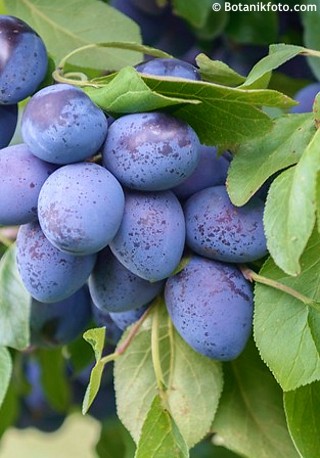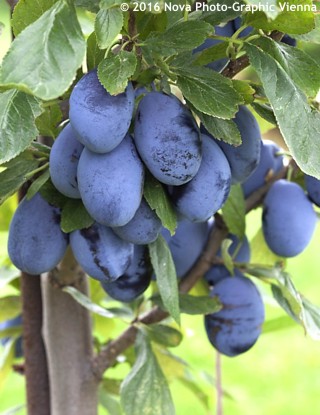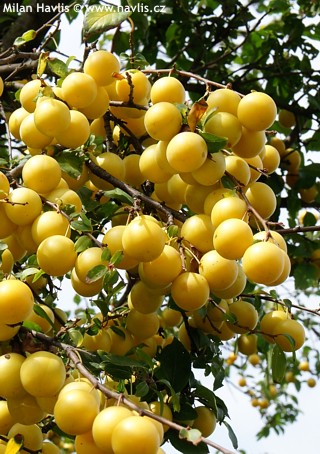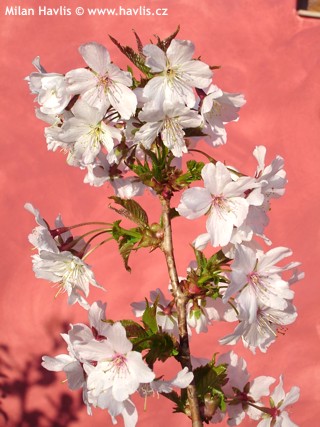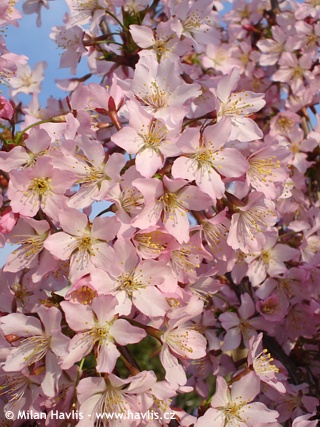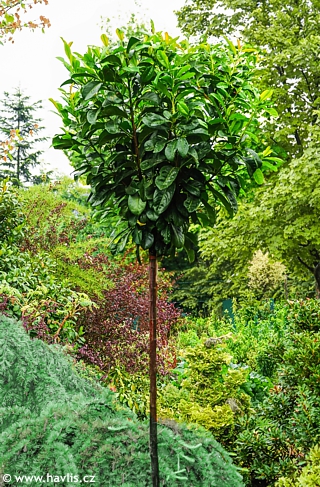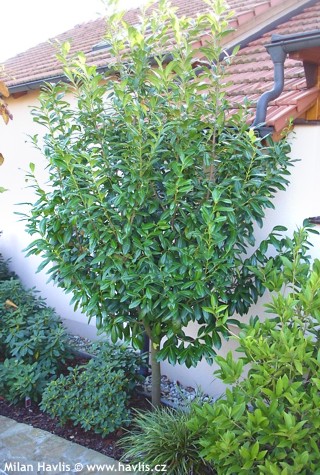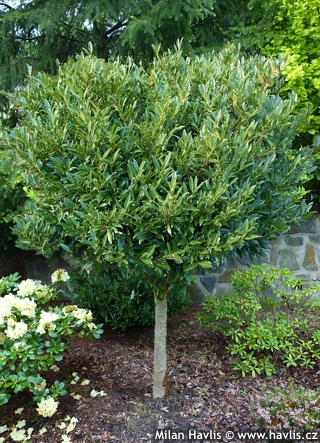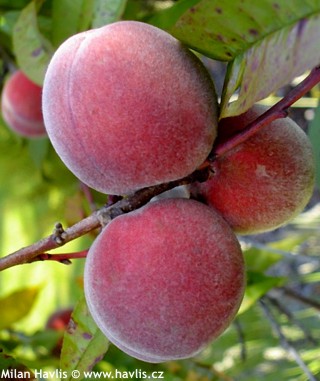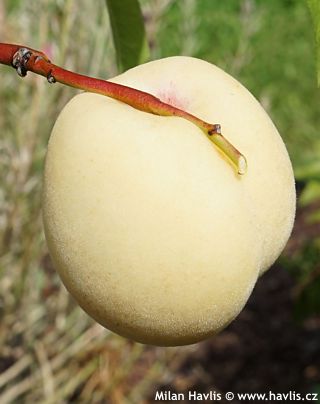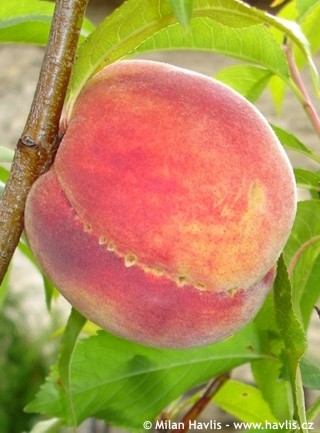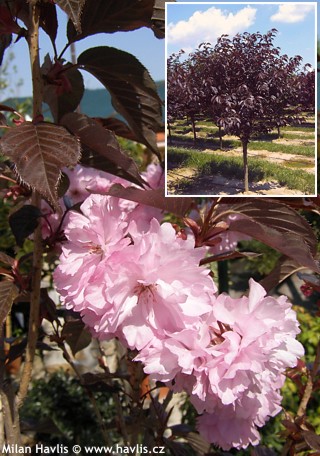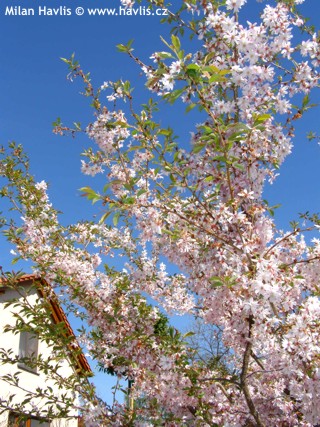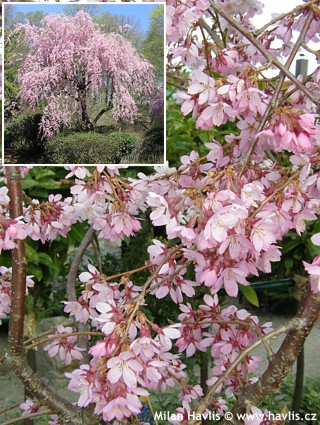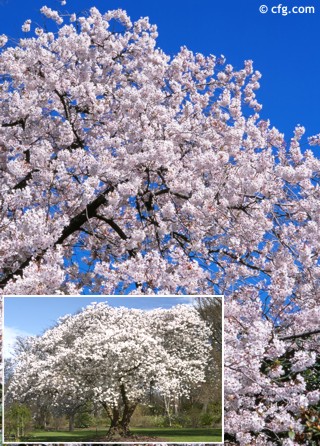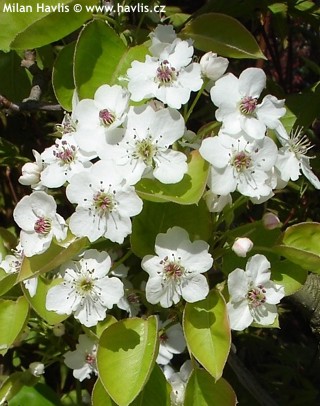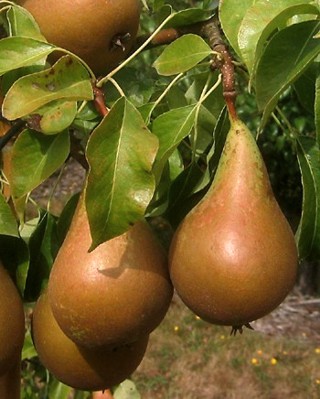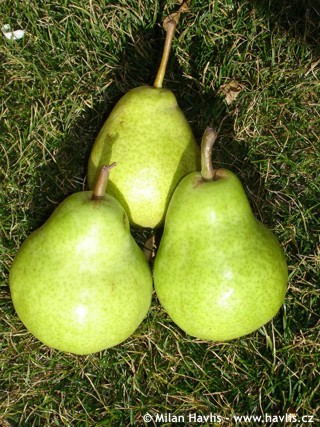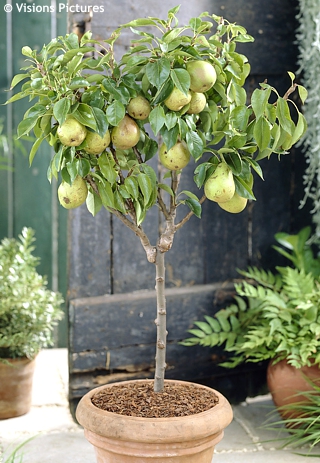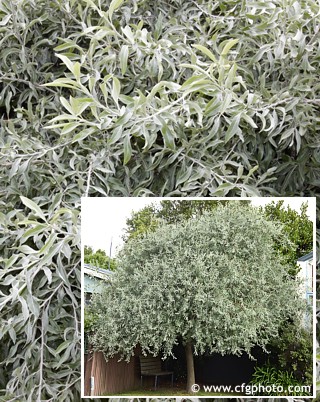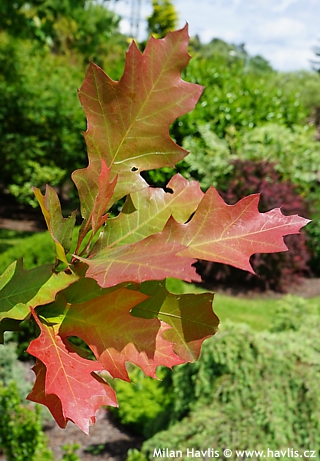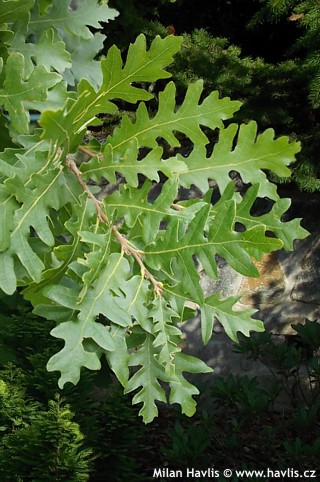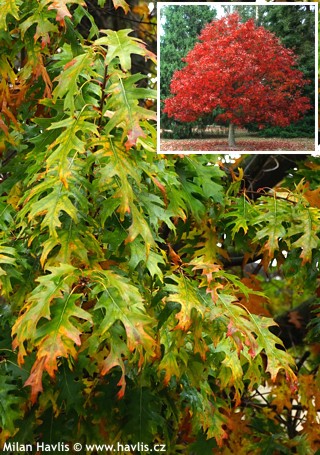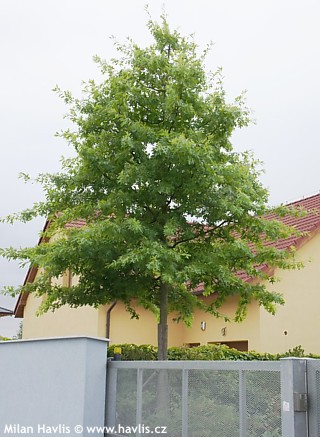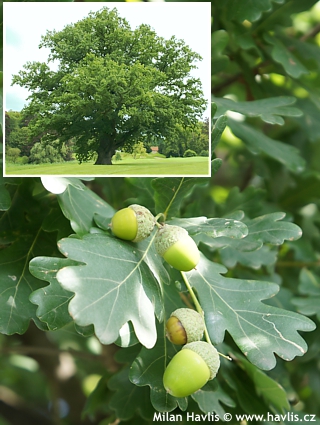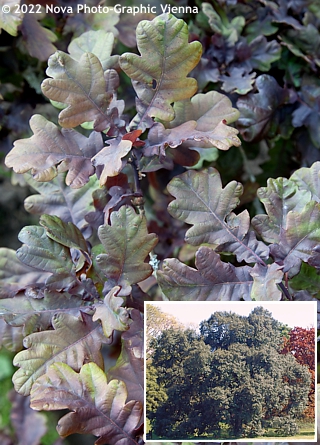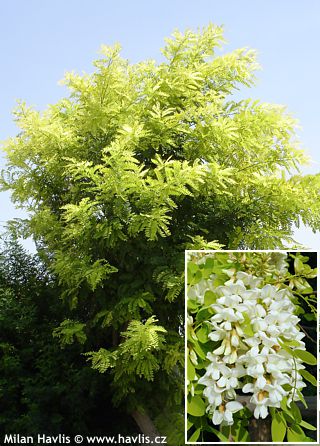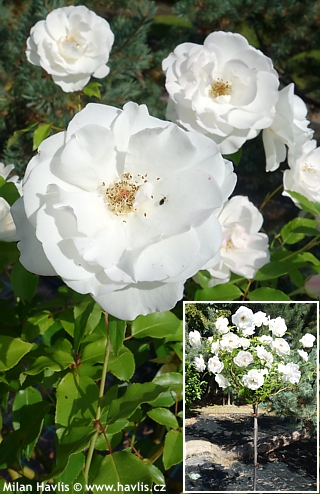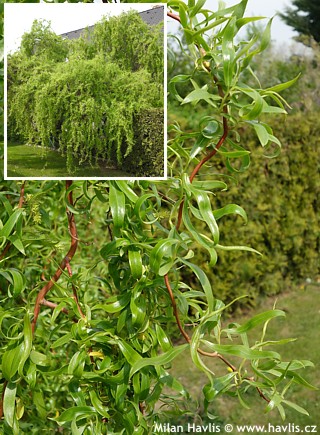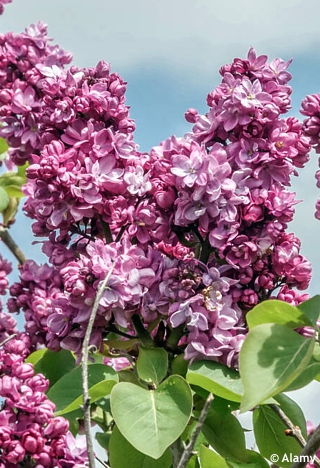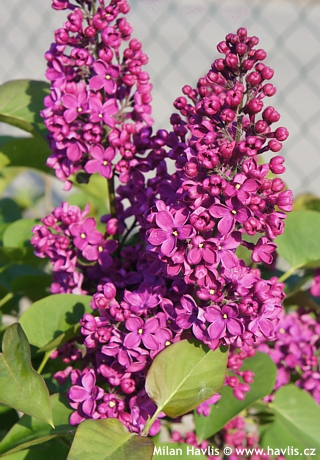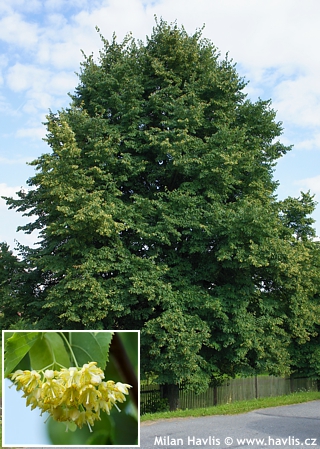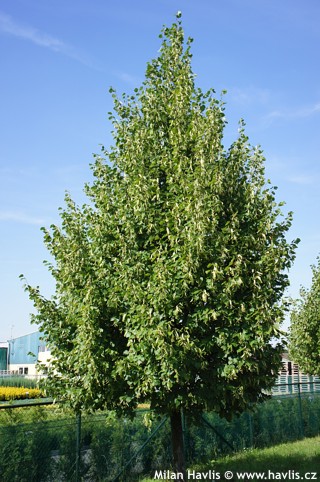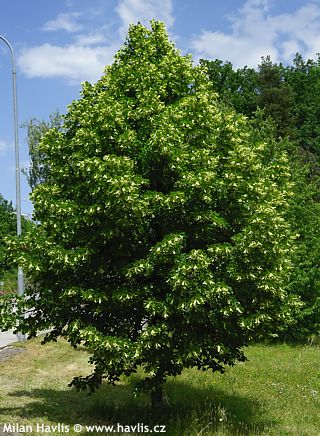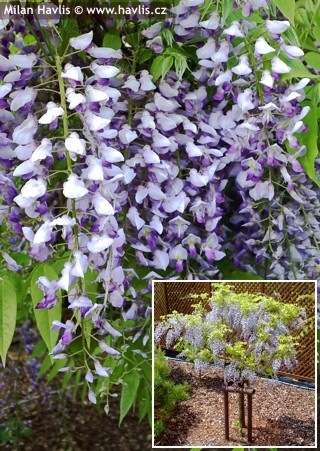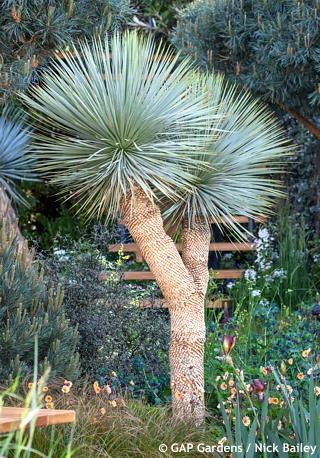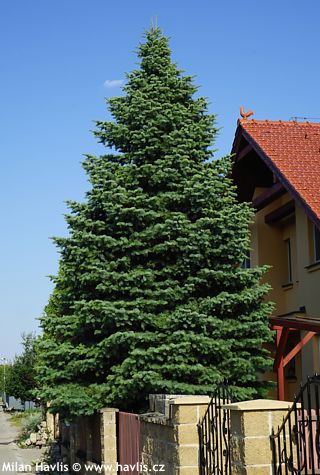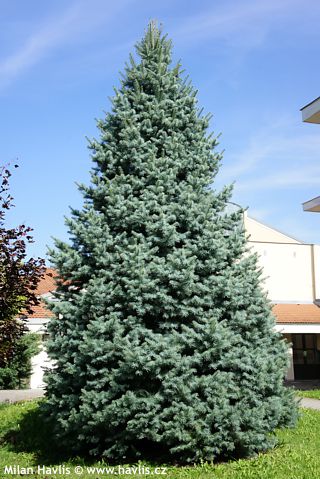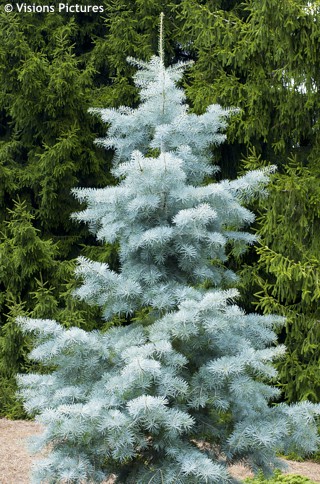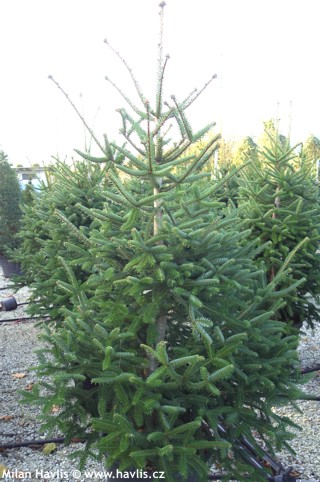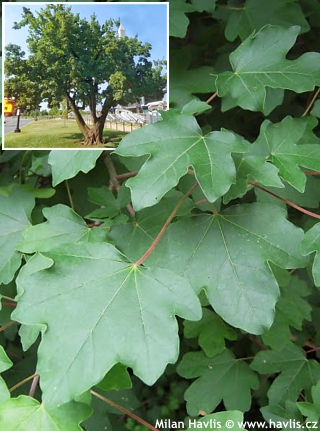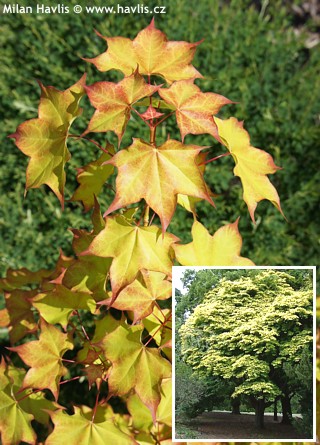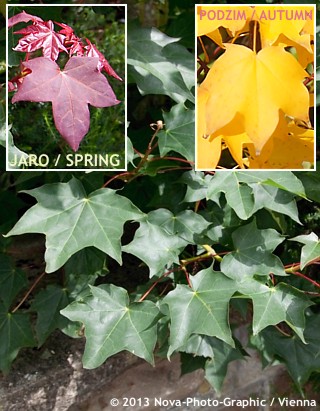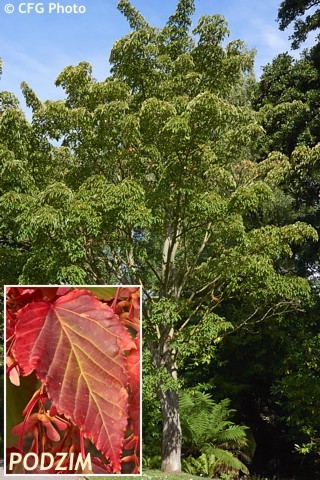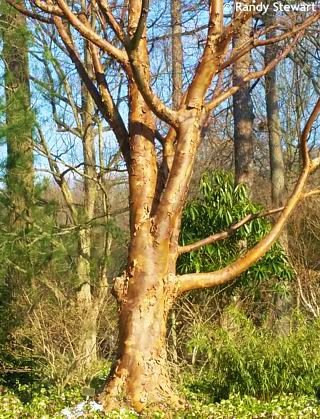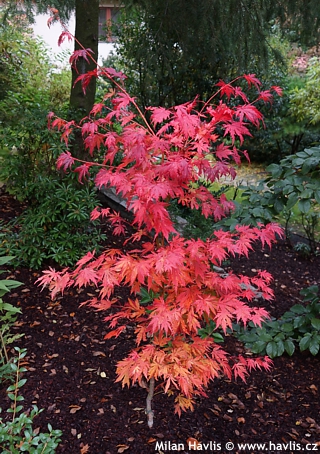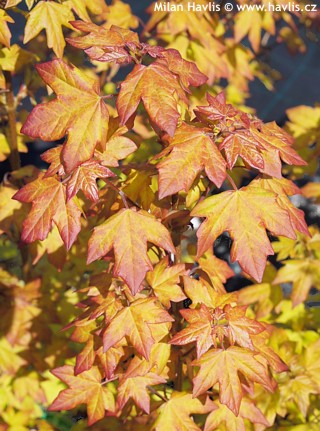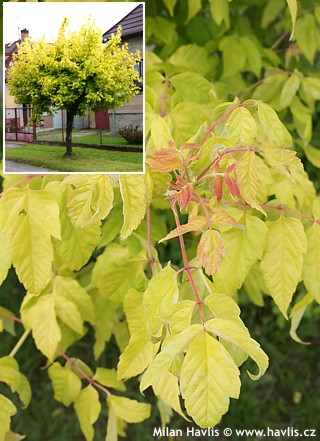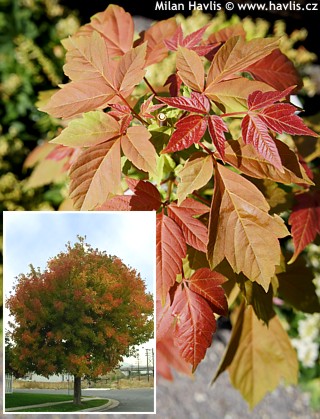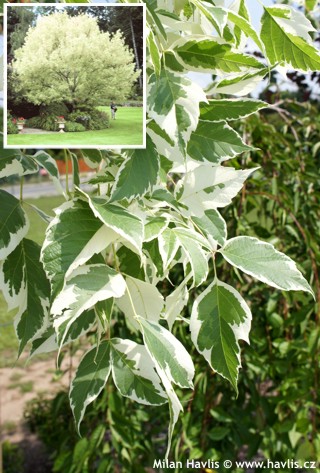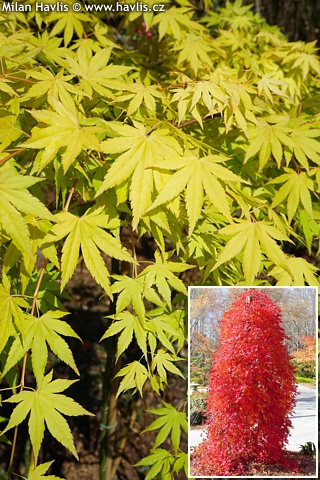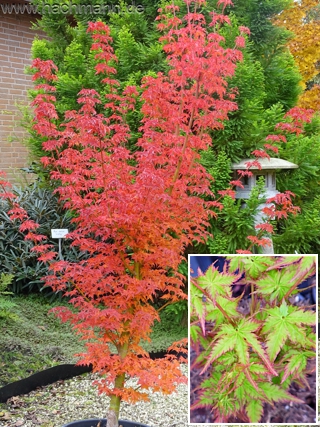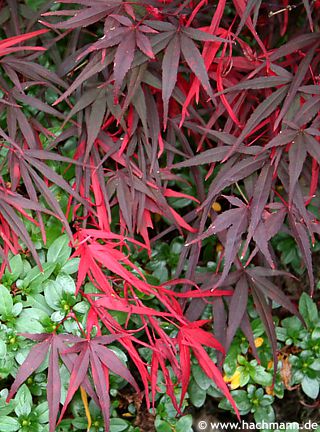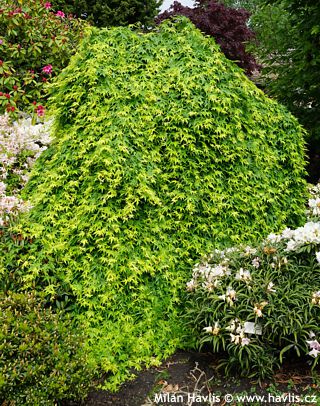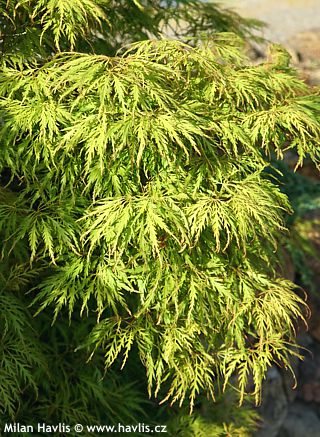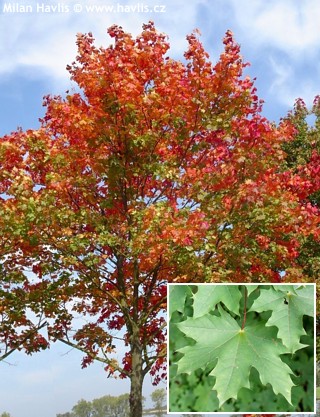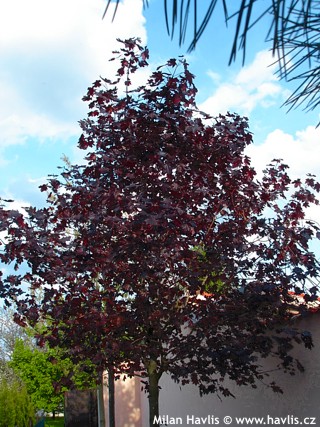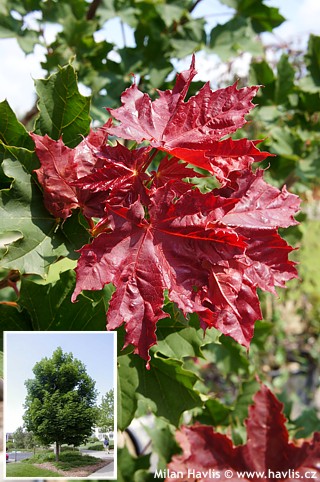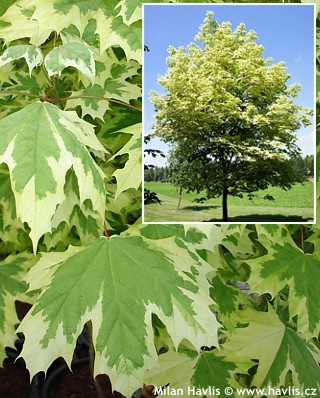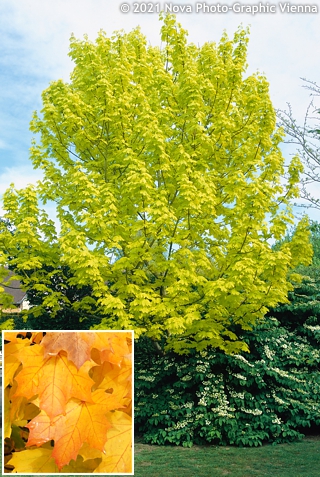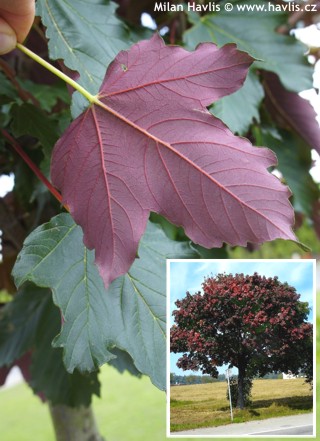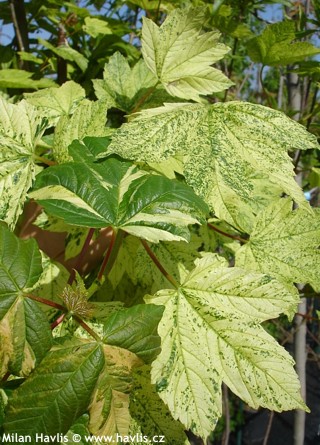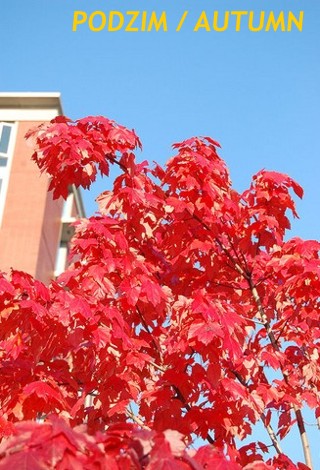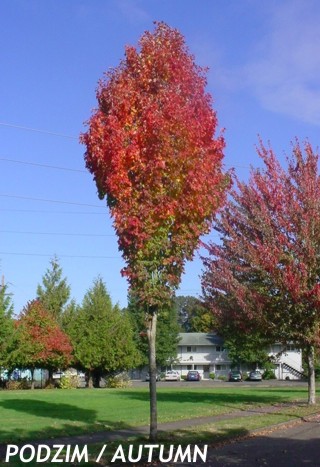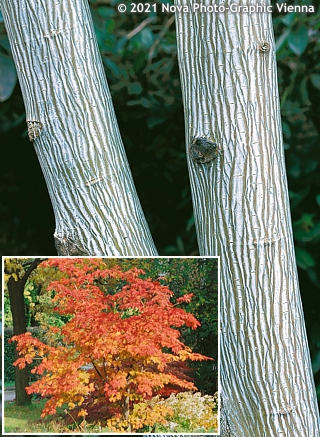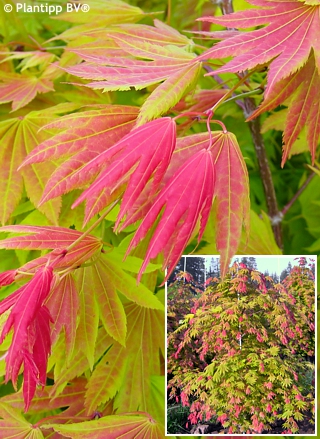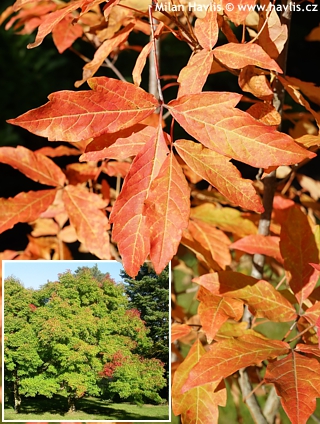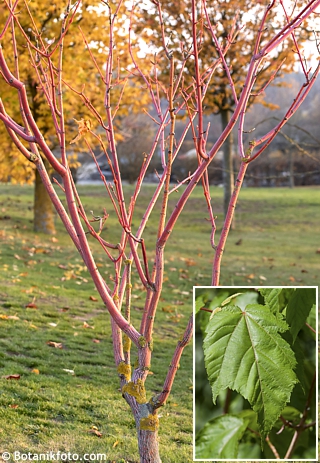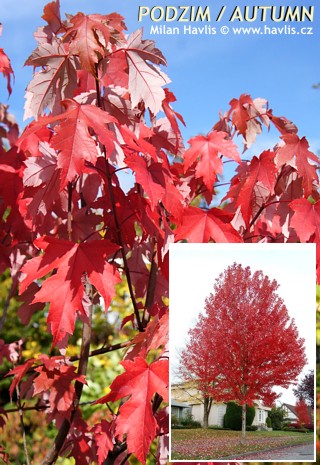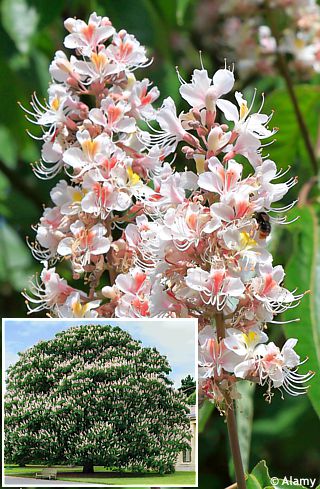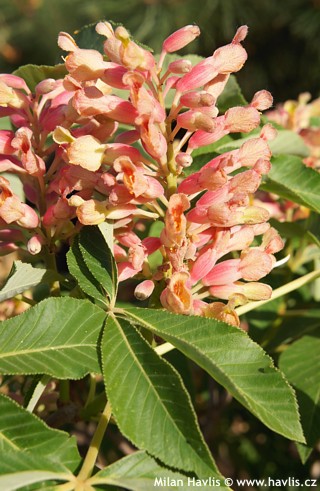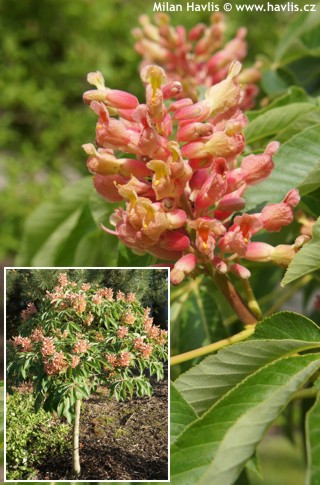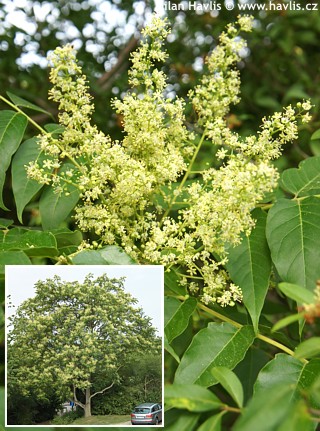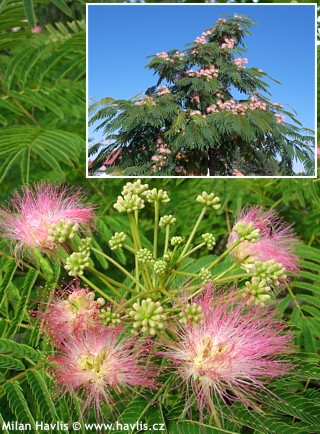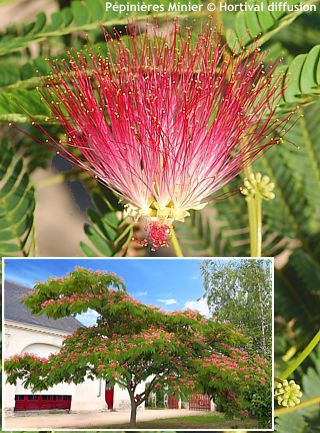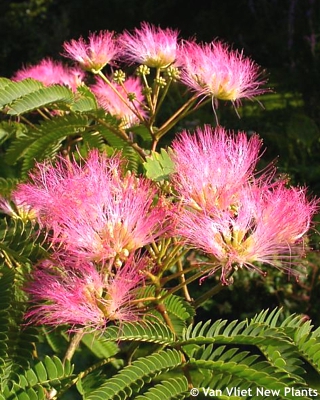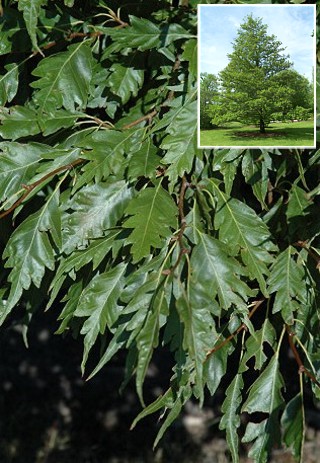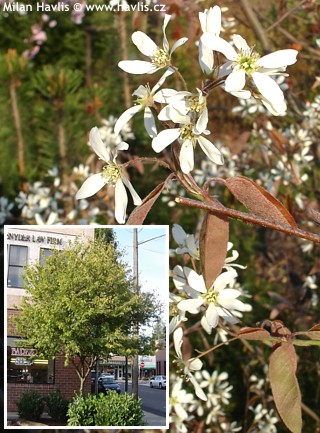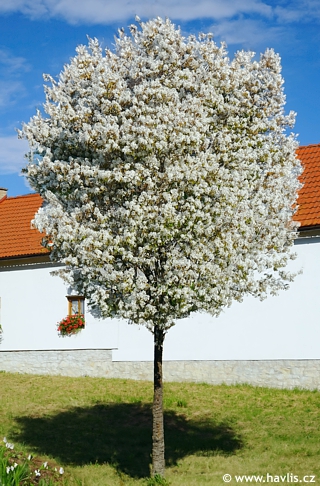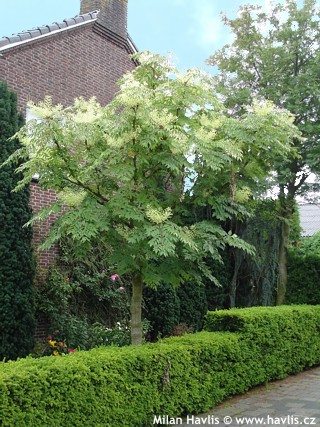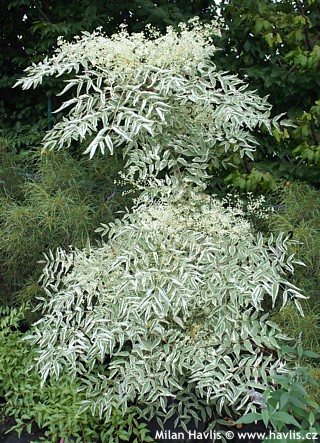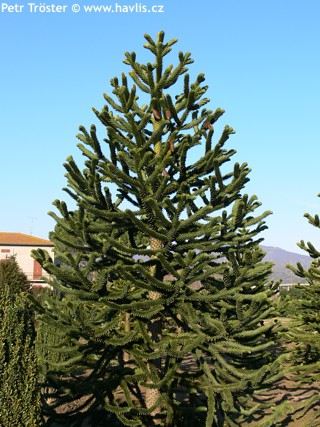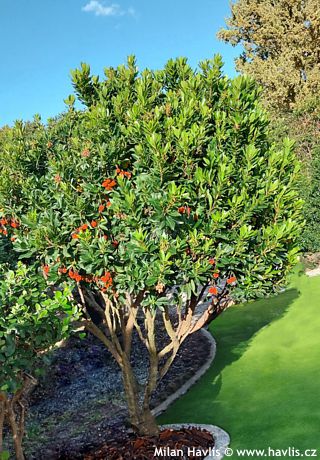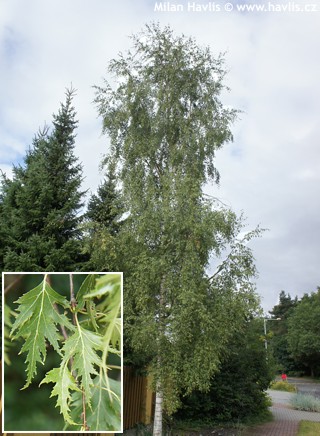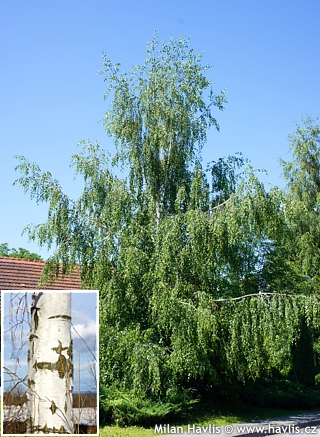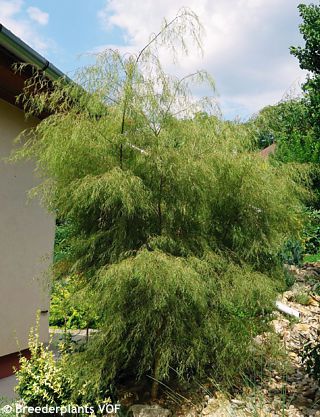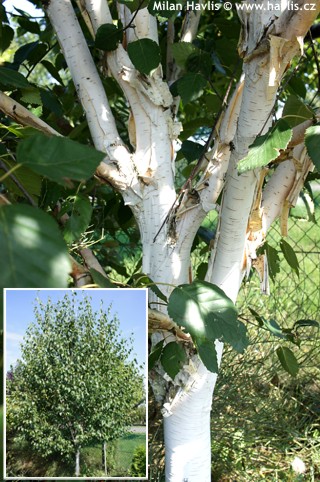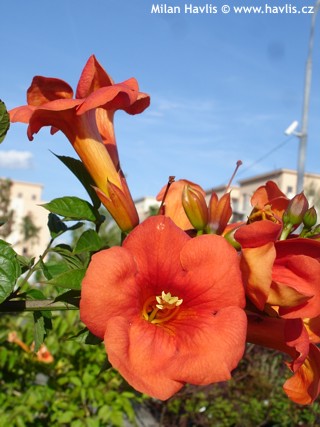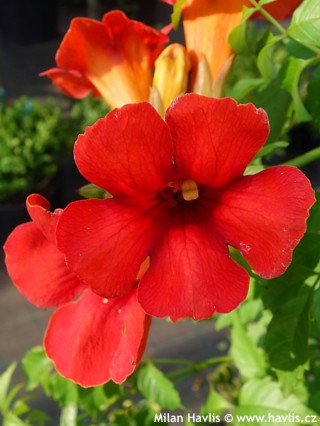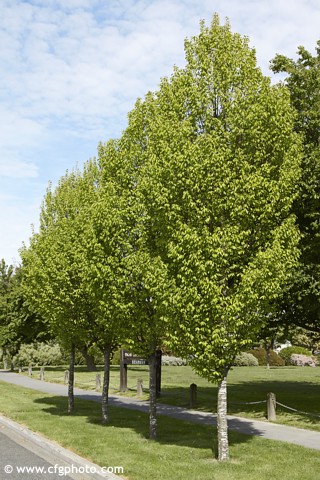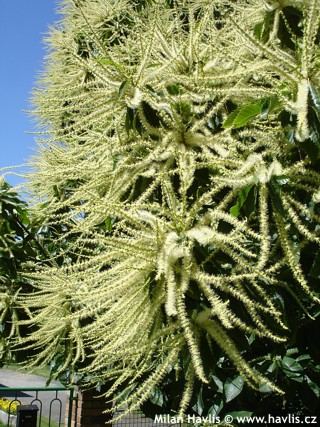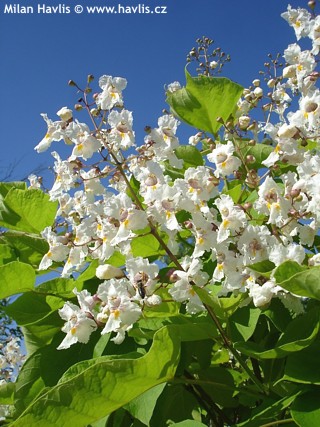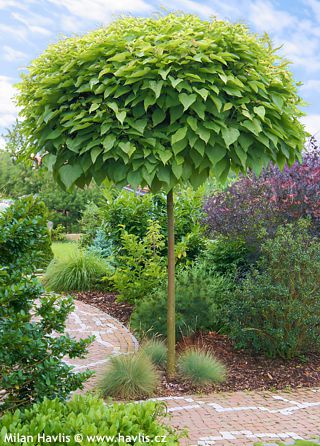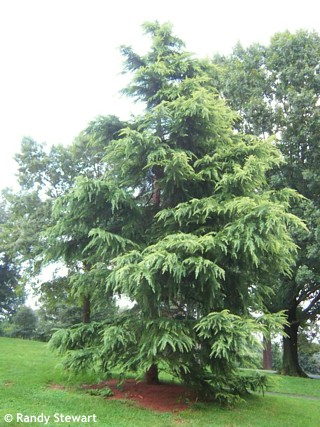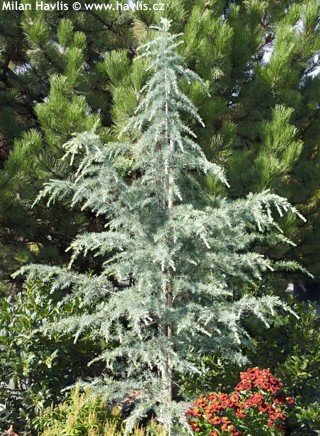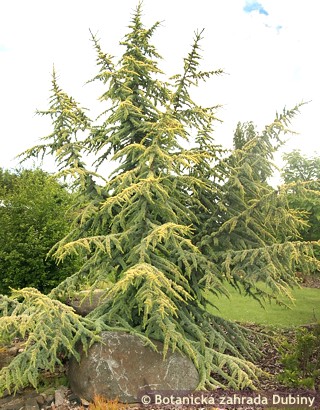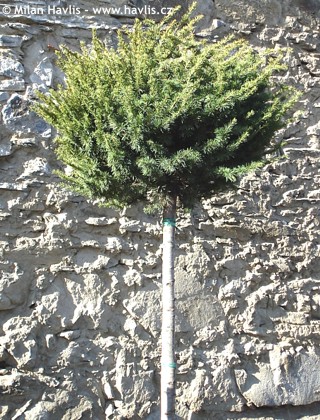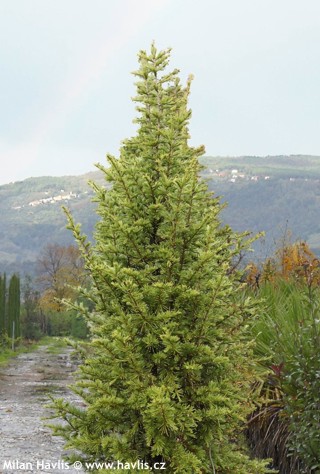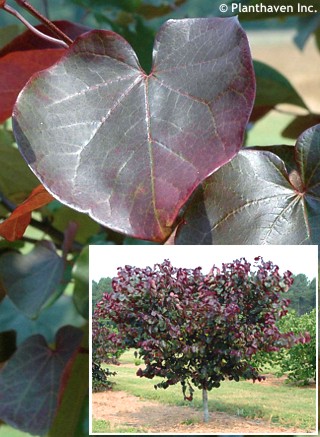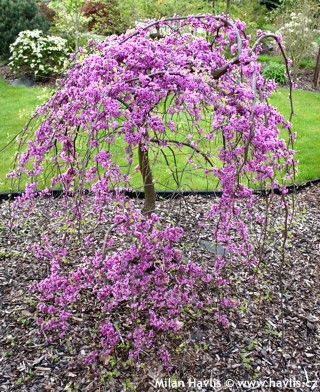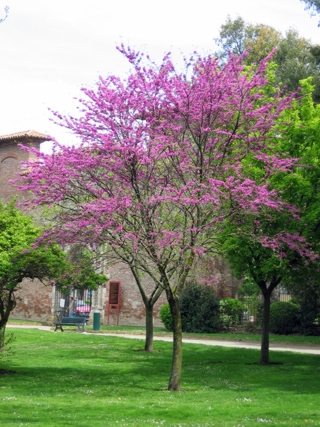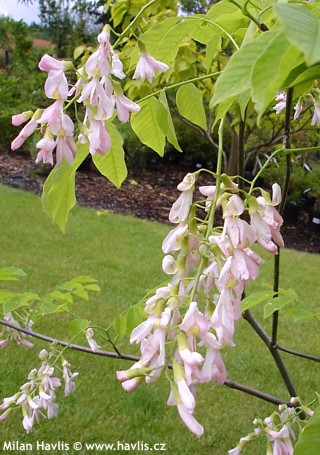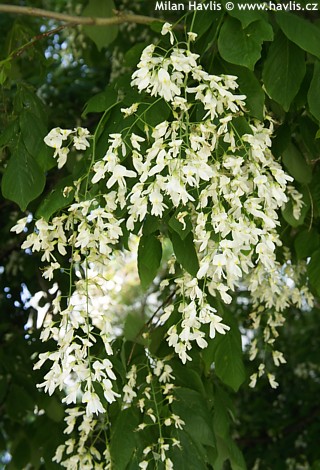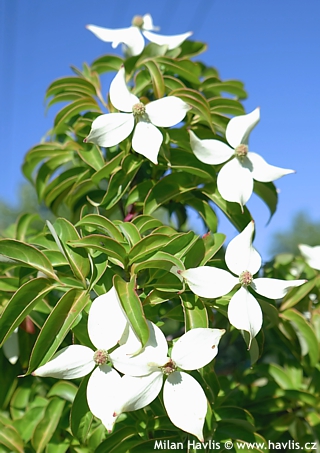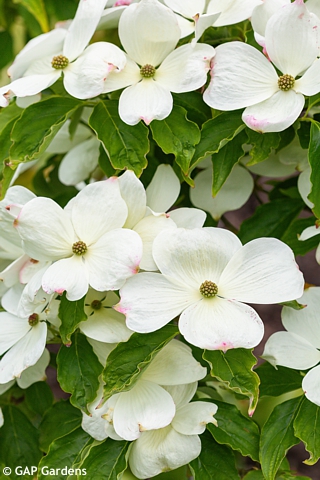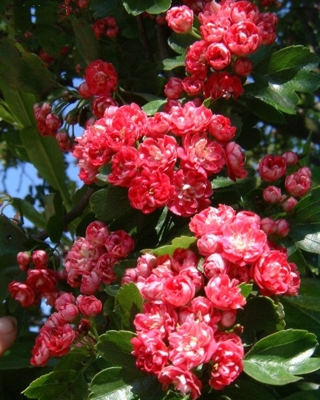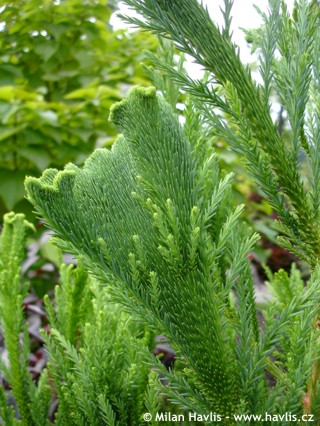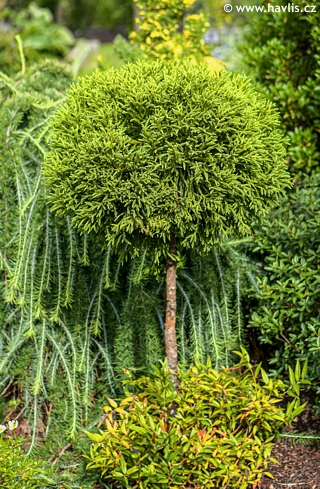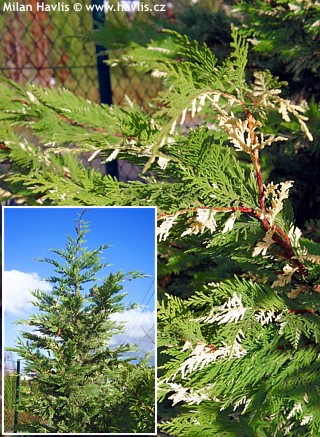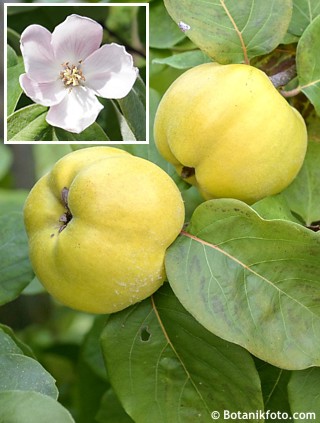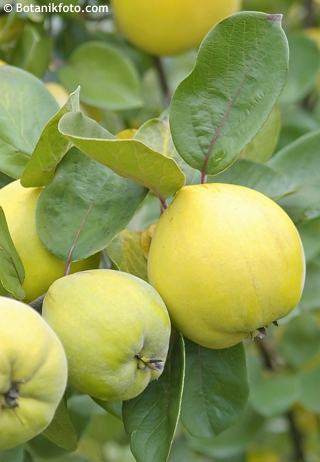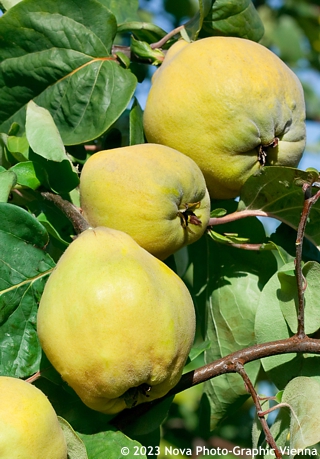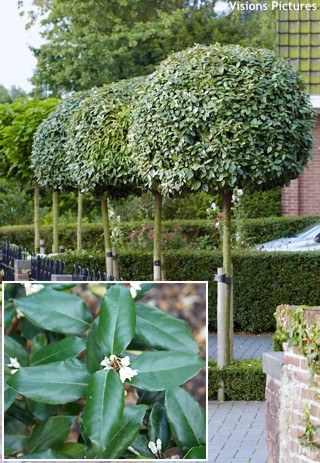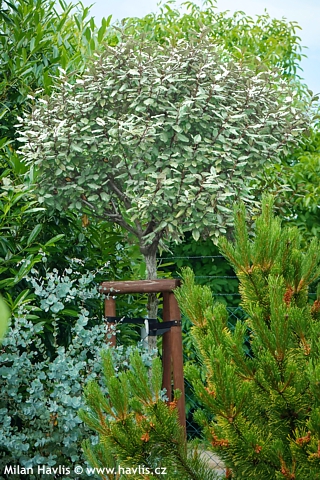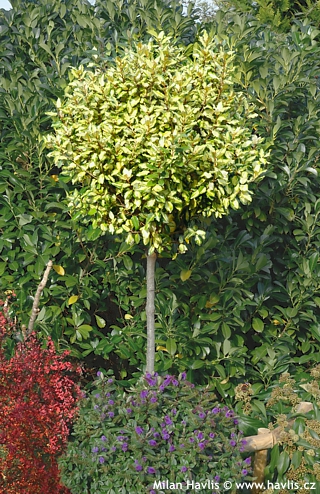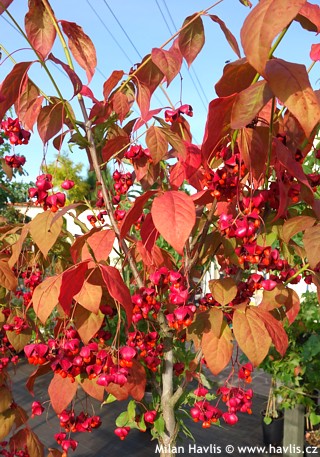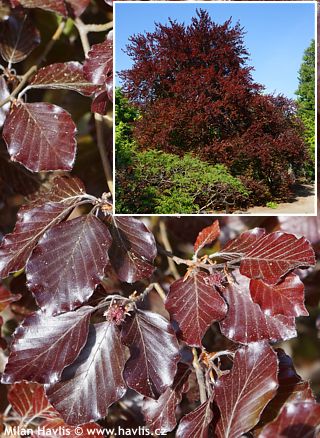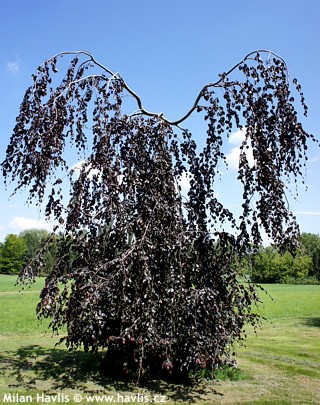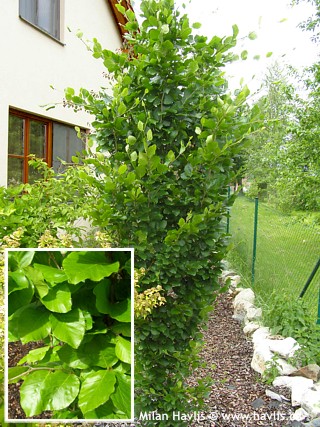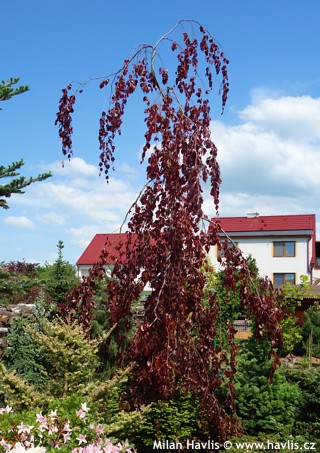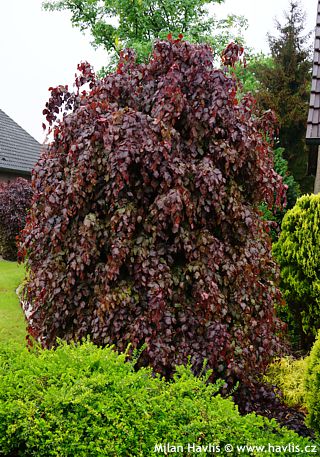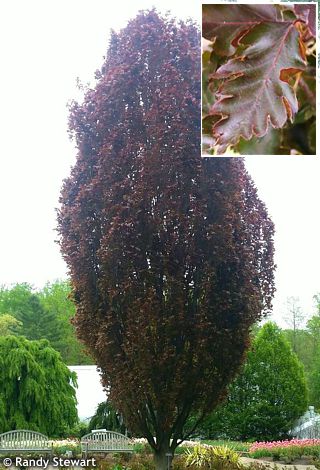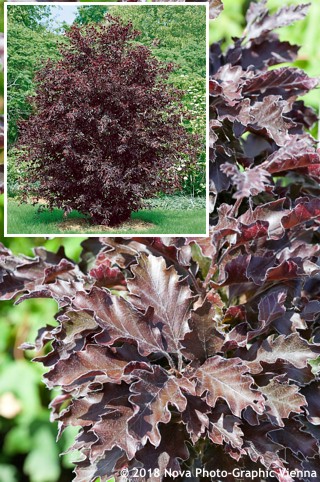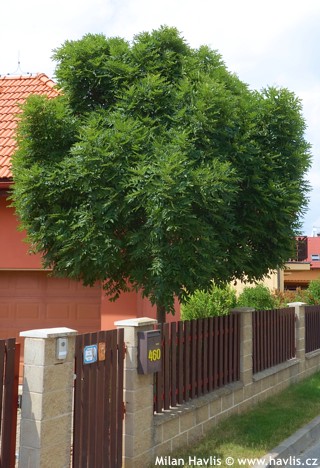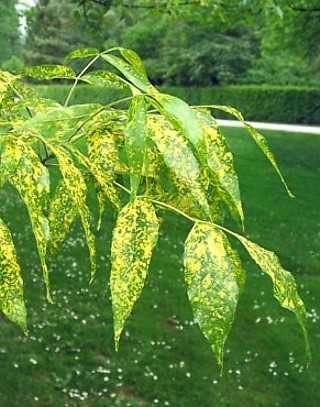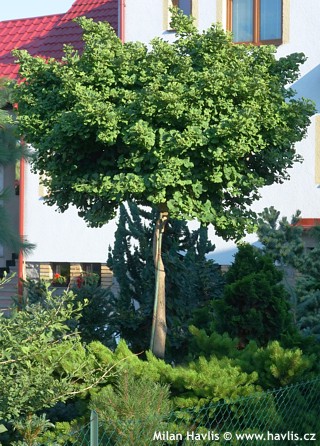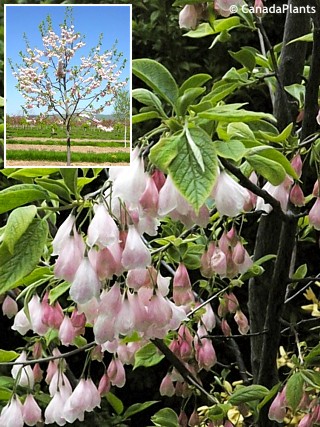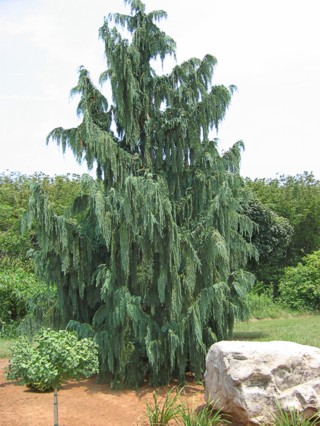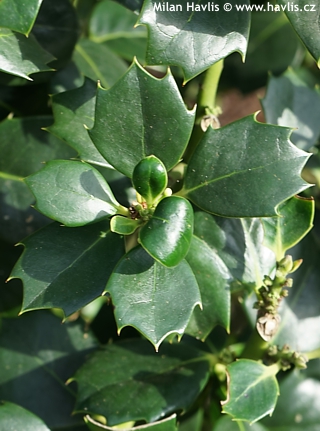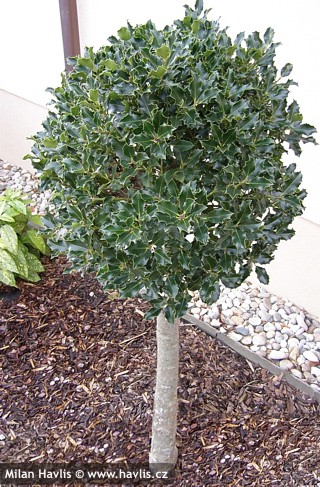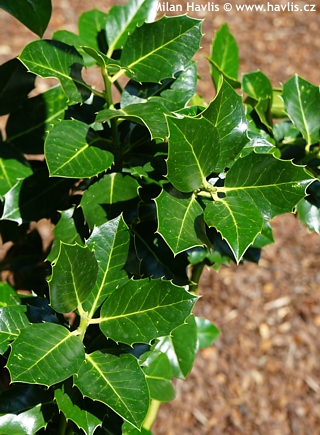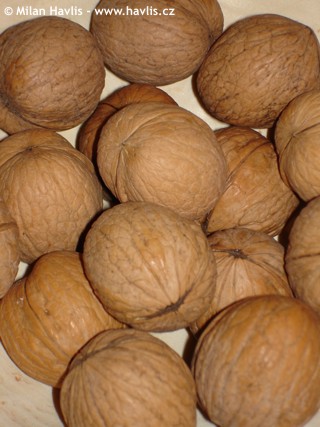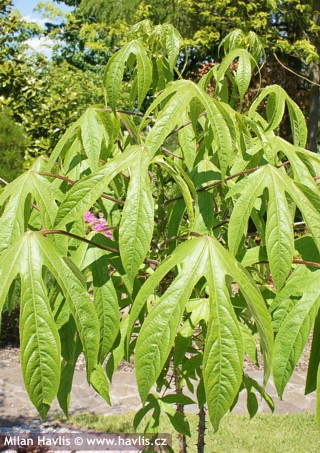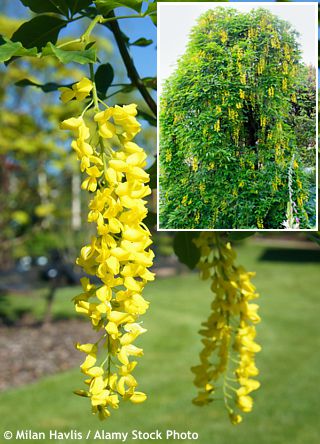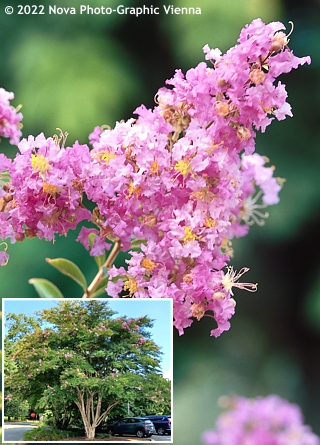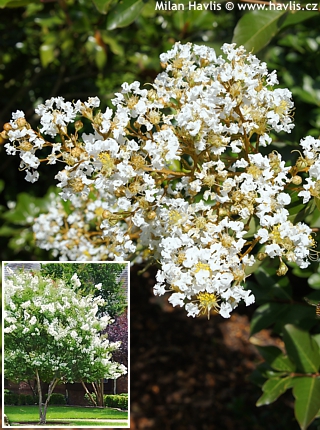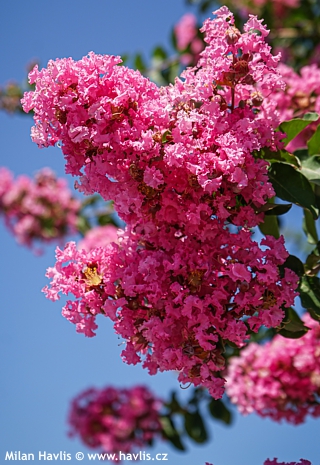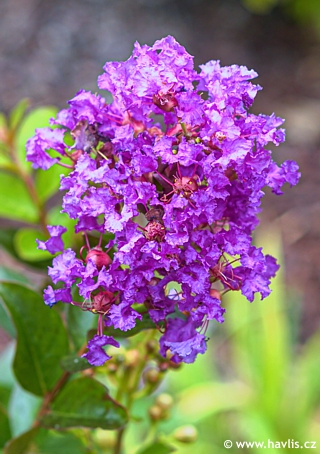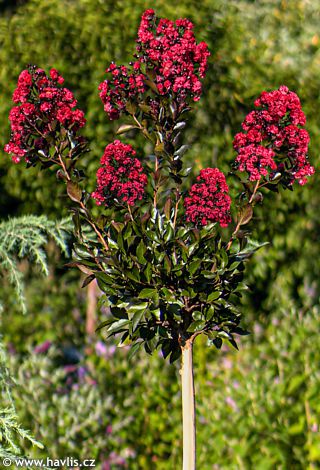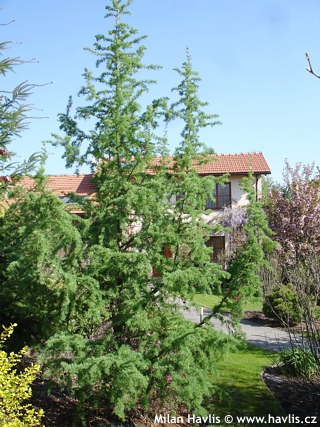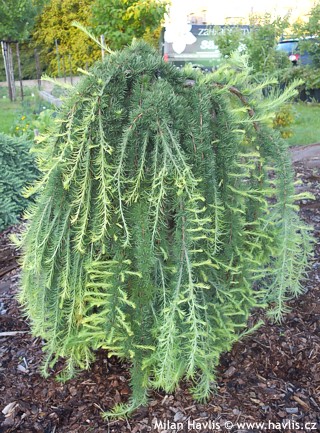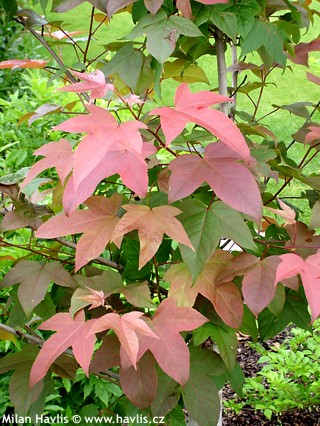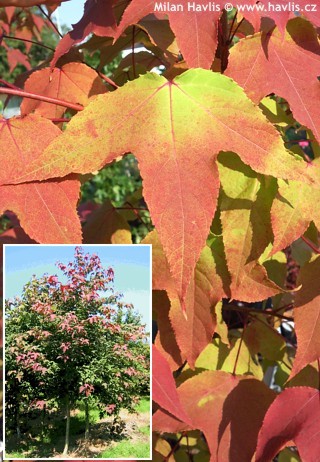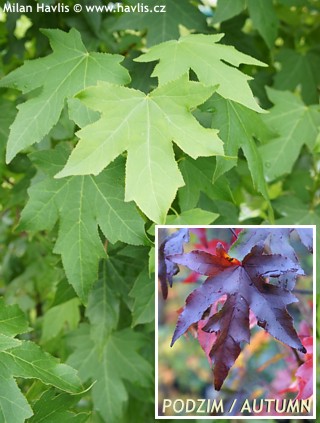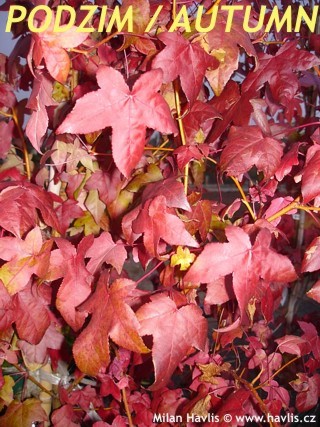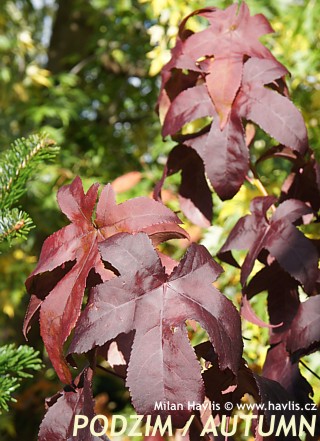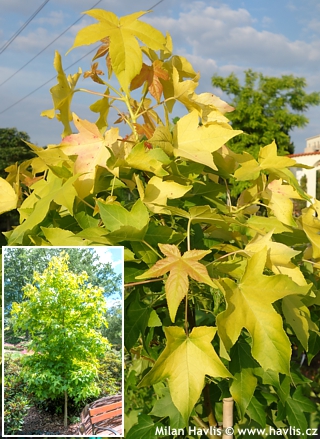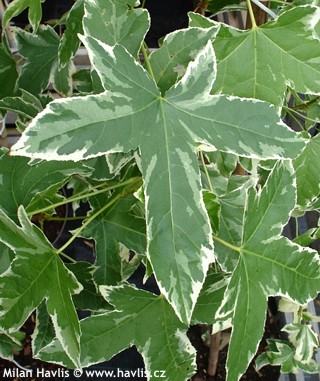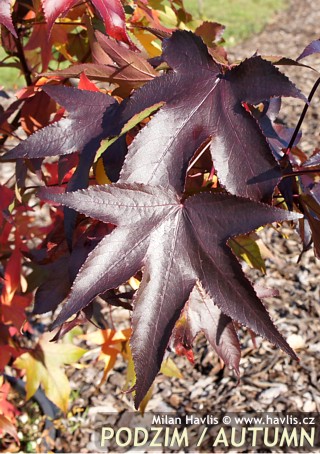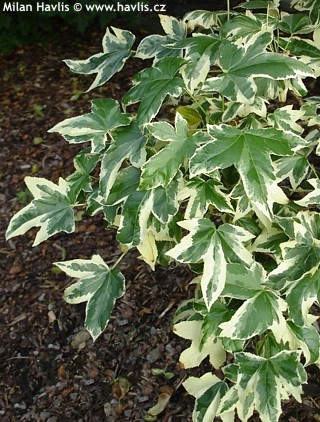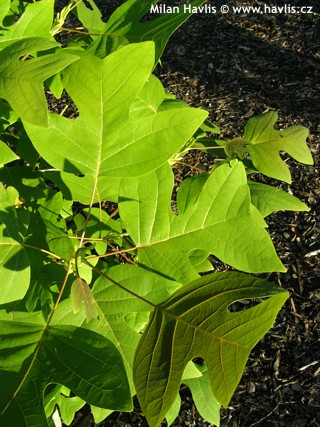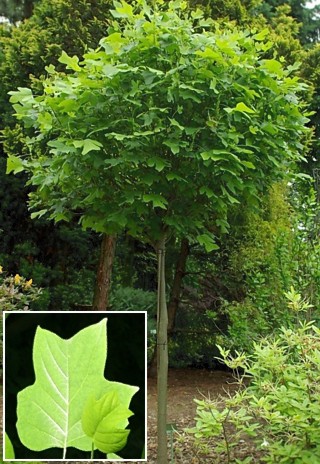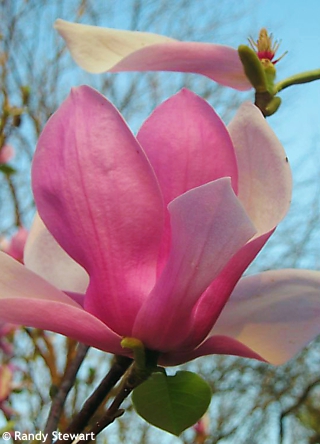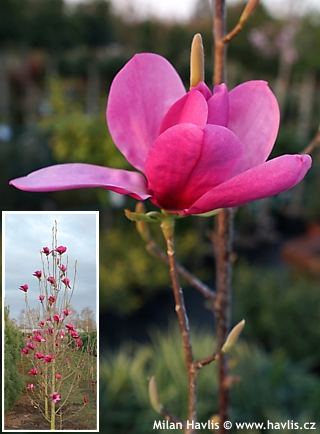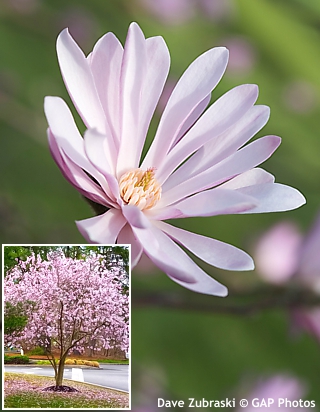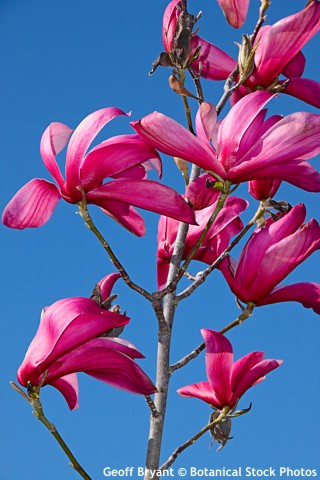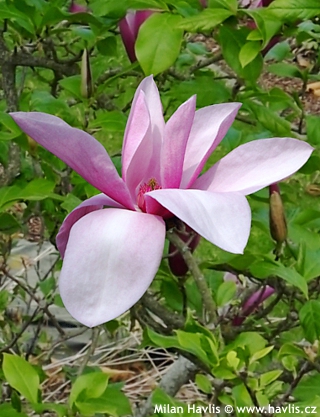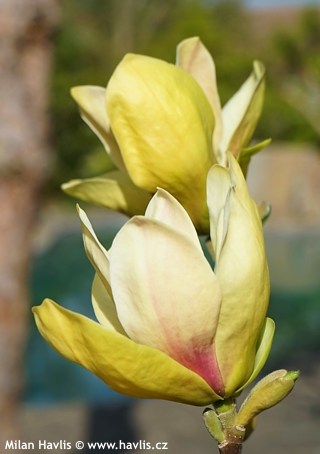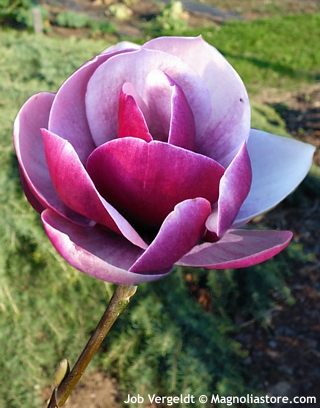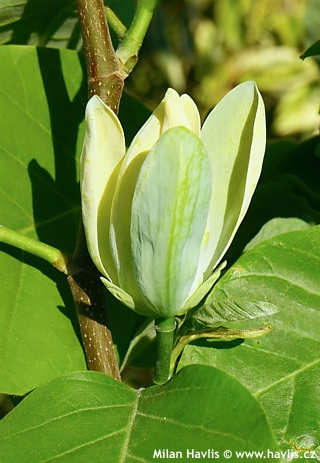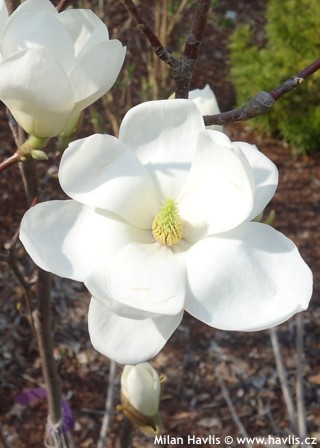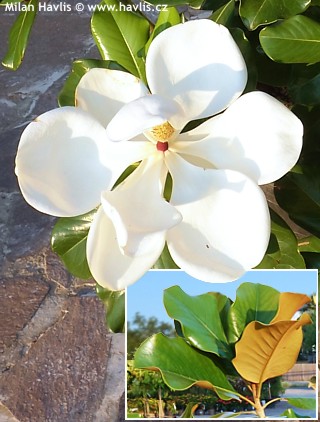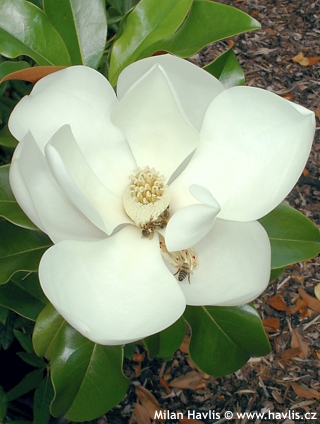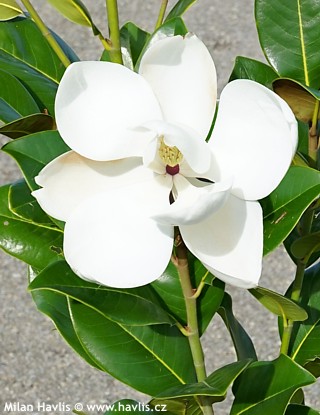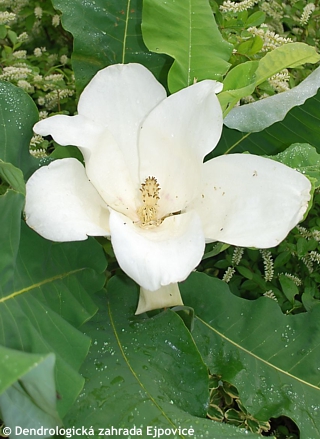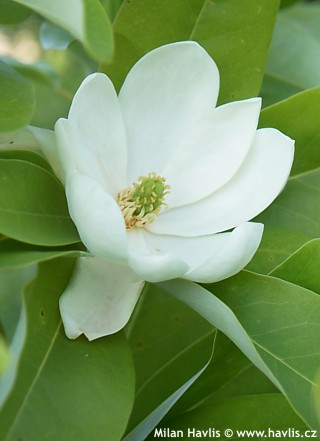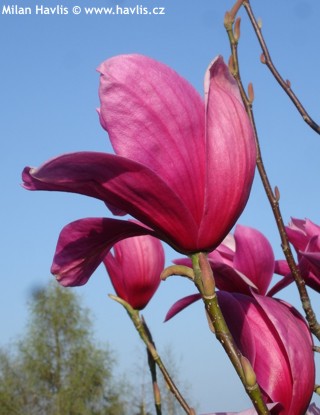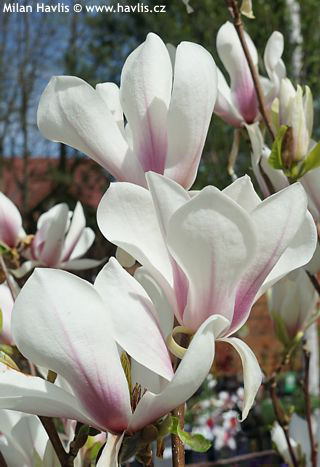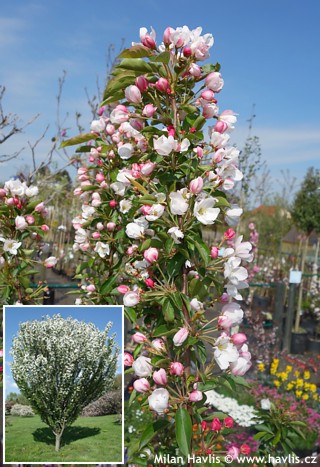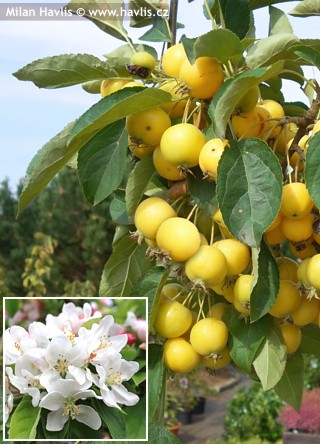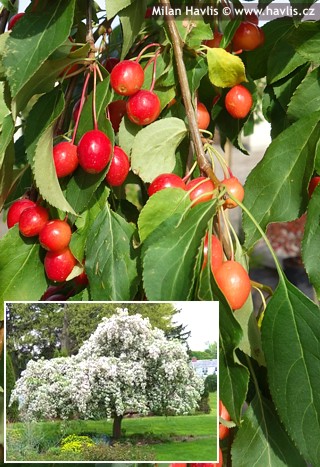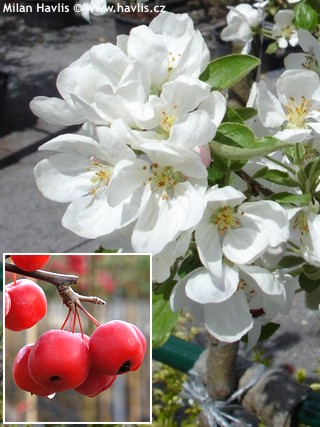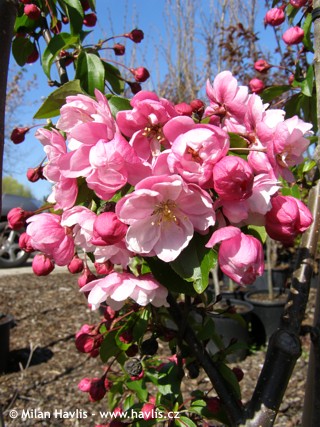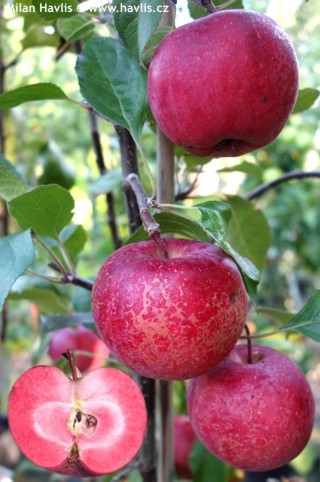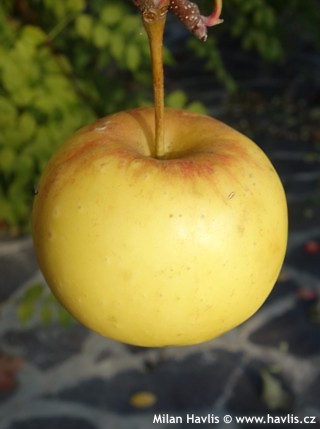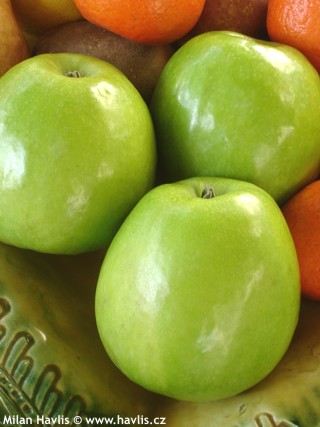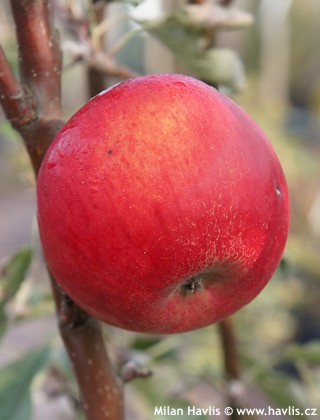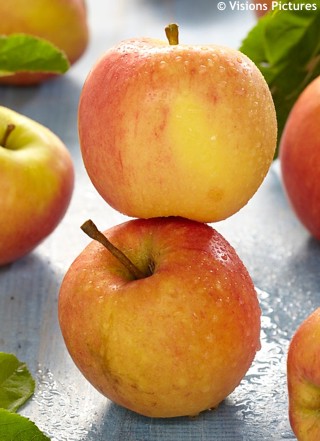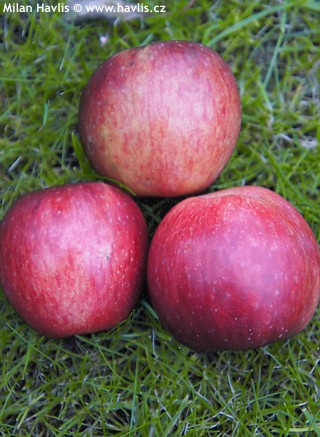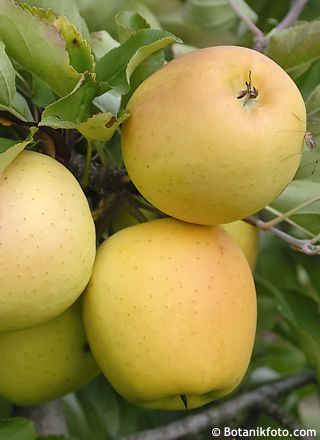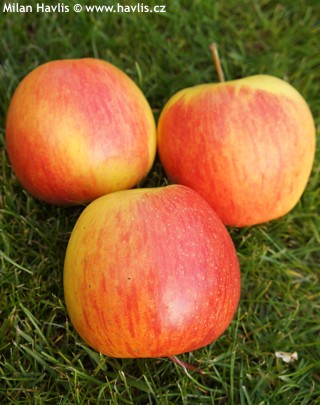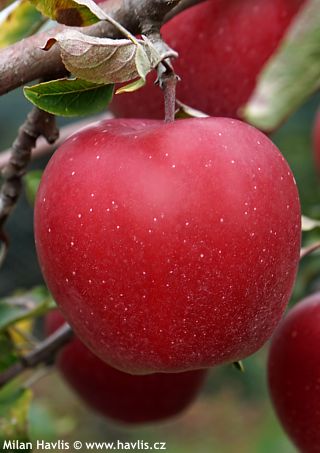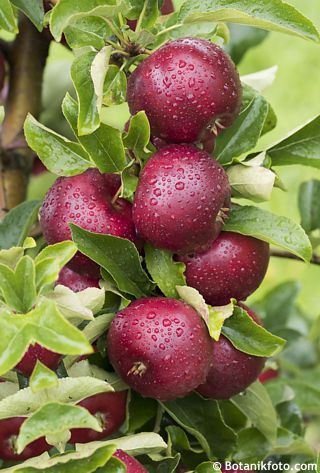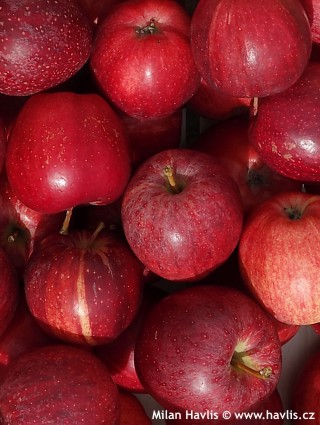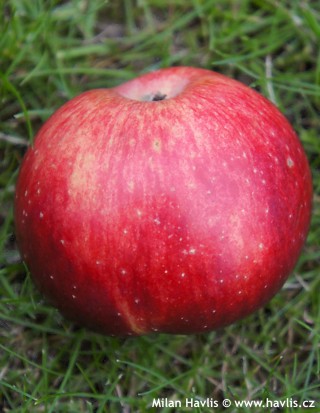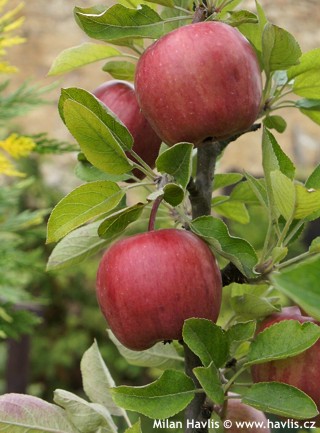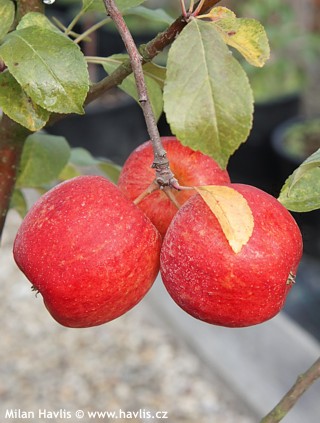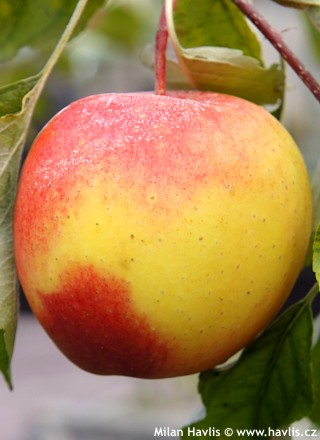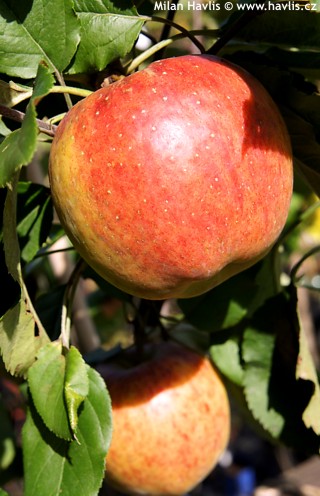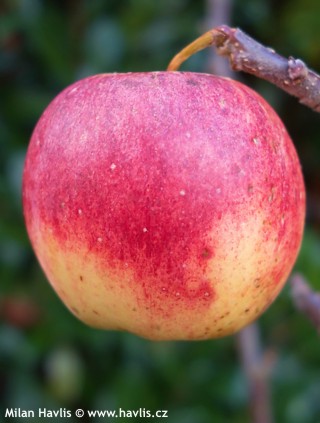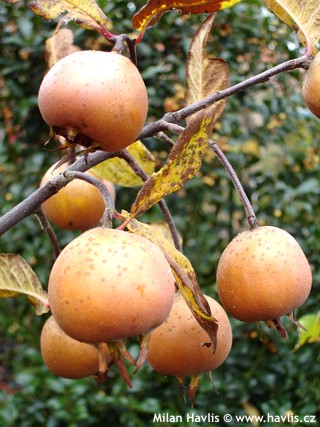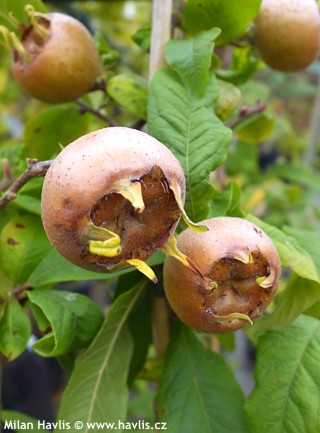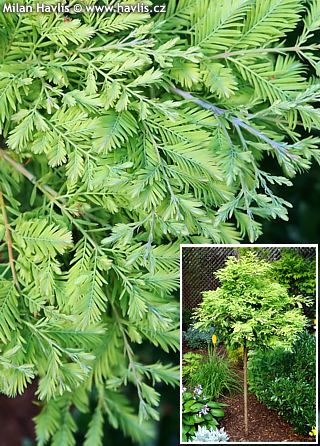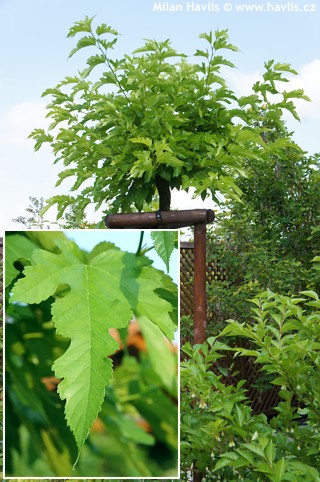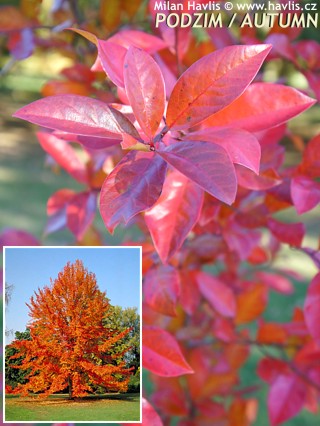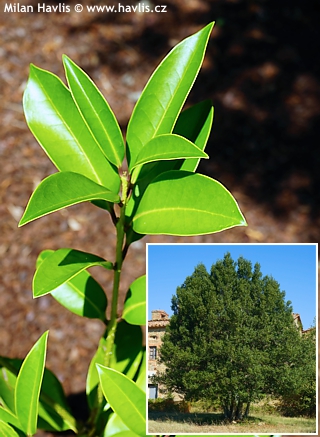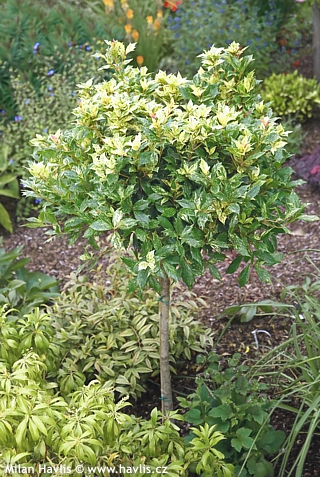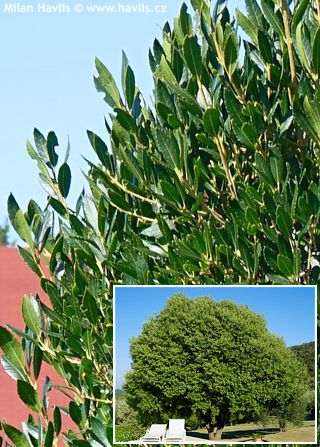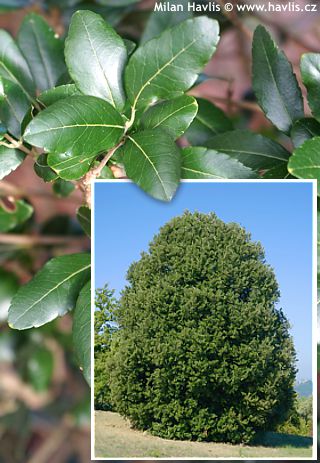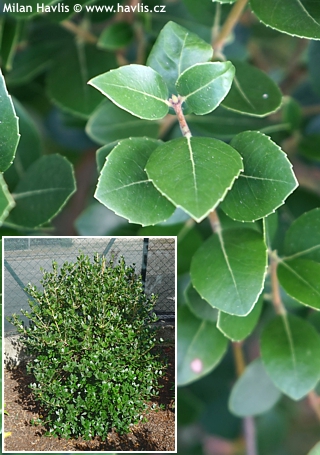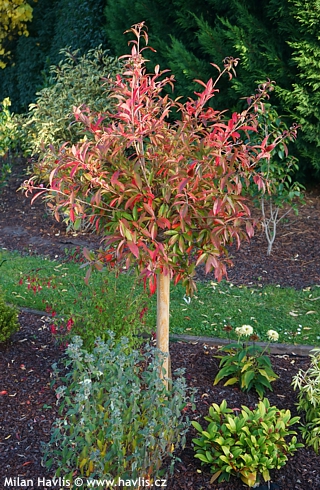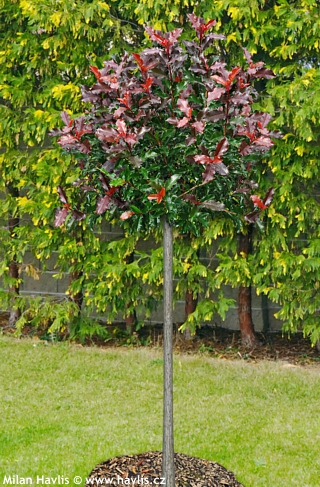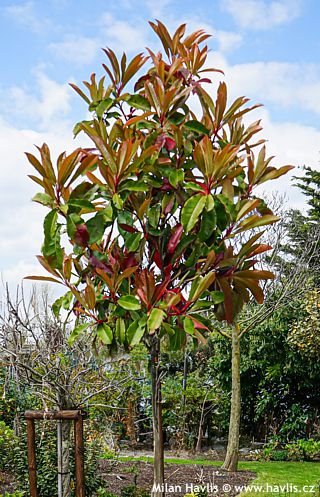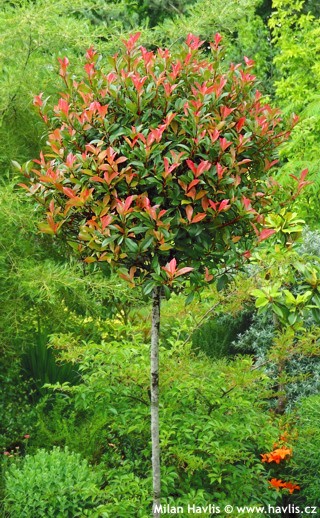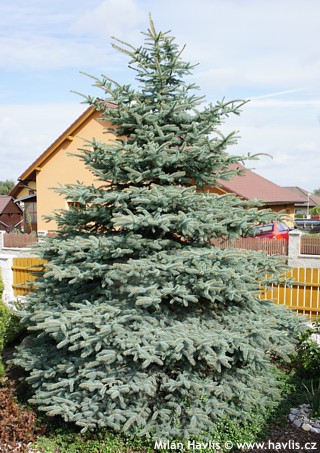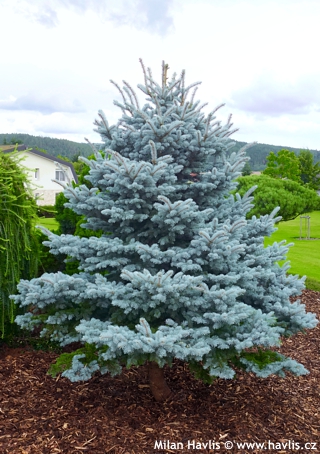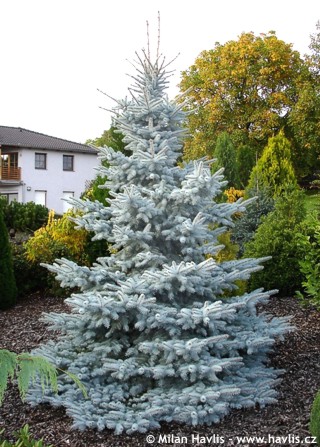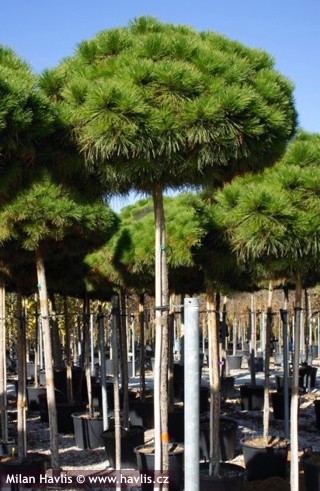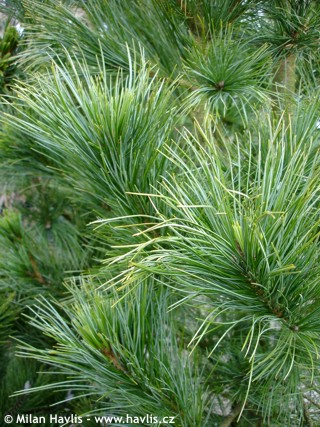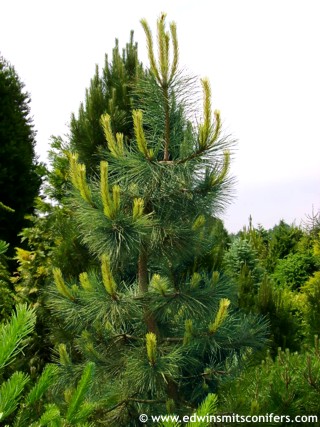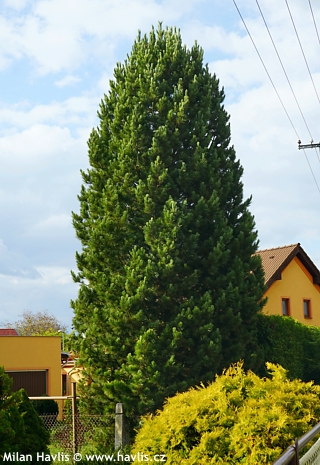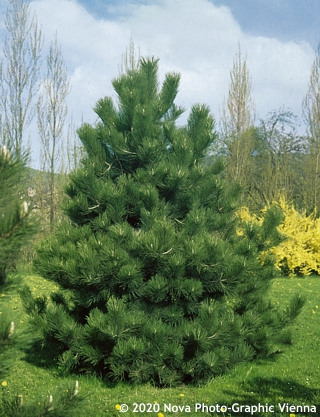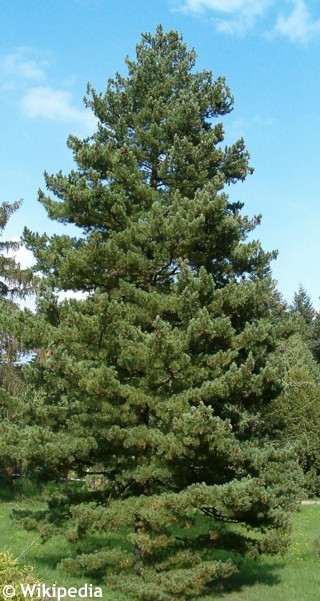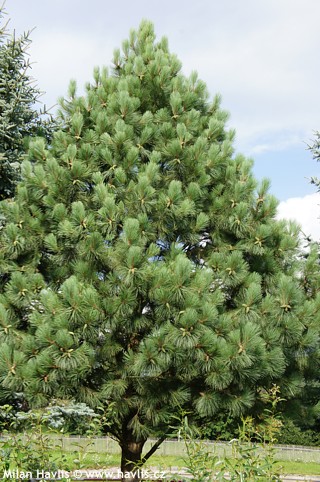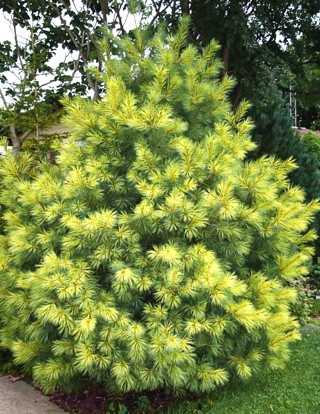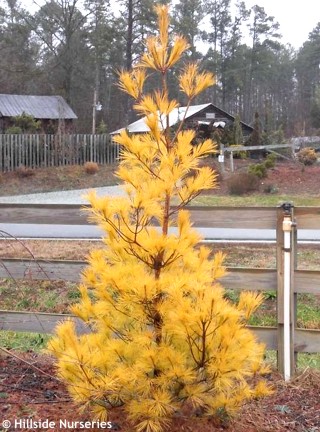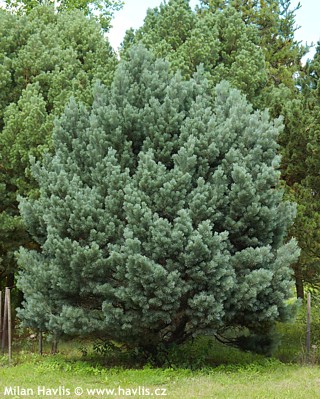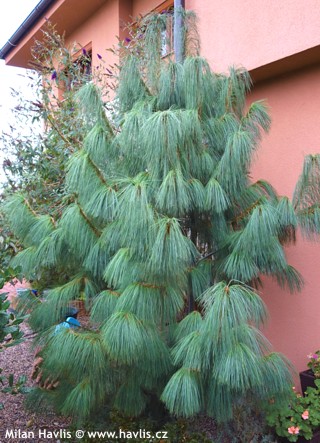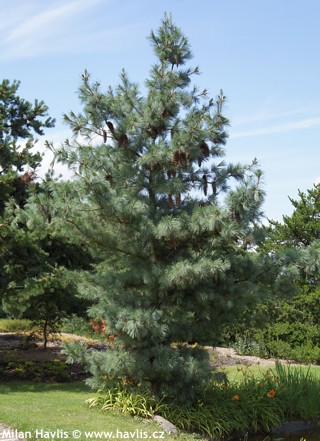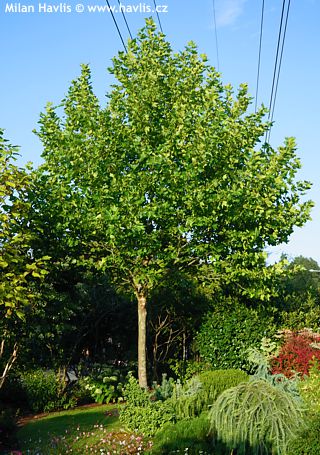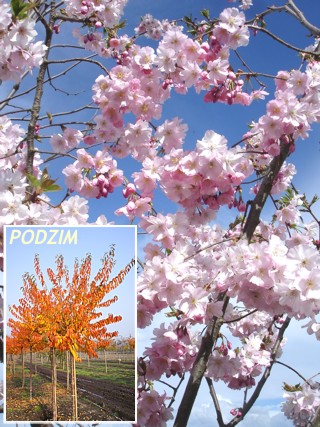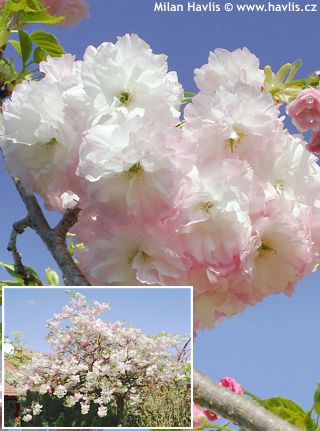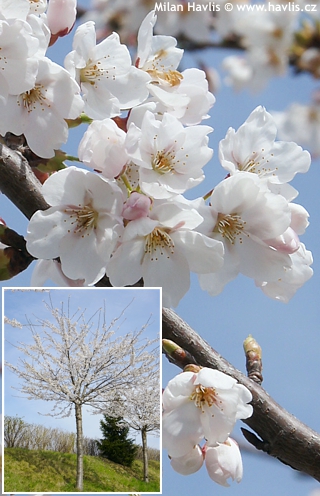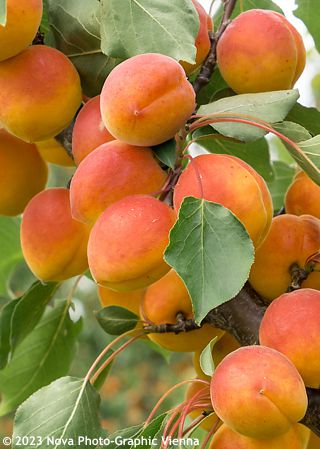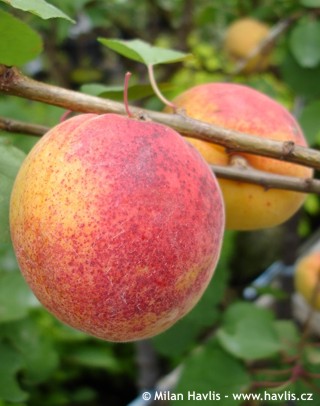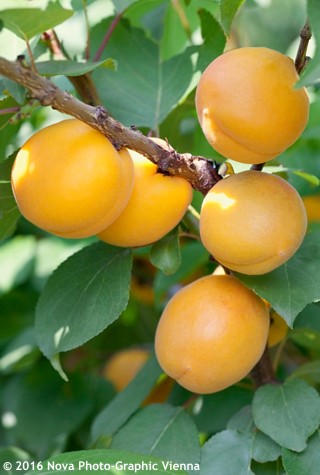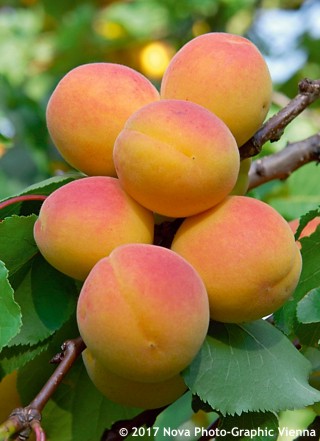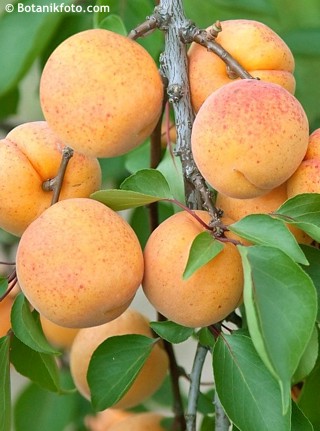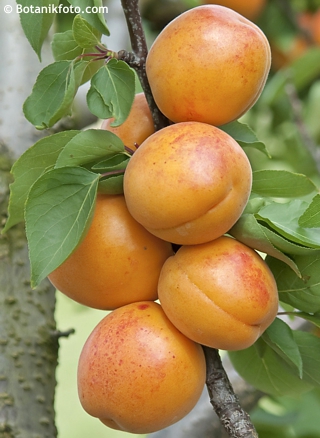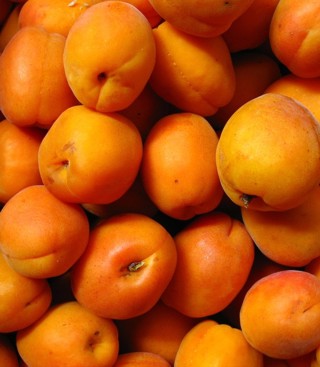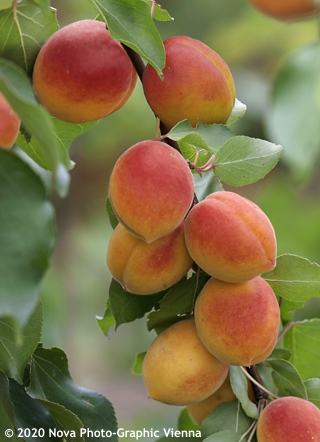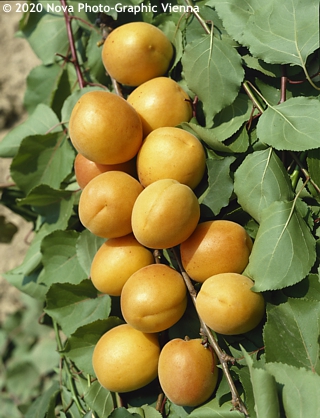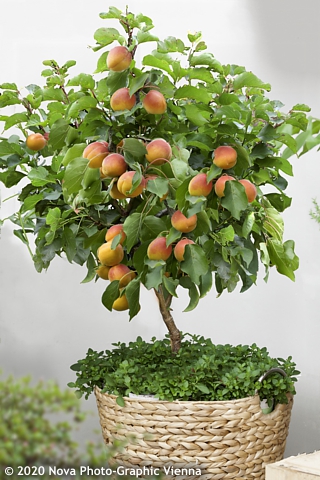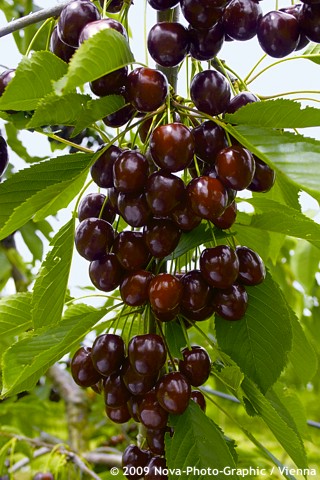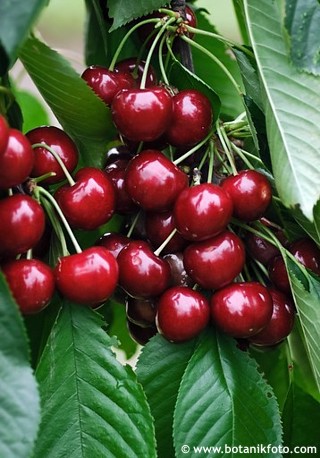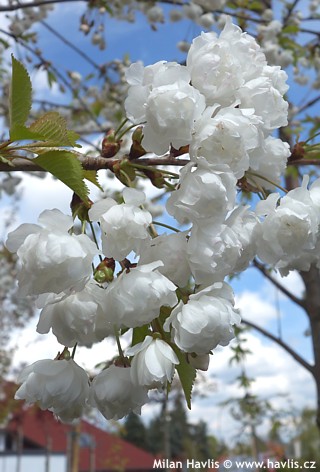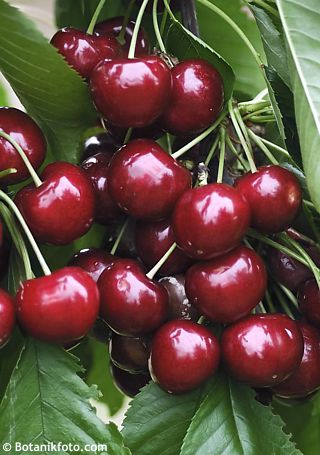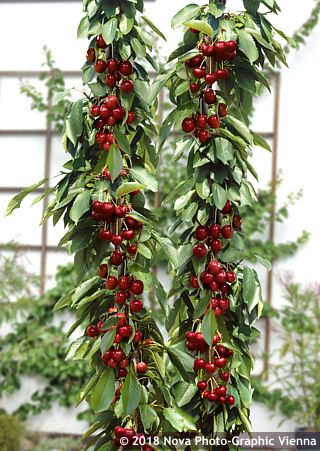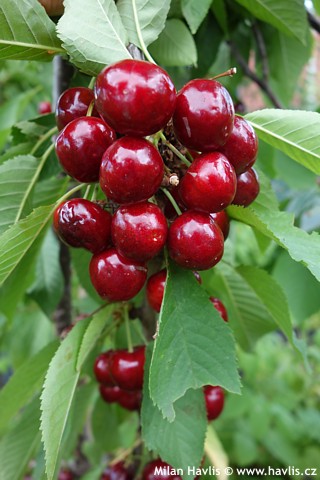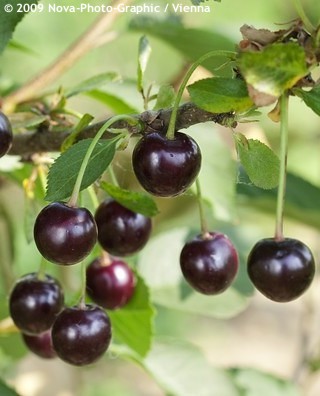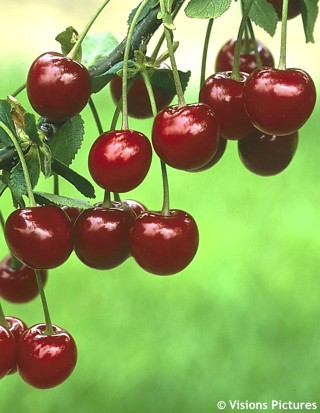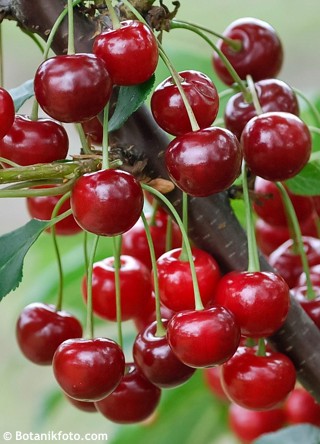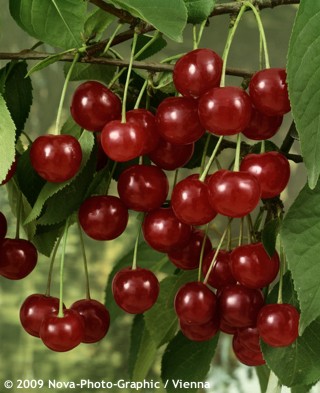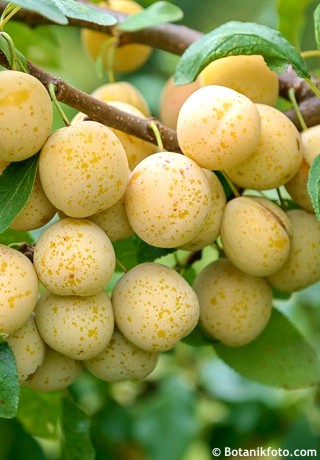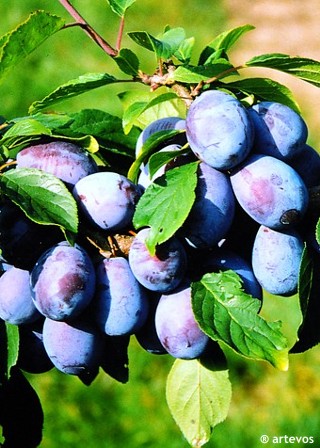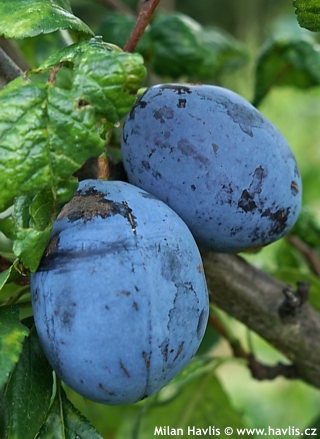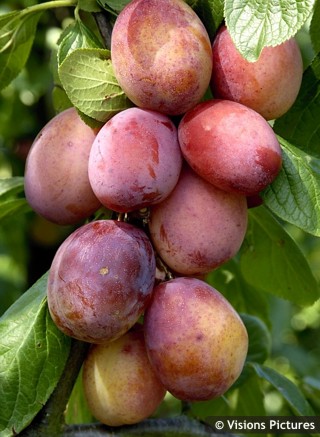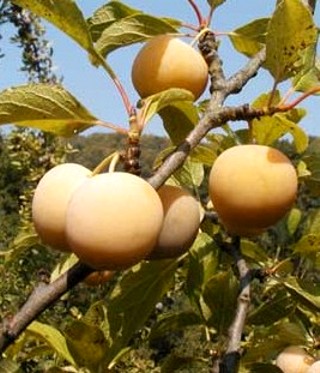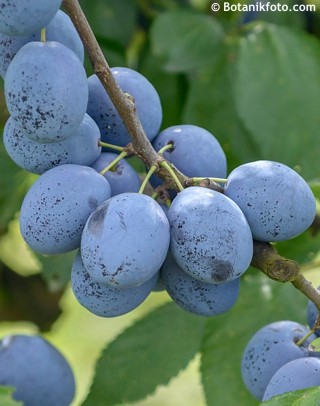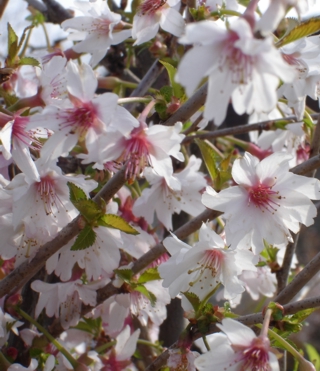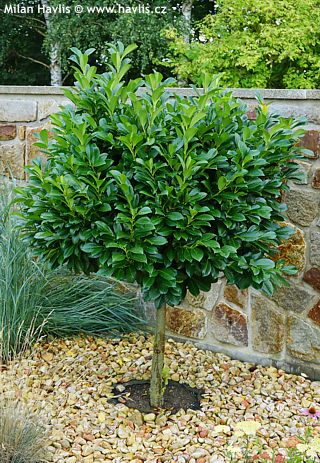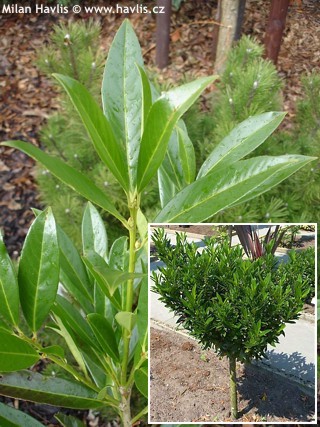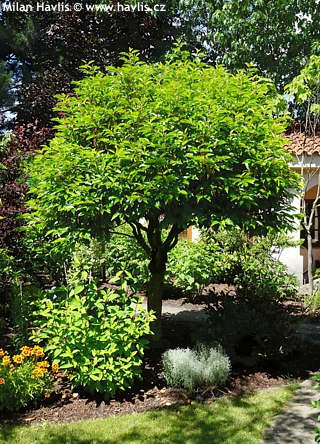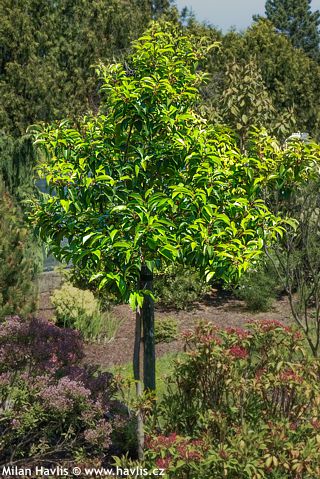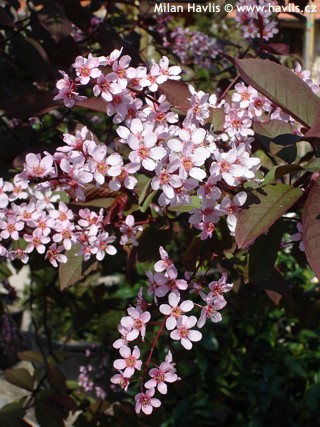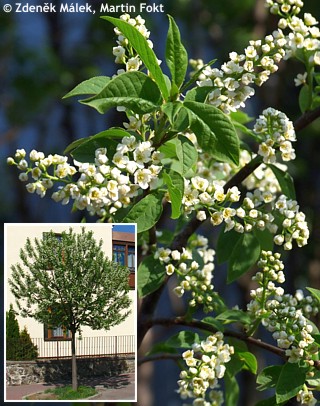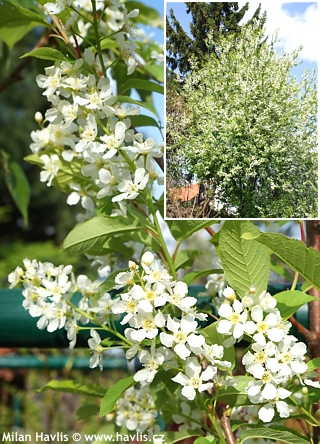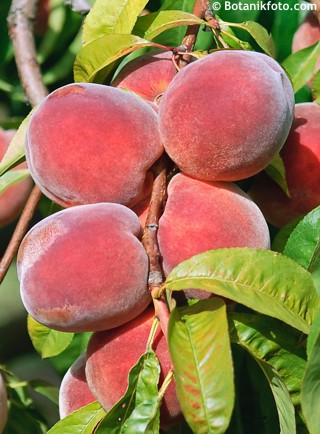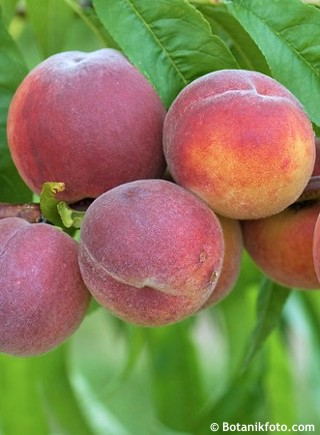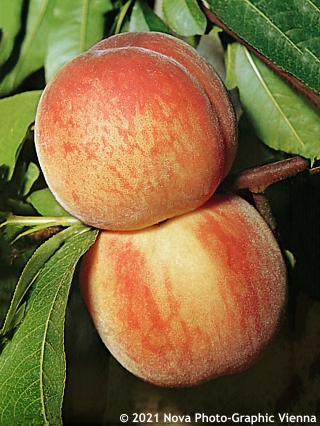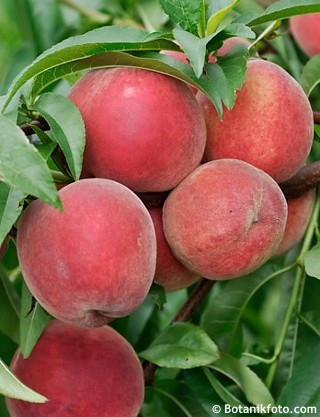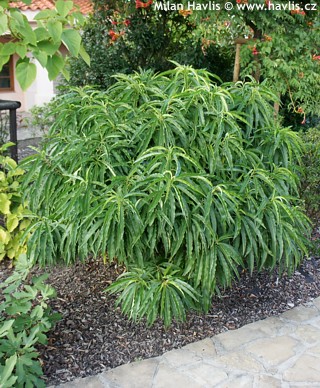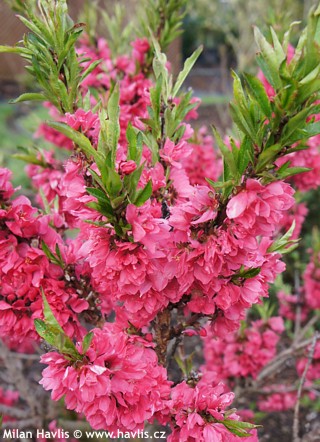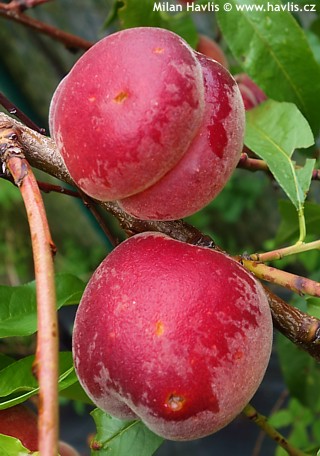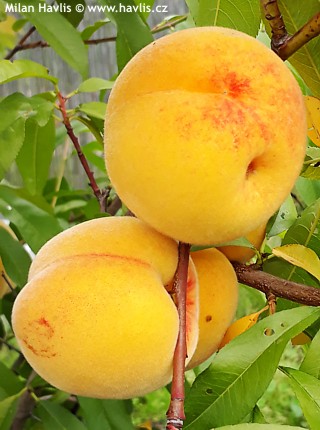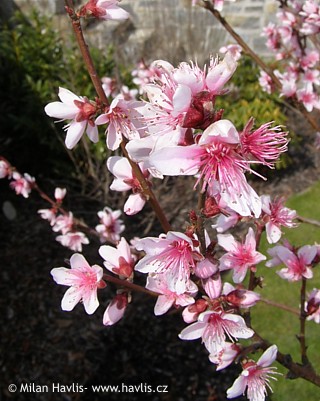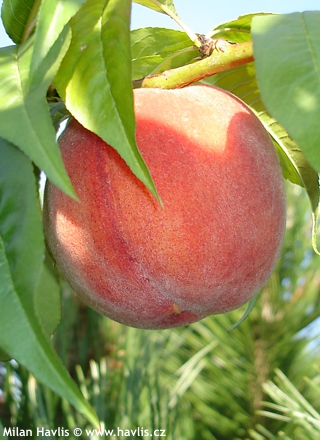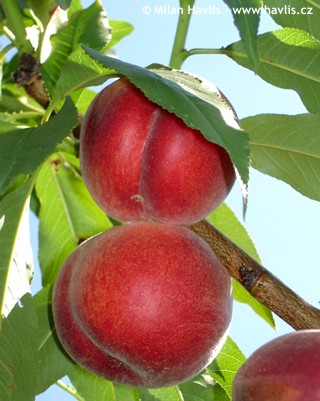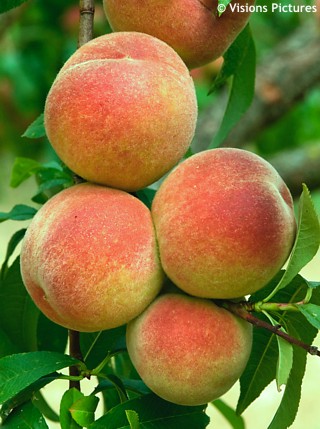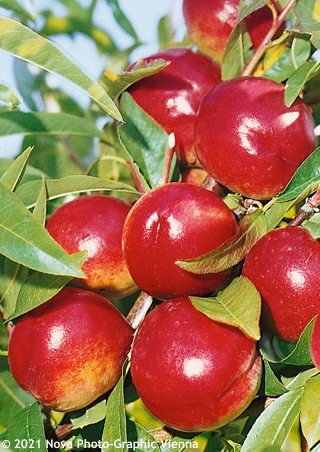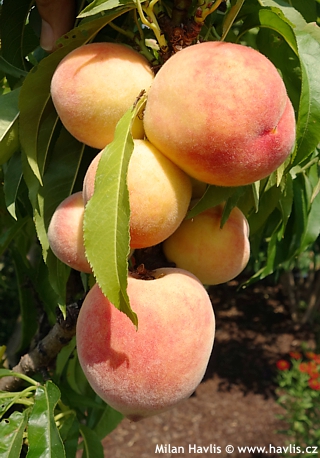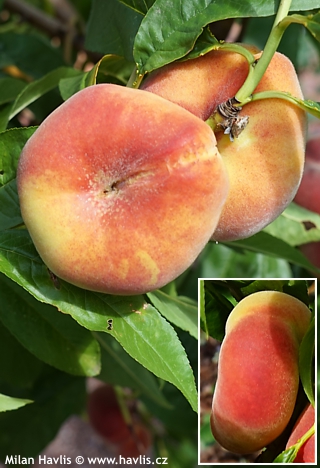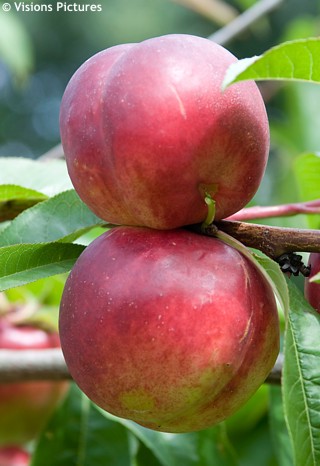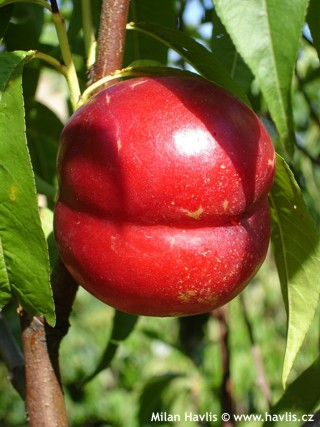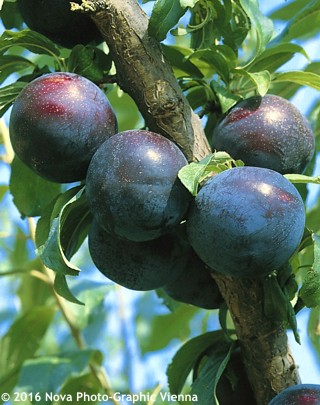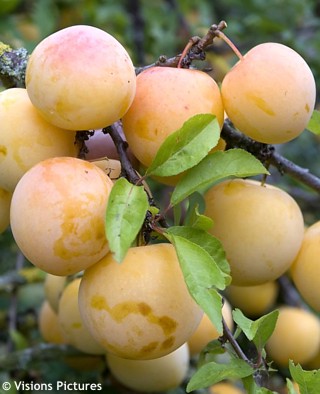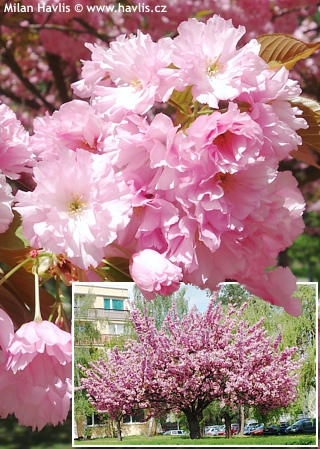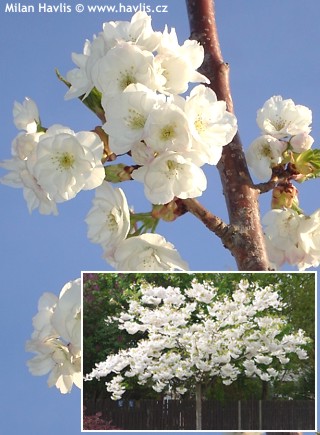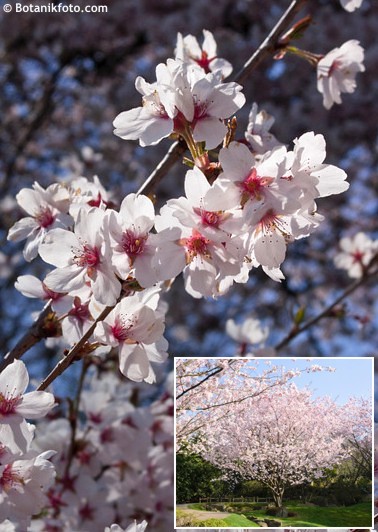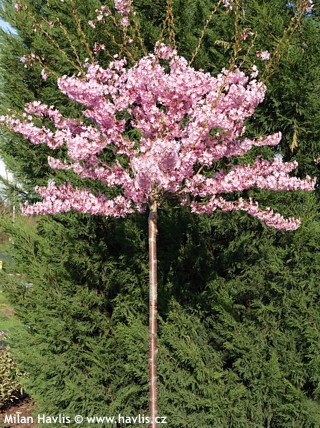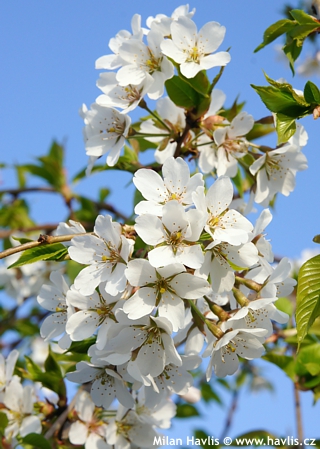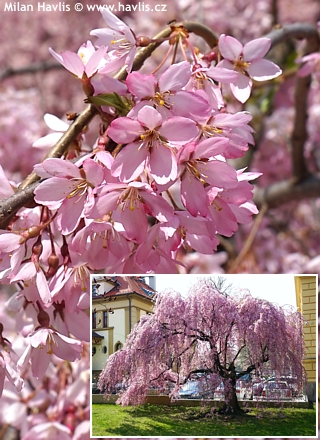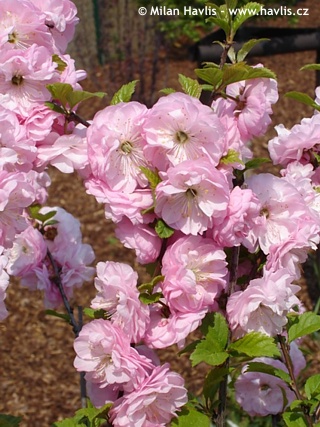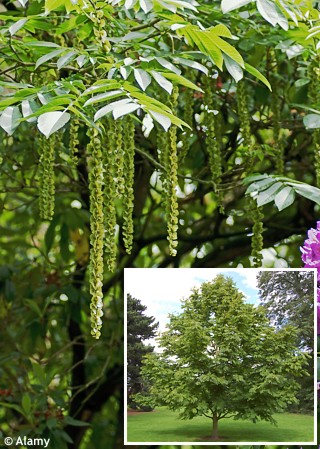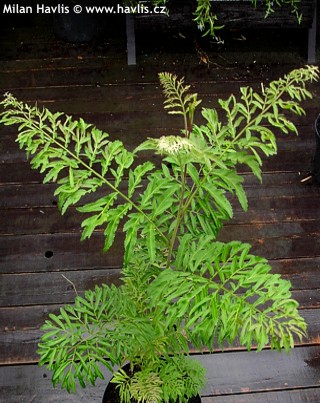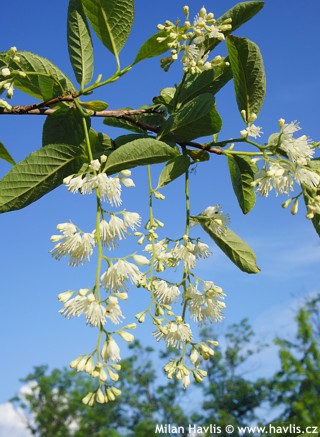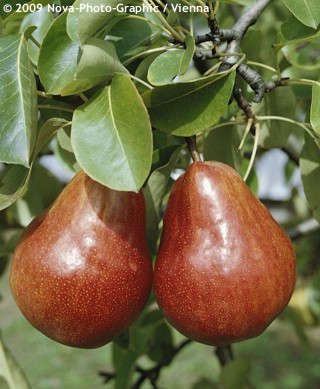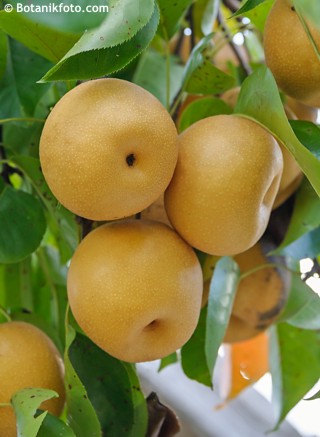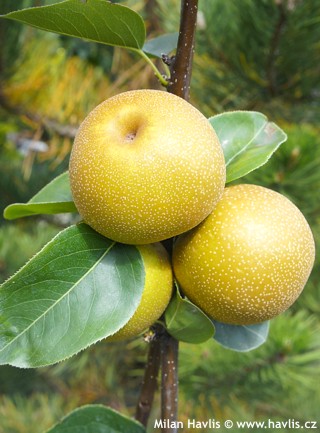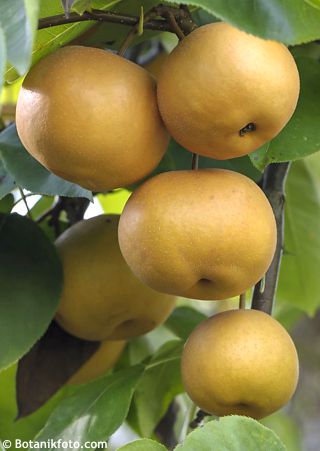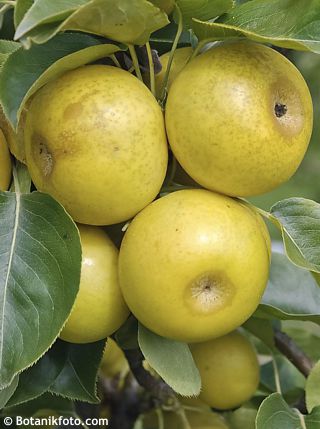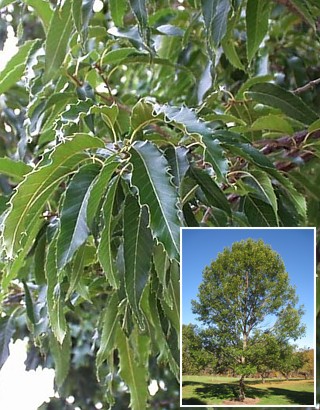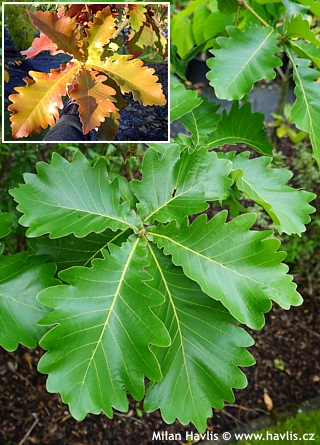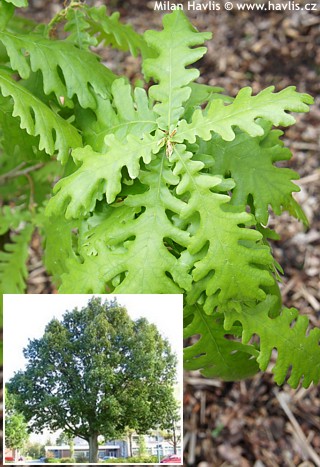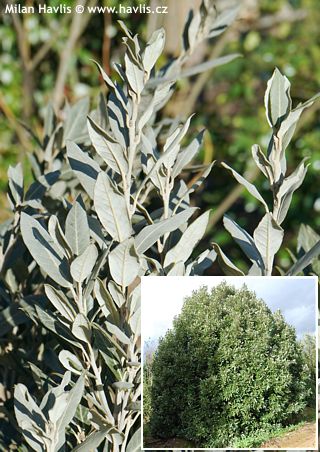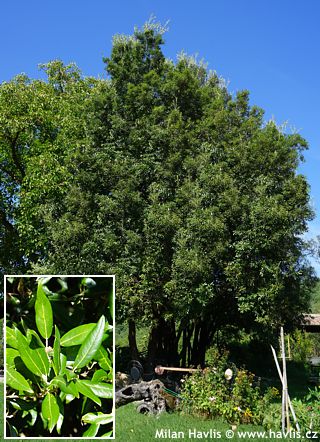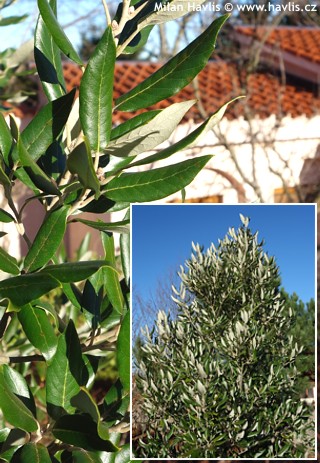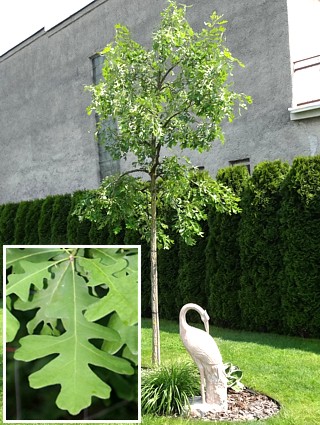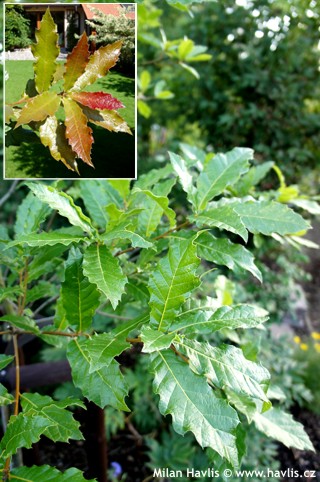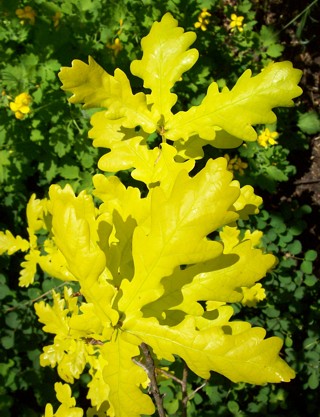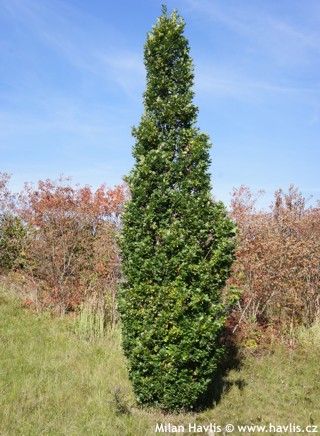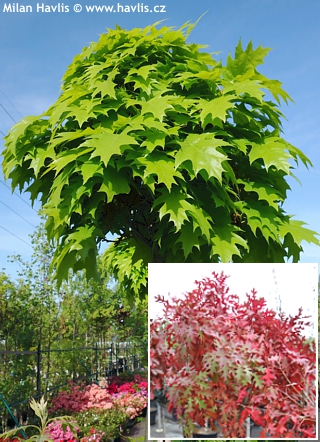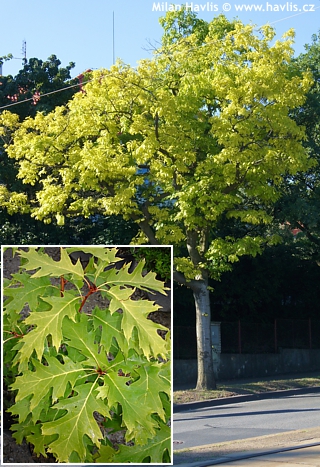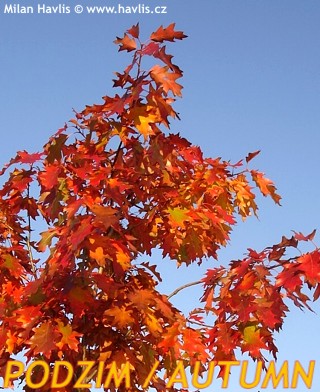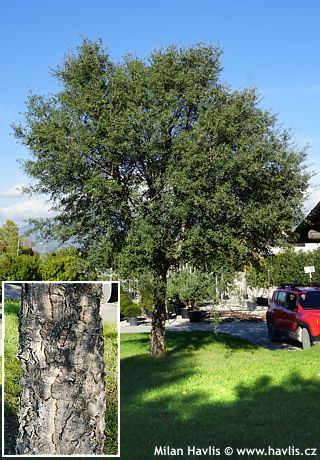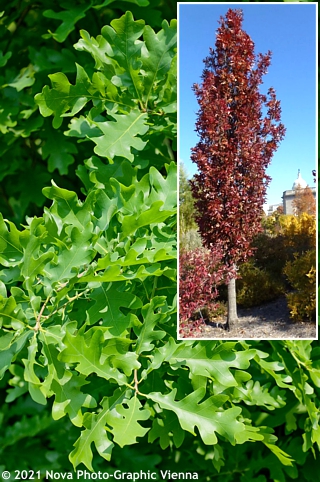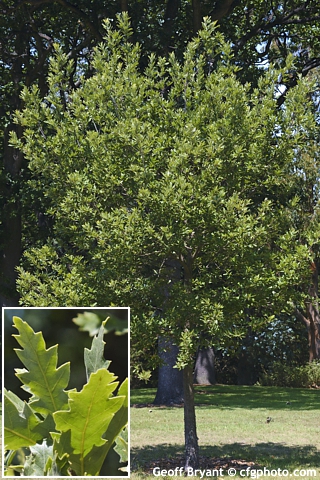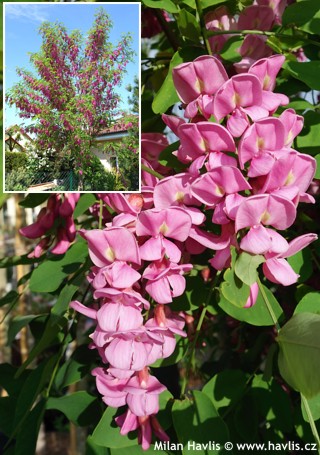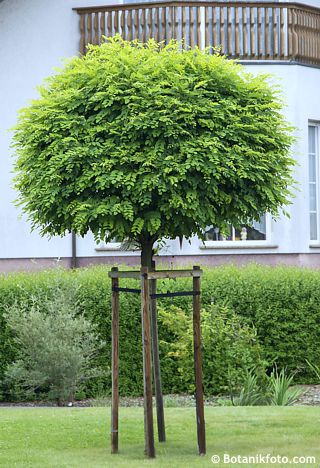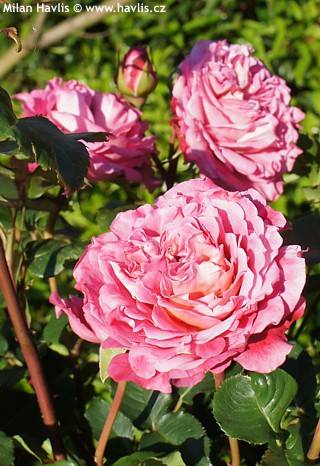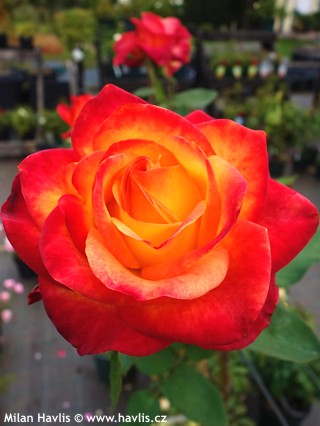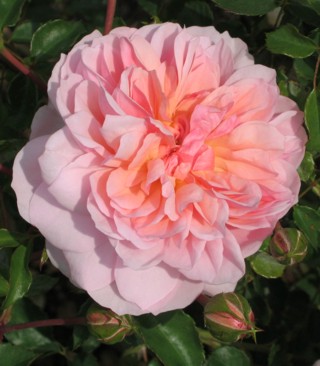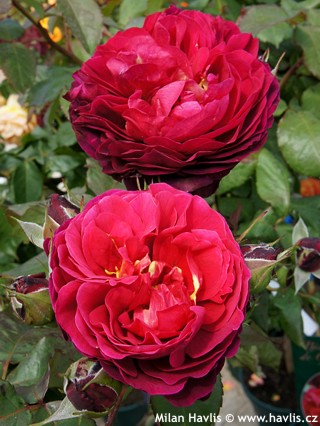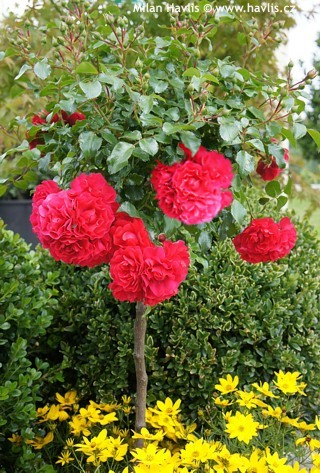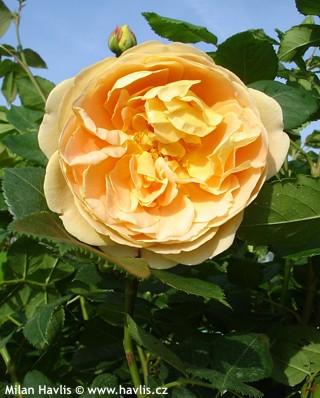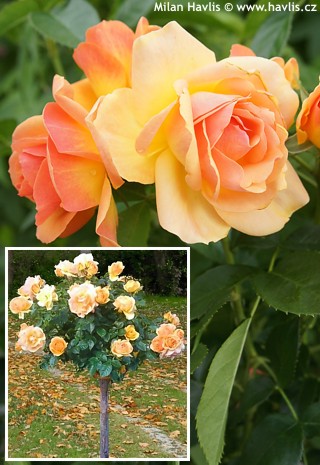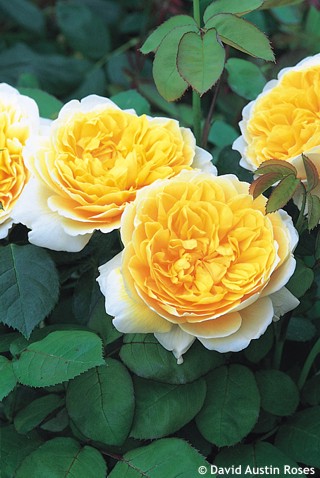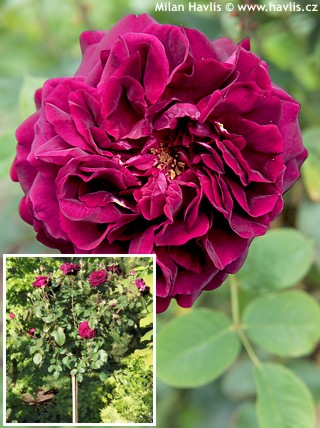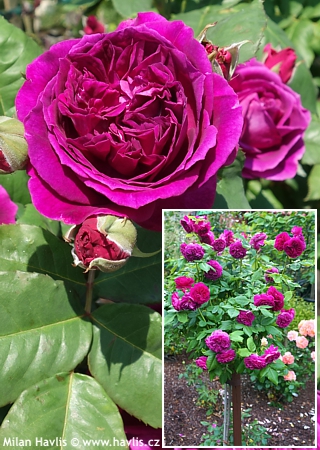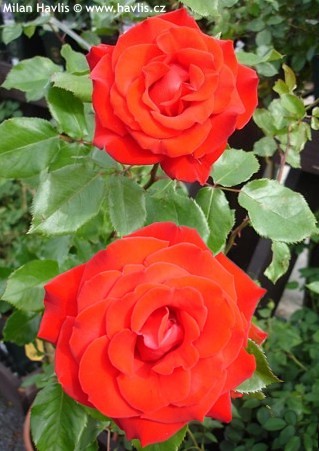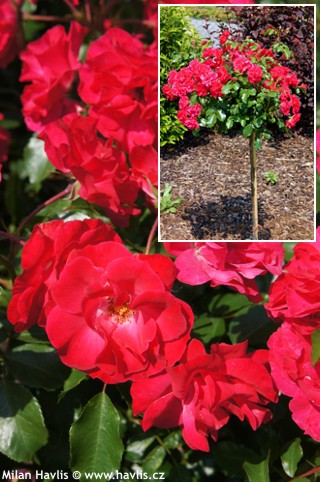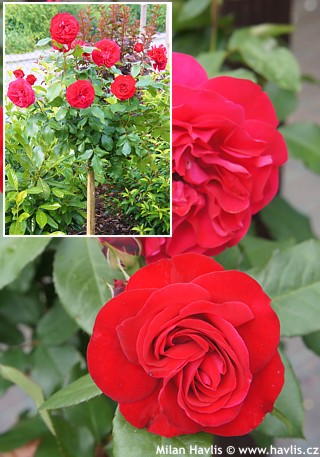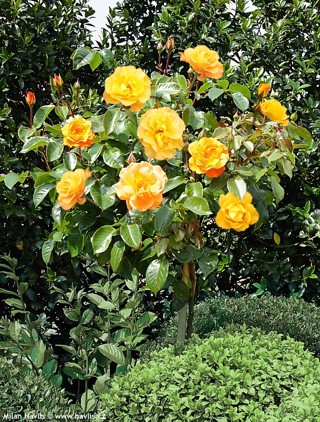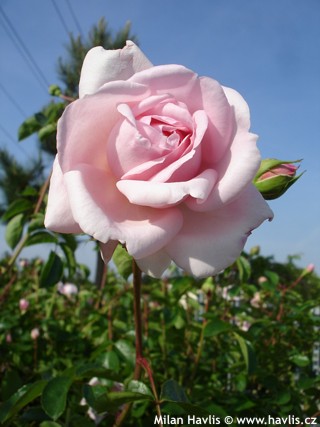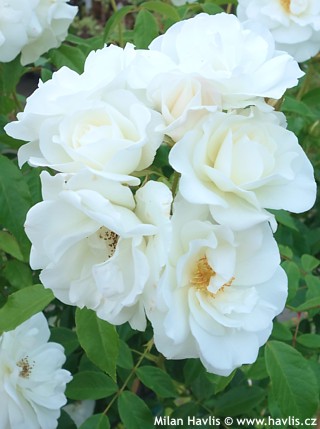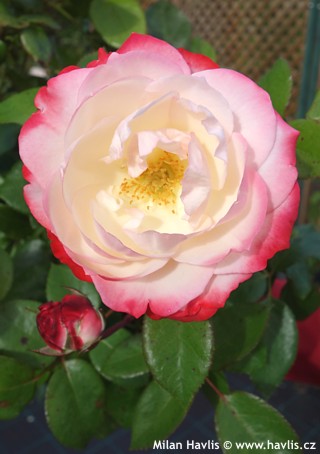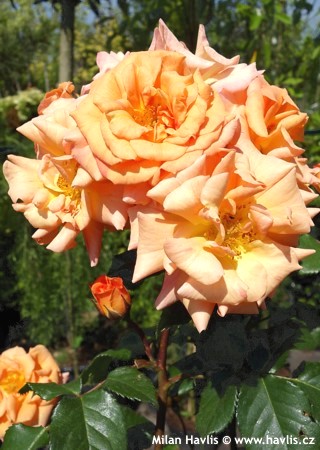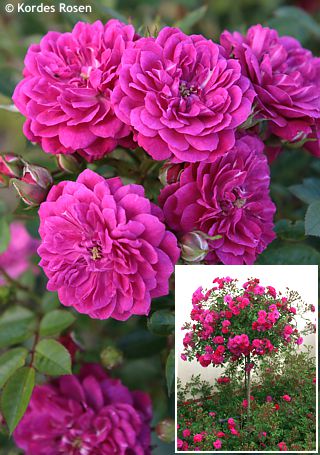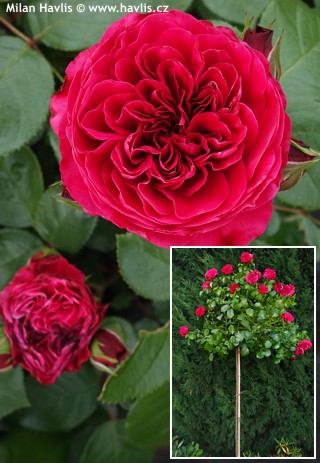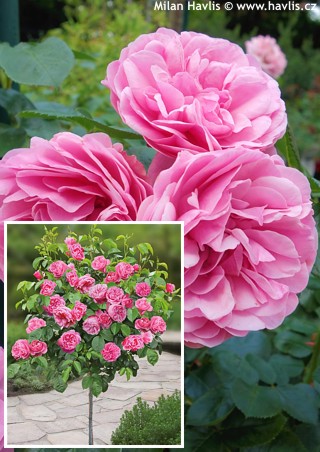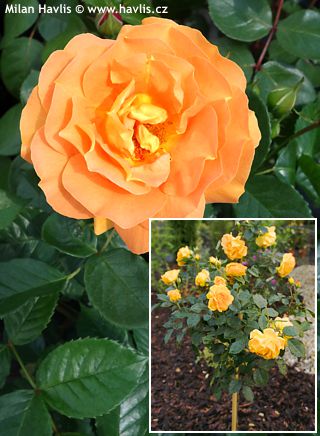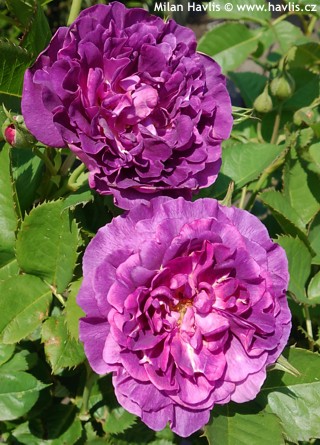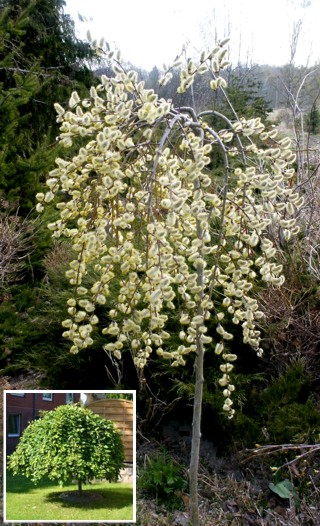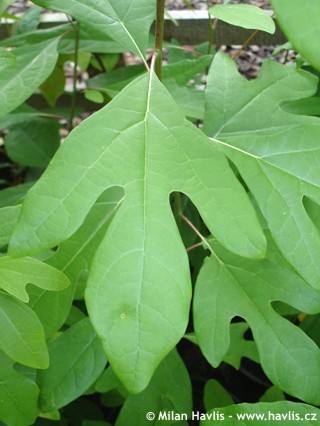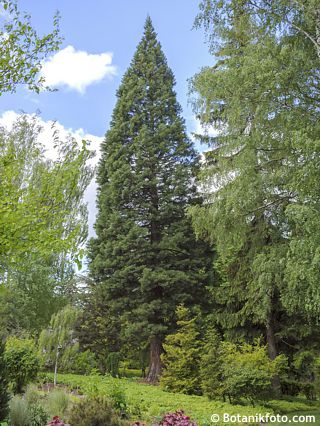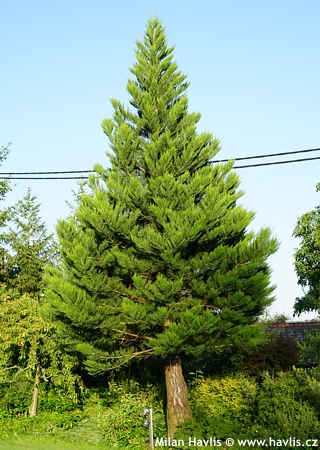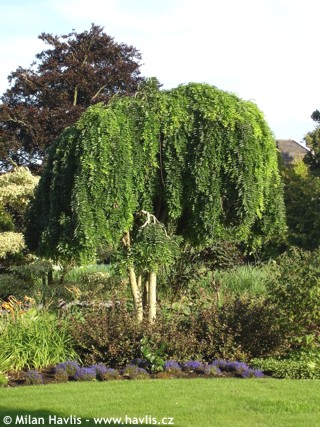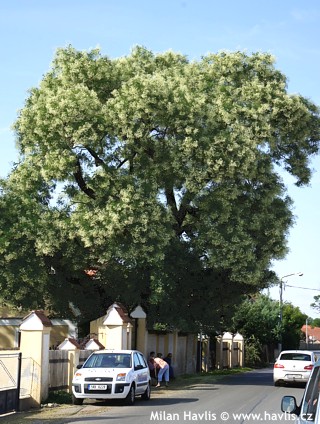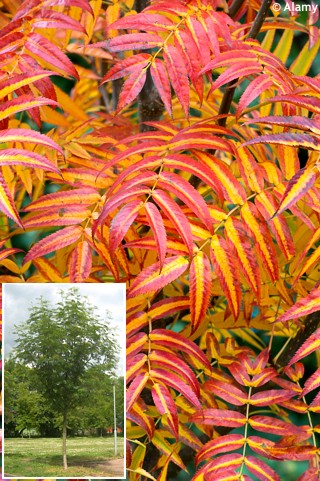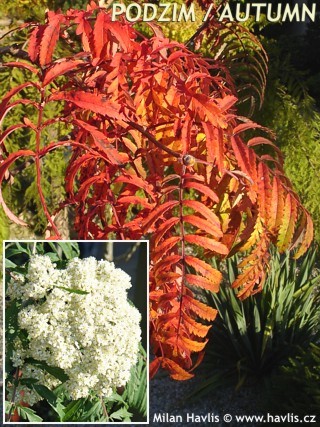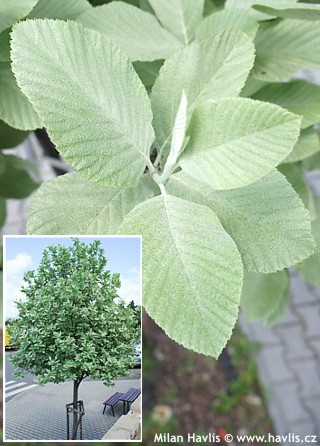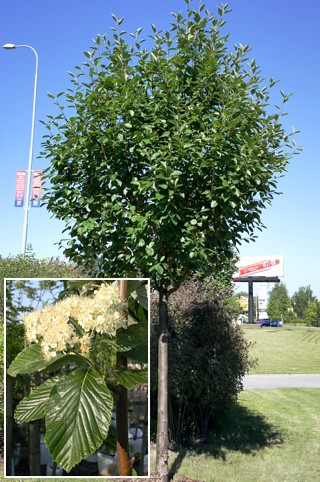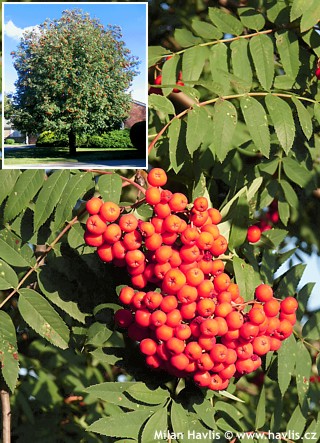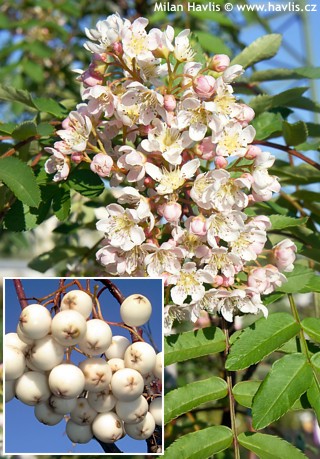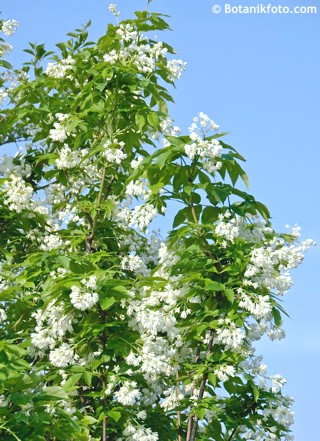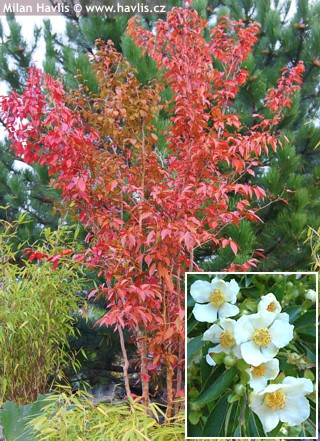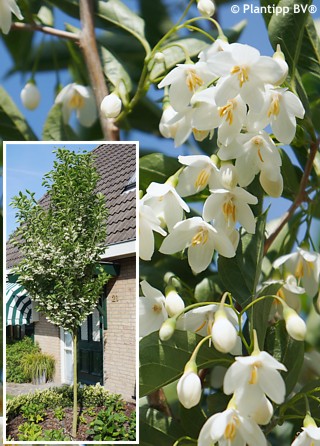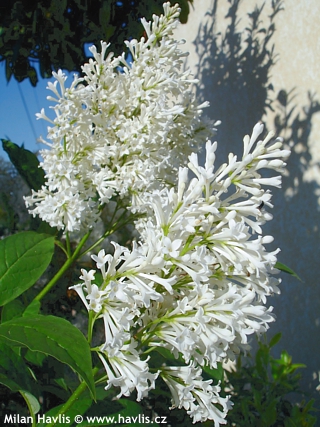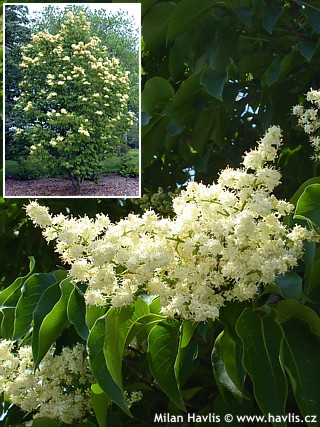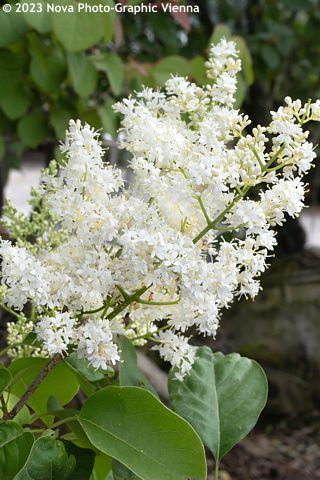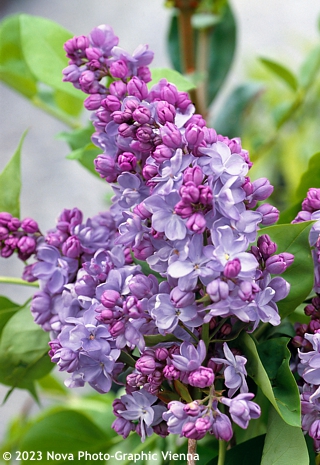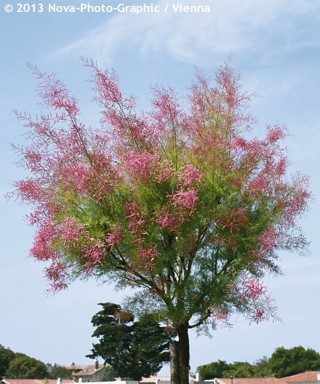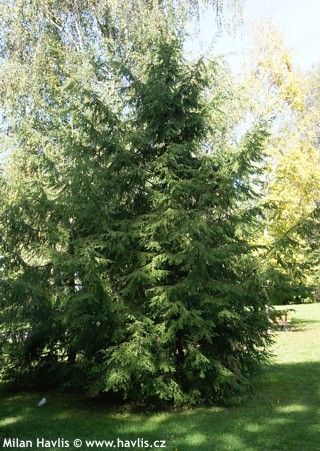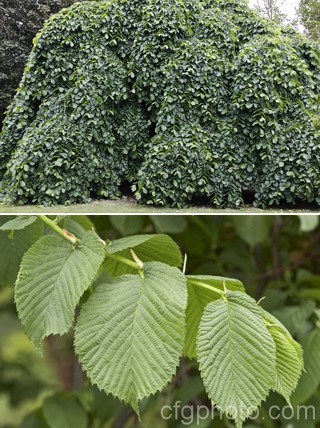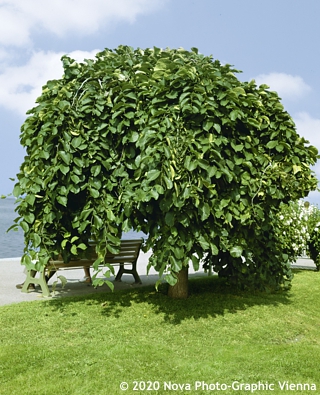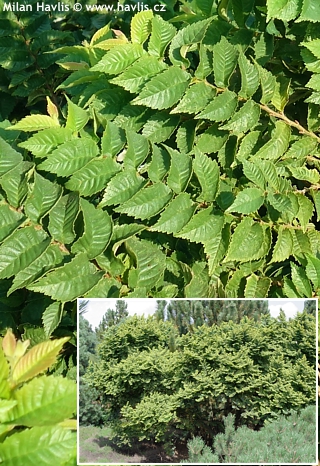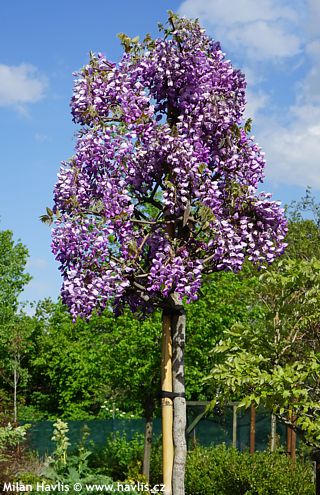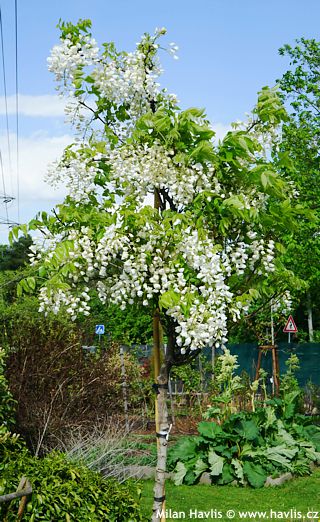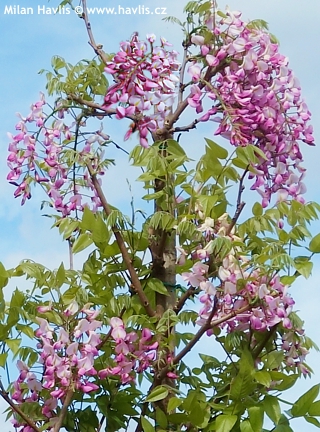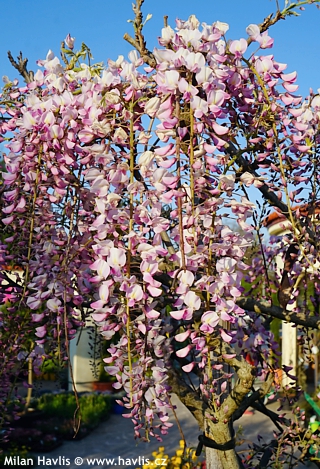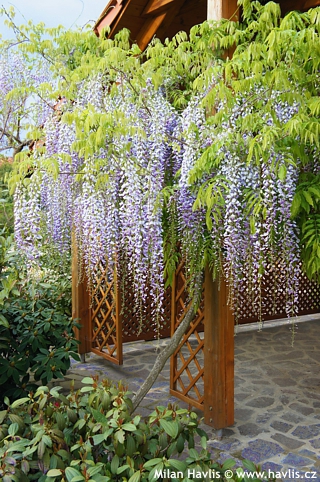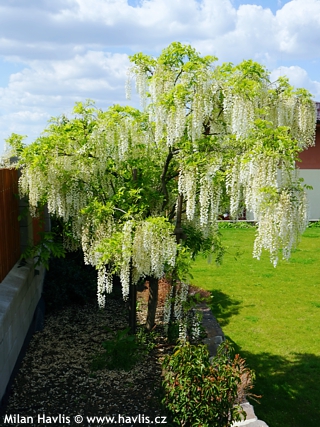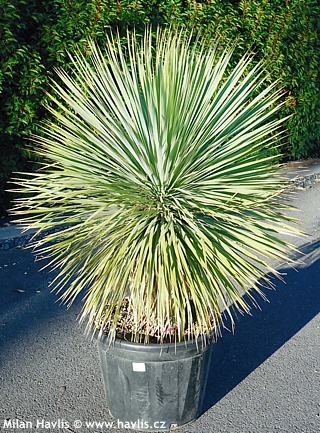CURRENTLY IN STOCK:
One of the most popular conifers for small and mid-sized gardens is this Korean fir. It has short, glossy, dark green needles that are silver on the reverse. Already as a young plant it produces very attractive bluish-purple cones.
It is slow growing, the tree shape is very regular, pyramidal, no ...

3 - 6m

1,5 - 2,5m

full sun

5 (down to -29°C)

for zone 5+6

for zone 7
Caucasian fir is perhaps the most beautiful conifer of our climate. No wonder that it is also a commercial bestseller as a Christmas tree. Its short needles densely cover the branches; they are deep green and very glossy, with silvery undersides. Fresh growths are intensely bright green.
The growth ...

12 - 18m

3 - 5m

full to partial sun

4 (down to -34°C)

for zone 5+6

for zone 7
Algerian fir is a beautiful conifer from North Africa (Algiers, Morocco) and is widely cultivated in South Europe (the Mediterranean). It is very tolerant to drought, heat, and poor soil but very sensitive to pollution and long-lasting frost under -23°C.
The needles are short and stiff, and densely ...

6 - 15m

2 - 4m

full to partial sun

7 (down to -23°C)

for zone 5+6

for zone 7
Trident maple is an attractive medium-sized tree with unusual leaves. They are three-lobed and their size, depth of lobing as well as autumn colour may vary greatly with location.
The deciduous leaves are deep green and glossy, turning yellow, orange and bright red in autumn. They change colours la ...

3 - 8m

3 - 6m

full to partial sun

5 (down to -29°C)

for zone 5+6

for zone 7
Nanum is a dwarf variety of Field maple, suitable for small gardens and avenues with limited space. It grows slowly into a small tree some 2.5m tall and wide. The leaves are deciduous, deep green, with 3-5 rounded lobes, turning yellow in autumn. It naturally forms dense and many branched, rounded c ...

1,5 - 3m

1,5 - 3m

full to partial sun

4 (down to -34°C)

for zone 5+6

for zone 7
Vitifolium is a long-time favourite of a Japanese maple variety, proved to thrive in almost any garden, and characterized by large, 8-15 cm wide, palmately rounded leaves, which are divided into 9 to 12 pointed lobes with serrated margins. The number of lobes distinguishes this species from all othe ...

3 - 5m

2 - 4m

full sun

5 (down to -29°C)

for zone 5+6

for zone 7
Montpellier maple is a typical Mediterranean tree commonly found in dry, coastal or mountainous landscapes of Portugal, France, and Italy. It makes small, three-lobed, leathery but deciduous leaves, which are medium green in summer, and turn yellow, amber orange or scarlet red in autumn. Its flowers ...

4 - 6m

4 - 6m

full sun

5 (down to -29°C)

for zone 5+6

for zone 7
Atropurpureum is a famous and commonly used variety with deeply lobed, red-purple leaves that turn bright red and orange in autumn. They have 5 tips. It forms a multi-stemmed shrub with widely spread branches. It grows slowly and is suitable as a specimen in any garden, not just a Japanese style gar ...

3 - 6m

3 - 4m

full to partial sun

5 (down to -29°C)

for zone 5+6

for zone 7
The variety name of Osakazuki Japanese maple seems to refer to the third largest city in Japan, Osaka, which is renowned for its extensive vineyards that replaced cotton fields. There could be at least two reasons for choosing it – either in reference to its bright carmine red autumn leaves wh ...

3 - 7m

3 - 5m

full to partial sun

5 (down to -29°C)

for zone 5+6

for zone 7
Columnare is a slender form of Norway maple with deciduous, 10-15 cm across, broadly palmate leaves that are green in summer and turn golden orange and bright yellow in autumn. The crown is very narrow – only about 3m wide in 15-20 years, and rather dense. Pruning is usually not required but c ...

15 - 18m

3 - 5m

full to partial sun

for zone 5+6

for zone 7
Another website I came across calls this Norway maple a meat-ball-on-a-stick. Quite funny, actually, but in fat it truthfully describes the shape of this small tree. Well, that only in case the author meant a good housewife who made proper, perfectly spherical meat balls.
Globosum is a variety with ...

IV - V

2 - 4m

2 - 4m

full sun

4 (down to -34°C)

for zone 5+6

for zone 7
Golden Globe is a dwarf Norway maple i.e. one of those with large leaves as opposed to Japanese maples with small and dissected foliage. One of the big advantage of Norway maple is its resistance against majority of common tree diseases and pests. And it will grow almost anywhere.
Golden Globe vari ...

IV - V

2 - 4m

3 - 4m

full sun

4 (down to -34°C)

for zone 5+6

for zone 7
Royal Red is a majestic looking Norway maple for large gardens, parks, and city avenues. Its palmate leaves are dark crimson red, almost black, and glossy, turning amber orange or orange-red in autumn. In spring, just as leaves emerge, it flowers profusely with many small yellow flowers, typical for ...

10 - 20m

5 - 10m

full sun

3 (down to -40°C)

for zone 5+6

for zone 7
Sycamore tree is one of our native maple species and its natural habitat extends vertically from the north of Europe (with the exception of the northernmost peaty locations) to the mountainous areas of southern Europe, and horizontally from the colder parts of western Europe to the Caucasus. It is o ...

15 - 30m

10 - 20m

full to partial sun

3 (down to -40°C)

for zone 5+6

for zone 7
Men usually get mad when women describe colours with expressions like salmon pink, peachy red etc. Well, men, get ready for another hit below the belt: we have a tree whose leaves are SHRIMP pink. Not familiar with that colour? Go to the nearest restaurant and have a prawn-cocktail to see what the f ...

IV - V

2 - 3m

full sun

4 (down to -34°C)

for zone 5+6

for zone 7
Simon-Louis Frères is a beautiful sycamore maple variety from France introduced in 1881. Its leaves emerge bright pink and as they unroll and mature, each leaf becomes uniquely marbled white and green in various portions. They are deciduous, coarsely-serrate, 5-lobed, and have red stalks. In au ...

3 - 6m

1,5 - 3m

full sun

4 (down to -34°C)

for zone 5+6

for zone 7
Brandy Wine is another fantastic scarlet maple variety. It forms a compact, bushy, oval-shaped crown with three-lobed, deciduous, rich green leaves on red stalks in summer, which turn deep burgundy red and later vivid carmine red in autumn. They last for a long time. If you wish to prune or shape it ...

6 - 10m

4 - 6m

full sun

3 (down to -40°C)

for zone 5+6

for zone 7
Red maple is one of the most spectacular big-sized trees suitable for large gardens, parks or city avenues. October Glory is a variety cultivated for its smaller size and fantastic autumn foliage colour. It has mid-sized leaves that are glossy and green in summer, changing to orange and red in early ...

9 - 13m

4 - 6m

full to partial sun

5 (down to -29°C)

for zone 5+6

for zone 7
Red Sunset belongs to the top favourite scarlet maples. It makes eye-catching display of autumn colour. Its deciduous leaves are three-lobed, mid-sized, rich green in summer and bright scarlet red in autumn. It grows fast, forming a widely oval, upright canopy. The crown is dense and needs no traini ...

15 - 18m

9 - 12m

full to partial sun

3 (down to -40°C)

for zone 5+6

for zone 7
MORGAN is a beautifully coloured variety of scarlet maple, which was discovered in 2002 by Ray Tate from the Angel Creek Nursery in Bishop, Georgia, USA. It was a single mutation among a number of October Glory seedlings planted at a nearby nursery in Morgan County. Among the 58 existing varieties o ...

10 - 20m

6 - 12m

full to partial sun

3 (down to -40°C)

for zone 5+6

for zone 7
Pyramidale is a silver maple variety with attractive, deeply cut foliage with prominent red veins. The leaves are deciduous, rich green in summer, turning yellow, golden and orange-red in autumn. The tree forms a widely columnar canopy and is fast growing. Its branches may have a tendency to break, ...

12 - 18m

4 - 6m

full to partial sun

4 (down to -34°C)

for zone 5+6

for zone 7
This silver maple will draw your attention to the deeply cut leaves which resemble Japanese dissectum maples. The name silver describes the underneath of the leaves which are silvery gray and glitter in the wind.
In too fertile soil the branches can grow as much as 1 meter within one year and can ...

15 - 20m

6 - 12m

full to partial sun

4 (down to -34°C)

for zone 5+6

for zone 7
“Aureum” is variety that differs from others by its more or less erect growth with horizontal lateral branches. The fan-shaped leaves are fresh yellow-green to golden yellow, sometimes with pinkish margins. The other difference is fruit: Acer shirasawanum holds its samaras above the foli ...

2 - 4m

semi-shade / partial sun

5b (down to -27°C)

for zone 5+6

for zone 7
Amur maple is a subspecies of a less cultivated species called Tatar maple. This one comes from NE Asia, precisely Mongolia, Korea, Japan, and mainly the Amur River valley between Russia and China. It can be variable in habit but usually forms a vase-shaped, multi-stemmed shrub or small tree with do ...

3 - 6m

3 - 6m

full sun

4 (down to -34°C)

for zone 5+6

for zone 7
Even among a hundred trees you will notice Red Flamingo hybrid snake-bark maple first. Such a colourful small tree must have been brought directly from Mars where red is constantly in vogue. It is a stunning variety making a breathtaking display wherever you put it. Its key features are the leaves a ...

2 - 4m

1,5 - 3m

full to partial sun

7 (down to -23°C)

for zone 5+6

for zone 7
Red horse chestnut is a fantastic tree which is usually planted in large gardens and parks, and as a street tree. Although, this hybrid grows a little slower (30 cm a year) making some 6x4m when 20 years old.
Briotti is a popular variety with big, upright panicles of deep pink flowers with a distin ...

V

6 - 15m

6 - 10m

full to partial sun

5 (down to -29°C)

for zone 5+6

for zone 7
A spectacular new variety of silk tree comes from Japan and is called Summer Chocolate®. It was discovered in 1990 as a seedling in a controlled planting of Albizia julibrissin in 1990. It was patented in the USA under PP 13,822 in 2003. It is considered a rarity for lovers of exotic-looking pl ...

VII - VIII

2 - 5m

2 - 5m

full sun

6b (down to -21°C)

for zone 5+6

for zone 7
Ombrella® belongs to the hardy group. It was a chance selection from France which was observed and cultivated, and later on patented under the name Boubri. It differs from the species by darker leaves and deeply coloured flowers.
Exotic looking flowers are pinky-red, hairy spheres with yellowi ...

VII - IX

2 - 6m

1 - 3m

full sun

7 (down to -23°C)

for zone 5+6

for zone 7
Common alder is a European native plant. There are varieties, however, that are very uncommon and I am not afraid to say exquisite. Such as this variety: Imperialis.
Imperialis alder bears mid-green, deciduous, very deeply cut, 4-8 cm long, narrow leaves that look like tiny witches’ brooms. B ...

5 - 8m

2 - 4m

full sun

3 (down to -40°C)

for zone 5+6

for zone 7
Aureovariegata Japanese angelica tree is another variegated form of this east Asian taxon. It boasts showy variegation of leaf margins that are rich yellow in spring and turn paler in summer to almost white when the flowers appear. Unlike a similar variety Golden Umbrella, Aureovariegata occupies sm ...

VIII - IX

2 - 4m

2 - 3m

full to partial sun

4 (down to -34°C)

for zone 5+6

for zone 7
Recently, less known fruit trees and shrubs are becoming more and more popular mainly thanks to their original taste as well as positive impact on our health. Black chokeberry is one of them. It is in the same rosaceae family as the service tree and its fruit is similar, too. The lustrous fruits are ...

V - V

1,5 - 2m

full sun

3 (down to -40°C)

for zone 5+6

for zone 7
Pawpaw is an old tree species from eastern USA. It is cultivated for both its ornamental value as well as edible fruit. In May appear exotic flowers on bare wood. They are 6-petalled, open bell-shaped, deep burgundy red. Deciduous leaves are large - almost 30 cm long, obovate, medium green, and turn ...

V - VI

2 - 4m

1 - 2m

full sun

5b (down to -27°C)

for zone 5+6

for zone 7
ROYAL FROST is a trade name of a very attractive birch variety. It is a hybrid between betula populifolia „Whitespire“ and betula „Crimson Frost“. Deciduous leaves are diamond-shaped, serrated at margins, rich burgundy red in summer, and crimson red, purple, orange and yellow ...

8 - 12m

3 - 5m

full sun

3 (down to -40°C)

for zone 5+6

for zone 7
Purpurea is a red-leaved variety of European silver birch found in France in 1872. The species is named pendula which might make us believe it should be weeping but it is not. It refers to thin young branches which are so lightweight that they weep but only until the following year when they harden ...

4 - 5m

2 - 4m

full to partial sun

2 (down to -45°C)

for zone 5+6

for zone 7
European white birch is an attractive tree which, however, in its basic form is not suitable for small-sized gardens. However, this selection is excellent for every garden or even a tiny spot at your doorway. It is a weeping white birch, called Youngii.
It is commonly 2-3m tall, and in our climate ...

2 - 3m

1 - 3m

full to partial sun

2 (down to -45°C)

for zone 5+6

for zone 7
MAGICAL® GLOBE is a dwarf selection of European white birch. It comes from Australia where it is called Lollipop Birch. Its makes stiff, strong, slow growing branches with very handsome, fresh green, glossy foliage. Especially after the rain it glitters like a green diamond. Naturally it forms ...

1,5 - 2,5m

1,3 - 1,5m

full to partial sun

3 (down to -40°C)

for zone 5+6

for zone 7
This is the species of north-american trumpet creeper trained into a tree with a real stem. It bears terminal cymes of rich red, trumpet-shaped flowers from early summer until the first frosts. Pinnate
leaves are deep green and enhance its tropical appearance.
Being originally a climbing plant it ...

VI - IX

2 - 3m

1 - 2m

full sun

4 (down to -34°C)

for zone 5+6

for zone 7
This trumpet creeper is really trained into a small tree. 1 or 2 meter tall trunk with a blooming crown gives this exotic looking plant a new glamour. Beautiful, golden-yellow flowers grow at the ends of new branches. They come out in July and don’t stop till the first frosts.
Flava belongs ...

VII - IX

1,5 - 2,5m

1 - 2m

full sun

4 (down to -34°C)

for zone 5+6

for zone 7
INDIAN SUMMER® is another gorgeous variety of trumpet creeper which was trained into a small tree. It is a brilliant idea because such form does not need a trellis or a wall, it can stand anywhere in the garden, on its own or in the middle of other, smaller shrubs.
The trumpet-shaped flowers ...

VII - IX

1,5 - 2,5m

1 - 1,5m

full sun

5 (down to -29°C)

for zone 5+6

for zone 7
Pea tree is a low-maintenance plant which is also often grown in very inhospitable locations because it can take almost anything: hard frost, dry soil, full sun, wind and absolute neglect.
Walker is a variety commonly grafted on short or medium-sized stems with weeping branches. Its deciduous leav ...

V - VI

1 - 2,5m

0,5 - 1,3m

full sun

2 (down to -45°C)

for zone 5+6

for zone 7
Pendula is a weeping form of hornbeam. Mature plants make gracious looking specimens with irregularly weeping or cascading branches. Their crowns are usually not too symmetrical providing a unique appearance for every plant. Naturally the crown grows slowly into a large, umbrella-shaped head with br ...

2 - 4m

1 - 6m

full sun

4 (down to -34°C)

for zone 5+6

for zone 7
One of the original trees found in natural woodlands of Europe is hornbeam. Varieties of this deciduous tree are becoming more and more popular in gardens, too.
Fastigiata, syn. “Pyramidalis” is an elegant, slow growing hornbeam with columnar habit and branches growing strictly upright ...

8 - 12m

2 - 4m

full to partial sun

4 (down to -34°C)

for zone 5+6

for zone 7
Catalpas have been grown in our country for many years. The species may be found in every larger city as an important feature of a city park. It offers outstanding points of interest such as large leaves in summer and long cigar-shaped seed pods in winter, hence its name Indian Bean Tree.
Flowers a ...

VI - VII

5 - 10m

3 - 5m

full sun

5 (down to -29°C)

for zone 5+6

for zone 7
Farges catalpa is a rare plant that was found by western dendrologists in China in early 20th century. Forma ducluxii is a unique plant that deserves undivided attention when in full bloom. Its flowers are formed in upright panicles, larger than on Northern catalpa, lilac to pink in colour with cons ...

VI - VII

2 - 8m

2 - 6m

full sun

5b (down to -27°C)

for zone 5+6

for zone 7
Do you like a tall tree but are afraid it would be too big for your small garden? Well, if you have enough will to prune it every one or two years you can always control its size provided it is not an ash type tree growing about 1 m every year. Thus you can enhance the look of your garden with somet ...

VI - VII

3 - 9m

3 - 6m

full sun

5 (down to -29°C)

for zone 5+6

for zone 7
This variety is a weeping form of blue Atlas cedar. It has distinct silvery-blue persistent larch-like needles born in whorls of 30-45. Their striking colour makes the tree a gorgeous lawn specimen same as an ideal feature when combined with other, dark green conifers. Just remember that this one is ...

2 - 4m

full sun

5b (down to -27°C)

for zone 5+6

for zone 7
Himalájský cedr is the most graceful of all cedars. Robusta Glauca is an Italian selection with long, evergreen needles. Their colour is from blue-green to almost silvery blue while new shoots are soft green. Robusta Glauca cedar is unique for its robust structure with strong stem and habit which is ...

10 - 15m

5 - 7m

full sun

5b (down to -27°C)

for zone 5+6

for zone 7
Cedar of Lebanon is a majestic specimen tree with needle-like dark green to blue-green foliage that looks like larch but is evergreen. Young trees are densely branched from the ground but low branches can be removed in the autumn if planted close to houses to make more room beneath. The branches are ...

10 - 20m

10 - 15m

full sun

5b (down to -27°C)

for zone 5+6

for zone 7
Eastern redbud is a lovely, deciduous, small tree or a large shrub where the word “love” is the key feature. Why? Because its leaves are in a perfect shape of a heart that we are used to draw as an icon. Moreover, Forest Pansy variety has burgundy red to deep burgundy brown foliage. If p ...

IV - V

2 - 4m

2 - 4m

full sun

5 (down to -29°C)

for zone 5+6

for zone 7
Ruby Falls is undoubtedly one of the darkest coloured little trees that will grab your attention thanks to its dark burgundy red, typically heart-shaped, approximately 8x10 cm large leaves and a weeping habit. Its crown is quite compact and the branches may soon touch the ground unless pruned on reg ...

IV - V

1 - 2m

1 - 2m

full sun

7 (down to -23°C)

for zone 5+6

for zone 7
RISING SUN™ is an American variety of Eastern redbud found by Ray and Cindy Jackson for their Jackson Nursery in Belvidere, Tennessee, as a chance seedling. It boasts large, 10-14 cm long and wide, broadly heart-shaped leaves which emerge bright golden or orange while older leaves are bright y ...

IV - V

2 - 4m

2 - 4m

full to partial sun

5 (down to -29°C)

for zone 5+6

for zone 7
CAROLINA SWEETHEART™ redbud is like fireworks glowing with several colours at once. This darling was developed in cooperation with the Star Roses and Plants Nursery by Thomas G. Ranney from North Carolina State University in the USA, who is also known in our country thanks to his of wonderful ...

IV - V

2 - 4m

2 - 4m

full to partial sun

5 (down to -29°C)

for zone 5+6

for zone 7
Big Apple is a Japanese dogwood variety from the USA where it was discovered and selected by Polly Hill in the 1960s. The seeds were obtained from M.M. Brubaker of Pennsylvania and as the plants grew she noticed one that was different from the species. She named it Big Apple and while most contempor ...

VI - VII

3 - 5m

2 - 3m

full sun

5 (down to -29°C)

for zone 5+6

for zone 7
Filbert is a hazelnut species from S.E. Europe and S.W. Asia and exhibits a vigorously growing many-stemmed shrub with deciduous leaves. Purpurea is an old variety with deep maroon to near black leaves. They are 5-12 cm long, 4-10 cm wide, and during summer the colour of maturing leaves changes to d ...

II - III

3 - 6m

3 - 6m

full sun

4 (down to -34°C)

for zone 5+6

for zone 7
Grace is a hybrid smoke tree variety, a cross between c. coggygria 'Velvet Cloak' and the American species c. obovatus. It is a vigorous, fast-growing shrub or small multi-stemmed tree with large, broadly oval to rounded, deciduous leaves. They are 6-10 cm in length, emerge bright red in spring, mat ...

VI - VIII

2 - 5m

2 - 3m

full sun

4 (down to -34°C)

for zone 5+6

for zone 7
Carrièrei hawthorn differs from the original hybrid by a much more profuse blooming and therefore a magnificent display of fruit in autumn. It is a small to mid-sized tree whose leaves, though deciduous, remain on the tree much longer than on other deciduous trees. So no wonder that many garden ...

V - VI

3 - 5m

2 - 4m

full to partial sun

4 (down to -34°C)

for zone 5+6

for zone 7
Splendens hawthorn is undoubtedly one of the most beautiful trees of northern hemisphere not only among hawthorns. It is valued for its lush, glossy foliage and a profusion of red berries. Leaves are deciduous, broadly elliptic, serrated at margins, dark green in spring and summer, and take on vibra ...

V - VI

4 - 7m

3 - 4m

full to partial sun

4 (down to -34°C)

for zone 5+6

for zone 7
Garda is a selected form of Tuscan cypress found in the Italian Lake Garda region. It naturally forms slender, evergreen columns, whose dense branches are covered with dark green, scale-like needles that do not lose their colour even in winter. The branches are shorter, firmly attached to the trunk, ...

6 - 12m

1 - 2m

full sun

8 (down to -18°C)

for zone 5+6

for zone 7
This elegant and rather exotic looking tree is still rare in cultivation in Europe. It was believed to have been extinct after the glacial era, however, in late 19th century some specimens were found in Sichuan, China. Dove tree was brought to Britain in 1903 and cultivated as a rarity in some garde ...

V - VI

6 - 10m

4 - 6m

full to partial sun

5b (down to -27°C)

for zone 5+6

for zone 7
Oleaster is the oldest species from the genus cultivated in Czechia. It is a small deciduous tree or a tall shrub native to a wide range from the Caucasus, through southern Europe to Central Asia. Its most attractive feature are the narrow, olive-like leaves which appear silvery thanks to their dens ...

V - VI

3 - 6m

3 - 4m

full to partial sun

2 (down to -45°C)

for zone 5+6

for zone 7
Gilt Edge is one of the first registered varieties of evergreen silverthorn with variegated foliage. It makes leathery, oval to ovate, partially undulated, and glossy leaves with dark green centres and thick yellow margins. Twigs are orange-brown, and the colder the weather comes in autumn the deepe ...

IX - X

2 - 5m

1 - 3m

full to partial sun

7 (down to -23°C)

for zone 5+6

for zone 7
Viveleg silverthorn is a bushy, upright growing, evergreen shrub or small tree with irregularly variegated leaves. They are leathery, oval to ovate, partially undulated, and glossy. The centres are dark green, the margins are rich yellow, and the borderline between these two colours is light green b ...

IX - X

2 - 4m

1 - 2m

full to partial sun

7 (down to -23°C)

for zone 5+6

for zone 7
AZURA is undoubtedly the first reliably hardy cider gum variety of European origin. It has typically steel blue-green, rounded, highly aromatic, evergreen foliage along silvery blue stems. It grows moderately to fast and its ultimate height is expected to reach about 4-5m without pruning but it can ...

2 - 4m

1,5 - 2m

full to partial sun

7 (down to -23°C)

for zone 5+6

for zone 7
Dawyckii varieties of common beech are very popular for their habit and leaf colours. Dawyck Gold has upright, columnar habit, its initial slow growth changes after a few years to medium-fast, never really fast. Young leaves are bright yellowish green, turning to glowing grass green throughout the s ...

10 - 15m

1 - 3m

full to partial sun

4 (down to -34°C)

for zone 5+6

for zone 7
Dawyckii varieties of common beech are very popular for their habit and leaf colours. Dawyck Purple has upright, columnar habit, its initial slow growth changes after a few years to medium-fast, never really fast. Spring leaves are striking purple, colour slightly deepens throughout the summer. Lack ...

10 - 15m

1 - 3m

full sun

4 (down to -34°C)

for zone 5+6

for zone 7
Pendula is a weeping form of European beech first introduced by George Loddiges in his nursery in London, UK, in 1836. It bears deciduous, 6-10 cm long, broadly elliptic-ovate, glossy leaves that emerge bright green, mature to dark green in summer, and turn yellow and brown shades in autumn. Its wee ...

8 - 20m

5 - 15m

full to partial sun

4 (down to -34°C)

for zone 5+6

for zone 7
Riversii (syn. 'Purpurea Major') is a variety of European beech, a slow growing big tree with deep maroon leaves. They are elliptic-ovate, deciduous, emerge bright burgundy red, maturing to deep purple maroon and deep green inside the crown in summer, and eventually turn copper orange in autumn.
...

15 - 18m

5 - 10m

full sun

4 (down to -34°C)

for zone 5+6

for zone 7
Beech is a reliable and hardy tree of our climate. Variety Purpurea Tricolor has deep burgundy red leaves with pink margins that, upon conditions, can reach the centre of the leaf.
Natural habit is quite airy and thin when young. When mature it reaches well over 10 meters but this happens seldom, ...

3 - 15m

3 - 10m

full sun

4 (down to -34°C)

for zone 5+6

for zone 7
MIDNIGHT FEATHER is a unique variety of European beech from the Netherlands with attractive foliage. Its deciduous leaves are deep maroon during the season and brighter burgundy red in autumn. They are glossy and conspicuously incised or notched at margins like many Japanese maple varieties. The wil ...

3 - 6m

2 - 3m

full to partial sun

for zone 5+6

for zone 7
Raywood is a very elegant variety of a deciduous tree called Claret ash. Its leaves are pinnate, up to 25 cm long and are composed of narrow, elliptic and very glossy individual leaflets that are deep green in summer and turn breathtaking shades of brilliant carmine red and deep burgundy red in the ...

10 - 15m

2 - 5m

full sun

5 (down to -29°C)

for zone 5+6

for zone 7
Summit is a green ash variety sought-after for mostly two features: it is a male tree – not producing seeds and unwanted seedlings, and its vibrant autumn colour. The pinnate leaves are deciduous, composed of 5-9 broadly elliptic to narrowly ovate, deep green, not very glossy leaflets which tu ...

12 - 15m

7 - 12m

full sun

4 (down to -34°C)

for zone 5+6

for zone 7
Maidenhair tree is probably one of the oldest species on Earth. It was here some 180 million years ago … obviously it was the time when the Dead Sea was still ill. Its extreme tolerance of various conditions made it survive to our time. One tree can live as long as 2000 years.
It belongs to c ...

15 - 30m

full sun

3 (down to -40°C)

for zone 5+6

for zone 7
Eiffel is an attractive maidenhair tree variety from the beginning of the new millennium. It makes compact, more densely branched trees or multistemmed shrubs with deciduous, 4-7 cm wide, fan-shaped, divided, mid green leaves (botanically classified as needles), that change to fantastic shade of bri ...

6 - 10m

2 - 4m

full sun

4 (down to -34°C)

for zone 5+6

for zone 7
Fastigiata Blagon is a French variety of maidenhair tree with narrowly conical or almost columnar growth. It bears deciduous, 4-7 cm wide, fan-shaped, divided, mid green leaves (botanically classified as needles), that change to fantastic shade of bright golden yellow in autumn. It is often pruned o ...

8 - 12m

2 - 3m

full sun

3 (down to -40°C)

for zone 5+6

for zone 7
Horizontalis is a small variety of maidenhair tree with almost flat canopy with deciduous, 4-7 cm wide, fan-shaped, divided, mid green leaves (botanically classified as needles), that change to fantastic shade of bright golden yellow in autumn. It grows relatively slowly making some 20-30 cm per yea ...

2 - 3m

2 - 6m

full sun

4 (down to -34°C)

for zone 5+6

for zone 7
Some of you, gleditsia lovers, may have read about this quite rare and unique version of honey locust. Its charm consists in the unusual colour of leaves. They are bright purple as they emerge, turning chocolate brown later and light bronze in summer. They are pinnate or bi-pinnate and look like fer ...

3 - 8m

2 - 5m

full sun

5 (down to -29°C)

for zone 5+6

for zone 7
Sunburst is a mid-sized tree grafted at the bottom so the whole plant is thornless. It is usually offered as a feathered tree with branches from the ground level. It can also be trained into a tree form with a thin crown in 2m height. The trunk still keeps producing buds with leaves which should be ...

5 - 9m

2 - 5m

full sun

4 (down to -34°C)

for zone 5+6

for zone 7
If you like elegant leaves tha are not as bold as London plane tree leaves for example, have look at this honey locust. It is called SKYLINE and as it belongs to inermis subspecies it represents a thornfree version of this beautiful tree.
Unlike its more popular brother SUNBURST with golden yellow ...

9 - 15m

3 - 6m

full sun

4 (down to -34°C)

for zone 5+6

for zone 7
Inermis is a very elegant forma of honey locust with no thorns! They can be found on the species, not on this plant, and are very dangerous, so nothing to worry about here.
It has bright green, fern-like leaves that are pinnate and bipinnate, both types often occurring on the same tree. They are 20 ...

10 - 20m

5 - 10m

full sun

4 (down to -34°C)

for zone 5+6

for zone 7
Resi is a Dutch variety of hybrid hibiscus (h. syriacus x h. paramutabilis) bred by Piere Theunissen and introduced by the nursery Piet Vergeldt Boomkwekerijen in 2008. In the US it is sold under the brand name FULL BLAST™. European Patent No. 33825 was granted in 2013 (expired in 2021). It be ...

VII - IX

3 - 5m

2 - 3m

full sun

5 (down to -29°C)

for zone 5+6

for zone 7
Burgundy is a beautiful variety of desert willow of untraceable origin, possibly a selection of Rio Salado with slightly paler flowers. Burgundy desert willow makes deep maroon, velvety flowers with white and yellow stripes in the throat. They are slightly fragrant and formed in narrow, terminal, up ...

VI - IX

2 - 5m

2 - 4m

full sun

7 (down to -23°C)

for zone 5+6

for zone 7
Nellie R. Stevens holly is one of the most cultivate hardy hollies worldwide simply because it is beautiful and versatile. It is a cross between English holly (ilex aquifolium) and Chinese holly (ilex cornuta). It grows relatively fast and can be trained into a gorgeous looking evergreen tree.
The ...

2 - 5m

1,5 - 2,5m

full to partial sun

7 (down to -23°C)

for zone 5+6

for zone 7
Argentea Marginata is an eye-catching cultivar of variegated English holly. Its sharply serrated, evergreen leaves are almost identical to those of the species but moreover are decorated with a wide brim of creamy white colour at margins. Young leaves show prominent purple red to dark pink hues as t ...

3 - 6m

2 - 3m

full to partial sun

5b (down to -27°C)

for zone 5+6

for zone 7
Chestnut Leaf is probably the most common variety when you happen to come across a Koehne holly in Europe early 21st century. I am giving this date deliberately in case you are reading this article in 2050 or later, laughing how come that we used to be so deprived having just one Koehne holly then. ...

2 - 6m

1,5 - 3m

full to partial sun

7 (down to -23°C)

for zone 5+6

for zone 7
Not many trees bloom in mid or even late summer when all the spring flowering beauties have only leaves. Golden-rain tree is one of the few.
In late July/early August upto 30 cm long panicles of small, bright yellow flowers appear on this medium sized tree. The flowers can remain on the tree for a ...

VII - VIII

5 - 15m

5 - 10m

full sun

5 (down to -29°C)

for zone 5+6

for zone 7
Golden-rain tree is one of the few trees of our climate blooming in summer. This variety, moreover, is yet somewhat rare which makes it a sought-after item.
Fastigiata golden-rain tree has strictly upright, slender habit compared to the large-headed species. It forms a columnar, very dense tree w ...

VII - VIII

4 - 6m

1,5 - 2,5m

full sun

5 (down to -29°C)

for zone 5+6

for zone 7
Tuscarora is another successful cold-hardy lagestremia hybrid variety from the US National Arboretum. It has bright coral pink to scarlet red flowers composed in upright panicles and appear, according to the quality of the summer, from August to September or October. The leaves are deciduous, glossy ...

VIII - IX

2 - 5m

2 - 4m

full sun

7 (down to -23°C)

for zone 5+6

for zone 7
Fantasy is a fast-growing Japanese crepe myrtle variety. It makes white flowers arranged in short, upright panicles. They are not fragrant and appear, according to the quality of summer, from August to September in C.E. climate. The leaves are deciduous, glossy, tinted mahogany red as they emerge an ...

VIII - IX

3 - 6m

3 - 4m

full sun

7 (down to -23°C)

for zone 5+6

for zone 7
Benoit is an Indian crepe myrtle variety with rich mauve purple flowers and attractive colouring of new leaves. The flowers are arranged in upright panicles, non-scented, and appear, according to the quality of summer, from August to September in C.E. climate. The leaves are deciduous, glossy, brigh ...

VIII - X

2 - 5m

2 - 4m

full sun

7 (down to -23°C)

for zone 5+6

for zone 7
Catawba is an Indian crepe myrtle variety for those who love pastel colours. Its flowers are a quiet fusion of pink and purple in an almost dusky tone. The flowers are arranged in short, upright panicles, non-scented, and appear, according to the quality of summer, from August to September in C.E. ...

VIII - IX

2 - 5m

2 - 4m

full sun

7 (down to -23°C)

for zone 5+6

for zone 7
Powhatan is an Indian crepe myrtle variety (not a hybrid) developed at the US National Arboretum. It is a compact, moderately fast-growing shrub or small tree with a dense, almost impenetrable canopy with slightly arching branches on older specimens. The flowers are lilac mauve to pale lavender viol ...

VIII - IX

2 - 5m

2 - 4m

full sun

7 (down to -23°C)

for zone 5+6

for zone 7
RHAPSODY IN BLUE is an attractive crape myrtle variety from the Play It Again® series introduced in 2022. The series comprises of varieties with double flowering on the same panicle and in a few cases dark foliage as a bonus. RHAPSODY IN BLUE bears deep purple flowers with mauve hues against a ...

VIII - IX

2 - 3m

1,5 - 2m

full sun

7 (down to -23°C)

for zone 5+6

for zone 7
DYNAMITE® is possibly the reddest crepe myrtle variety known to trade. It produces large (30x20 cm), upright panicles of the richest red shade you may have seen. Flowering begins in late July or early August and continues till the last sunny and warm days of autumn.
The deciduous leaves are le ...

VIII - IX

1,5 - 3m

1 - 1,5m

full sun

7 (down to -23°C)

for zone 5+6

for zone 7
Excelsum Superbum is a highly attractive, variegated form of glossy privet. It makes large, up to 15 cm long and 6 cm wide, ovate to oval, pale dark green leaves abundantly variegated butter yellow, often extended to the midribs. Directly contradicting its botanical name they are NOT glossy, they ar ...

IX - X

2 - 5m

1 - 3m

full sun

8 (down to -18°C)

for zone 5+6

for zone 7
This is the species of sweetgum. Its maple-like, star-shaped leaves are medium-deeply or deeply cut and have fresh green colour. As it is reproduced mainly by seeds the plants often vary even if grown from seeds of the same parent. This results in plants having slightly different characteristics suc ...

8 - 15m

3 - 6m

full to partial sun

5 (down to -29°C)

for zone 5+6

for zone 7
Aurea is a sweetgum variety with varigated leaves showing irregular splashes of yellow. They turn pink and purple in autumn.
In gardens with limited space for roots it seldom grows taller than 10m, however, in parks and in southern countries you may encounter much taller and obviously very old spec ...

8 - 15m

4 - 8m

full sun

5 (down to -29°C)

for zone 5+6

for zone 7
If you like sweetgum and you are afraid of its size in maturity try this one. Gum Ball is a great variety with dwarf growth and reduced size. After 10 years it can grow to some 2.5m with a total of 3m in maturity. Its crown is quite regular even without pruning.
The leaves are identical to basic s ...

2 - 3m

1,5 - 2m

full to partial sun

5b (down to -27°C)

for zone 5+6

for zone 7
We are happy to present our selection of a sweetgum that was gained in Italian nurseries. It bears our name SAFRO®and we believe that you will find it as attractive as we do. It is a deciduous tree that has larger leaves than the species. They are deeply lobed, fresh green, and glossy, and offer ...

8 - 15m

4 - 7m

full sun

5 (down to -29°C)

for zone 5+6

for zone 7
Slender Silhouette is a beautiful sweetgum which could be your perfect choice for a small garden or a miniature front yard. A 5m tall plant seldom exceeds 1m wide. It is a slow growing version of sweetgum with strictly upright and columnar habit. The leaves are quite large, conspicuously lobed with ...

5 - 7m

1 - 1,5m

full sun

5b (down to -27°C)

for zone 5+6

for zone 7
Stella is an attractive sweet gum selection, similar to Stared variety, yet a little broader in habit. Its leaves are beautiful, 15-20 cm large, deciduous, star-shaped, deeply lobed, green in summer and rich scarlet red and deep burgundy red in autumn for almost 2 months. An extra feature is the lea ...

6 - 12m

2 - 4m

full sun

5 (down to -29°C)

for zone 5+6

for zone 7
Worplesdon is a popular sweetgum variety among both growers as well as customers. It is a reliable and hardy selection that grows well without any additional maintenance. It has deep green, deciduous leaves that are star-shaped, deeply lobed, often with a pair of small teeth beneath each tip. The mo ...

6 - 12m

3 - 6m

full sun

5 (down to -29°C)

for zone 5+6

for zone 7
Stared is one of the most recent varieties of sweetgum with leaves cut so deep like a too low neck on a frock of a lady who forgot she was going to attend a charitable ball “Help Africa” and not a teenager party “Miss Bikini – Monokini”. Liquidambar leaves have a unique ...

5 - 7m

1 - 2m

full sun

5b (down to -27°C)

for zone 5+6

for zone 7
Belonging to the same family as magnolia, common name tulip tree may be misleading since this name is often used for magnolias with saucer-shaped flowers. Hence gardeners rather use its other name yellow poplar. This is the tree with huge lyra-like, saddle-shaped leaves which do appear to miss a lob ...

VI - VII

25 - 30m

10 - 15m

full sun

5 (down to -29°C)

for zone 5+6

for zone 7
Belonging to the same family as magnolia, common name tulip tree may be misleading. This is the tree with huge lyre-shaped, deciduous leaves which do appear to miss a lobe. This variety is called Aureomarginatum because its leaves are decorated with broad creamy-yellow margins that turn light green ...

VI - VII

15 - 20m

6 - 10m

full sun

5 (down to -29°C)

for zone 5+6

for zone 7
Fastigiatum is a columnar variety of yellow poplar tree / tulip tree which has two advantages as opposed to the species. First - it is narrower and will fit into a mid-sized garden. And secondly, and for most of us perhaps more importantly, it flowers from very young age. As opposed to encyclopedias ...

VI - VII

7 - 13m

2 - 3m

full to partial sun

5 (down to -29°C)

for zone 5+6

for zone 7
Columnar Pink is an admirable magnolia variety selected by famous English gardener Maurice Foster. His 15-acre large garden is located near Sevenoaks in Kent, U.K., a place about 500 meters above sea level which is sometimes called Kentish Alps since the rest of this south-eastern English county is ...

IV - V

3 - 4m

1 - 2m

full to partial sun

5 (down to -29°C)

for zone 5+6

for zone 7
Coral Lake is a chameleon magnolia changing colours during flowering. It is a cross between Legend (m. acuminata x m. acuminata ssp. subcordata, 1985) and Butterflies (m. acuminata x m. denudata ‚Sawada’s Cream‘, 1988). The most interesting fact about it breeding is that neither of ...

IV - V

3 - 5m

3 - 4m

full sun

4 (down to -34°C)

for zone 5+6

for zone 7
Maxine Merrill is a magnolia cross between m.acuminata ssp. subcordata ‚Miss Honeybee‘ and m. x loebneri ‚Merrill‘. It was bred by one of the greatest magnolia breeders Phil Savage from the USA. It produces medium-sized, cup-shaped flowers with 6 sturdy petals of soft banana ...

IV - V

4 - 5m

2 - 3m

full to partial sun

5 (down to -29°C)

for zone 5+6

for zone 7
Norman Gould is a compact growing Japanese magnolia hybrid. It makes 10 cm large, snow-white, goblet-shaped, fragrant flowers with 8-9 petals. They come out already from late March if the weather is nice. Deciduous leaves are 10-15 cm long, broadly ovate, mid green, and puckered. The plant forms com ...

III - IV

3 - 5m

2 - 3m

full sun

4 (down to -34°C)

for zone 5+6

for zone 7
Purple Star magnolia is a modern variety from 2015 from the renowned Belgian breeder Phillippe de Spoleberch, whose perhaps the greatest success, with which he gained fame around the world, is Daphne magnolia, so far considered the best deep yellow available. Purple Star is a cross between m. cylind ...

IV - V

3 - 6m

2 - 3m

full to partial sun

7 (down to -23°C)

for zone 5+6

for zone 7
Golden Gift is a magnolia crossing between m. acuminata ‘Miss Honeybee’ and (m. acuminata x m. denudate) which makes it obvious that thanks to a lot of genes of cucumber magnolia (m. acuminata) the flowers should be yellow. And they are! They are 6-petalled, mid-sized, tulip-shaped, soft ...

IV - V

3 - 4m

2 - 3m

full to partial sun

5 (down to -29°C)

for zone 5+6

for zone 7
Goliath is bushier than the species. As you can tell by its name, something is going to be extraordinary here. True: the flowers are extremely large, often up to 30 cm wide, strongly fragrant and appear on the plant usually from June, often from late May if the end of spring is hot, and continue blo ...

V - IX

3 - 8m

3 - 4m

full sun

7 (down to -23°C)

for zone 5+6

for zone 7
Evergreen magnolias are the queens of flowering trees. We choose the most beautiful and at the same time the hardiest varieties. Goliath is a cultivar found by American botanist Albert Charles Smith (1906-1999) in former Caledonian Nurseries on British island Guernsey in 1910. The nursery no longer ...

VI - IX

3 - 8m

3 - 5m

full sun

5a (down to -29°C)

for zone 5+6

for zone 7
With the new millennium, large-flowered magnolias seem to have become a new fashion for broad public and collectibles for magnolia enthusiasts. The number of new cultivars increases every year. EMPEROR is an impressive one from New Zealand based breeder Vance Hooper. It is a cross between Felix Jury ...

IV - V

3 - 5m

1,5 - 2,5m

full to partial sun

7 (down to -23°C)

for zone 5+6

for zone 7
Discovering magnolia STARBURST was a thrill. Not only has it gorgeous flowers, but it also has something very practical for small gardens – narrower, almost fastigiate habit. Its fragrant flowers are 15-20 cm across, purple red on the outside and much paler inside with pink stars airbrushed on ...

IV - V

2 - 4m

1 - 2m

full to partial sun

7 (down to -23°C)

for zone 5+6

for zone 7
Hattie Carthan magnolia was bred by Doris Stone from the Brooklyn Botanic Garden by cross-pollinating several unnamed m. x brooklynensis hybrids (m.acuminata x magnolia x liliiflora) and ‘Evamaria’ variety. The result was a stunning magnolia with firm flowers of elongated tepals. They ar ...

IV - V

4 - 7m

1,5 - 3m

full to partial sun

5 (down to -29°C)

for zone 5+6

for zone 7
Proctor magnolia is a hybrid of two Japanese magnolia species – m. stellata and m. salicifolia. It is distinguished by early flowering and profusion of star-shaped, white, fragrant flowers, larger than on m. stellata, with less petals but of firmer appearance. Slavin’s Snowy is a selecti ...

III - IV

6 - 8m

3 - 4m

full to partial sun

5 (down to -29°C)

for zone 5+6

for zone 7
Alexandrina is a very popular variety of saucer magnolia. Thanks to the rich colour of outer petals it is rated commercially best-selling saucer magnolia. The flowers are upto 10 cm across, white inside, flushed deep pink and purple outside, with a lovely fragrance.
Deciduous leaves are rather obo ...

IV - IV

4 - 6m

full to partial sun

5 (down to -29°C)

for zone 5+6

for zone 7
Thompson magnolia boasts large, creamy white, very fragrant flowers which come out from June until July on a fully leafed out plant. The flowers are up to 15 cm across and the fragrance is deep and sweet. Deciduous leaves are broadly ovate to obovate, 15-25 cm long, fresh green above and glaucous be ...

VI - VII

3 - 5m

2 - 3m

full sun

7 (down to -23°C)

for zone 5+6

for zone 7
Some crab apples can easily compete with Japanese ornamental cherries as far as the beauty and colours of their flowers. This is the case of ´Royal Beauty´. It is a small tree growing about 2.5m tall, with weeping, somewhat narrow crown. In the spring it brings a profusion of deep pink to light purp ...

IV - IV

2 - 3m

full sun

4 (down to -34°C)

for zone 5+6

for zone 7
Delikates is a Polish variety of medium early apple. Apples are small to mid-sized, rounded, the skin is thin, pale yellow-green with red blush on insolated parts. The flesh is white, firm, moderately acidic, very aromatic and very juicy. It can be stored until December.
It is self-sterile and need ...

3 - 4m

2 - 3m

full sun

5 (down to -29°C)

for zone 5+6

for zone 7
Golden Delicious is a favourite apple brand. It comes from the USA, 1890. The fruit is sweet, juicy and crisp, of golden yellow to greeny-yellow colour. Its size is dependent on soil fertility. The fruit can be very large.
It is usually trouble-free as far as late frosts and is disease resistant. T ...

IV - V

3 - 6m

full sun

4 (down to -34°C)

for zone 5+6

for zone 7
Jonagold is a great dessert apple variety that combines the best of both its parents. It has the sweetness of Golden Delicious as well as mild sharpness and aroma of Jonathan. The flesh is crispy and very juicy. Moreover, Jonagold is a very attractive apple to look at – it is honey yellow with ...

IV - V

2 - 4m

2 - 3m

full sun

for zone 5+6

for zone 7
Melrose is an attractive and tasty late apple. It is a result of crossing Jonathan and Red Delicious. The apples are sweet and crunchy. Their colour is red. Ideal snack apple or for cooking. Tastes best about one month from picking. It can be stored until end February.
Apple trees should be pruned ...

IV - V

3 - 6m

2 - 4m

full sun

for zone 5+6

for zone 7
This is probably the earliest apple in our climate, of Russian origin from around 1800. Its name is different in every country, the English name is White Transparent. It produces good crops of medium-large to large fruit with greenish-yellow, soft skin and very juicy flesh that can be quite sharp fo ...

IV - V

2 - 4m

1,5 - 3m

full sun

5 (down to -29°C)

for zone 5+6

for zone 7
Rode Boskoop (Boskoop Red) is a red version of an old and popular Dutch variety of Belle de Boskoop late apple. It produces incredibly large fruit that can weigh up to 250g. It is often irregular or rounded with ribs. The skin is tough, rich red on most parts, and the flesh is pale yellow-green matu ...

IV - V

2,5 - 3,5m

2 - 3m

full sun

7 (down to -23°C)

for zone 5+6

for zone 7
Reine des Reinettes (King of the Pippins, Goldparmäne) is a mid-season apple with golden-orange skin, with profusion of red stripes. It is medium-sized, rounded, and can be picked from September until October, and stores well approximately until Christmas time. The flesh is juicy, delicious and very ...

IV - V

2 - 5m

2 - 3m

full sun

5 (down to -29°C)

for zone 5+6

for zone 7
Scarlet crabapple is a fantastic addition to the collection of spring flowering apples and cherries. This one, however, has more than one feature to look at (just like Scarlett Johansson who may have been a reason for giving this tree its name …)
Scarlet is a flowering crabapple tree with pro ...

IV - V

4 - 6m

2 - 5m

full sun

5 (down to -29°C)

for zone 5+6

for zone 7
Trilobata crabapple is a rare and unusual plant that is not difficult to grow butyet quite difficult to source. Its most specific feature is the leaf shape – it looks like a merge between maple and hawthorn. The leaves are not large but their prominent lobes are a good giveaway. They are decid ...

VI - VI

7 - 13m

2 - 5m

full to partial sun

5b (down to -27°C)

for zone 5+6

for zone 7
APPLETINI is a French crabapple variety which is not only ornamental, but it also makes edible fruit of a great taste. The fruit is not large but compared to the size of the fruits of other crabapple varieties these apples are giants – like a ping pong ball, which is probably why its breeders ...

IV - V

2 - 3m

2 - 3m

full to partial sun

5 (down to -29°C)

for zone 5+6

for zone 7
Dawn redwood was believed to be extinct for centuries. Until first specimen were brought from China in 1941 and propagated throughout the world. It is a deciduous conifer which, thanks to its flat, fresh green needles, is often mistaken for swamp cypress (taxodium distichum). The needles are soft an ...

10 - 30m

2 - 4m

full to partial sun

4 (down to -34°C)

for zone 5+6

for zone 7
Mulberry is a versatile tree used in ornamental landscaping as well as pomiculture. You can find it in standard forms with a long trunk, or as a half-standard which is suitable for easy fruit picking. It can also be seen grown as a shrub densely branched from the ground. Here we will describe edible ...

3 - 10m

3 - 12m

full sun

5 (down to -29°C)

for zone 5+6

for zone 7
White mulberry and its Pendula variety is one of the top popular weeping trees. No wonder – apart from its beauty it offers tasty fruit. Moreover its small size makes it an ideal specimen tree even for small gardens. Its deciduous leaves are heart-shaped, toothed at margins, up to 15 cm long, ...

2 - 3m

1 - 2m

full sun

4 (down to -34°C)

for zone 5+6

for zone 7
Plane-leaved mulberry has many admirers thanks to its almost exotic large leaves. Fruitless is a follow-up variety from Italy eliminating the only set back this tree may have when it comes to cleanliness: it is sterile (male) and does not produce fruit that would cause coloured waste under its canop ...

3 - 5m

3 - 5m

full sun

4 (down to -34°C)

for zone 5+6

for zone 7
This mulberry is very special. Deeply cut, dark green, glossy leaves draw your attention as they bear strong resemblance to leaves of plane trees. Many of the largest leaves at the ends of the branches keep their green colour until late in the autumn when they fall down green. The crown is wide spre ...

3 - 5m

3 - 5m

full sun

4 (down to -34°C)

for zone 5+6

for zone 7
Aurantiacus, sometimes also called simply rubra, is a valued selected form of sweet olive which offers perhaps the strongest scented flowers. They are small, rich orange and their perfume also resembles orange zest and tangerines. It blooms profusely from the very end of the growing season, usually ...

X

3 - 4m

1,5 - 2,5m

full to partial sun

8 (down to -18°C)

for zone 5+6

for zone 7
Holly osmanthus or false holly is a taxon of evergreen shrubs and small trees native to East Asia, southern Japan, and Taiwan. The species bears evergreen, leathery, dark green, highly glossy, and thorny leaves, which resemble hollies, but something seems to be wrong for the more experienced eye: ho ...

X - XI

2 - 6m

1,5 - 3m

full to partial sun

7 (down to -23°C)

for zone 5+6

for zone 7
One of the most magnificent trees of our climate comes from East Asia and is called the Princess Tree or Empress Tree or even Foxglove Tree. Its main feature is giant leaves which can be as much as 30 cm long and wide, very hairy, pale to deep green. Thanks to them empress trees are often mistaken f ...

V - VI

5 - 10m

2 - 6m

full sun

5b (down to -27°C)

for zone 5+6

for zone 7
Amur Cork Tree is a beautiful specimen tree native to a large area around the Amur River in N.E. Asia - Manchuria, the Amur region in Russia, and Mongolia. Since the winter temperatures can drop to -40 °C there, no wonder that it is popular especially in countries with colder climates where it is pl ...

8 - 15m

8 - 15m

full sun

3 (down to -40°C)

for zone 5+6

for zone 7
Red Robin is a New Zealand selection of Fraser's photinia which is considered the first and also possibly the most successful Fraser's photinia variety of 20th century. After 20 years from its introduction it received the Award of Garden Merit (AGM) by the English Royal Horticultural Society (RHS) f ...

V

2 - 4m

1,5 - 3m

full to partial sun

7 (down to -23°C)

for zone 5+6

for zone 7
Tree form or PINK MARBLE® photinia has evergreen, ovate, and glossy leaves of dark green colour with white margins and silvery-white veins just like marble has, that gain pink shades in autumn and winter. However, the best show happens when new leaves emerge - they are bright pink red and last ...

2 - 4m

1,5 - 2,5m

full to partial sun

7 (down to -23°C)

for zone 5+6

for zone 7
Carré Rouge is a selection of Fraser's photinia from Red Robin variety. It is commonly believed to have originated in French Nantes, however, the truth is that the first plants were found in a Tuscan nursery in Pistoia, Italy, and named Mandarino. It produces smaller leaves of intensely red colour w ...

2 - 4m

1 - 2m

full to partial sun

7 (down to -23°C)

for zone 5+6

for zone 7
Caucasian spruce is an attractive conifer with an interesting habit. Lateral branches grow horizontally first, later they rise a bit upwards in an angle of about 45° while new growths are slightly drooping. Aureospicata is a variety with bright yellow new foliage that lasts for as long as 6 weeks.
...

8 - 15m

4 - 6m

full sun

5 (down to -29°C)

for zone 5+6

for zone 7
If you like Mediterranean umbrella pines but feel sorry that it is too tender for our climate try to have a look at this selection of dwarf Japanese red pine. It is called Alice Verkade and has bright green, soft needles. It is a slow growing plant making only about 7-10 cm per year, forming a beaut ...

1 - 2m

0,5 - 1,5m

full sun

5 (down to -29°C)

for zone 5+6

for zone 7
Austrian (black) pine was first classified by Austrian botanist Johann Arnold in 1785. It is a hardy tree which escaped Austria in early 20th century, and can now be found all around Europe, down to Turkey, and in North Africa. Hard to say if Mother Nature needed a stronger substitute for more tende ...

10 - 30m

6 - 8m

full to partial sun

3 (down to -40°C)

for zone 5+6

for zone 7
Being a plant lover based in Europe and perhaps a bit of a traveler, too, I suppose you must have been to the Mediterranean at least once in your life, am I right? And there, you must have come across one of the key features of the Mediterranean landscape apart from the Tuscan cypress – the It ...

10 - 20m

8 - 15m

full sun

8 (down to -18°C)

for zone 5+6

for zone 7
Scots pine is a European native pine species, and is native in our country, too. Its makes the most beautiful and at the same time the most bizarre specimens in the wild. It bears 5-7 cm long, mid green needles with a slight bluish overlay. They are borne in pairs and remain on the tree for 3 years ...

2 - 15m

2 - 6m

full sun

3 (down to -40°C)

for zone 5+6

for zone 7
Scots pine is a European native pine species, and is native in our country, too. Its makes the most beautiful and at the same time the most bizarre specimens in the wild. Glauca is a selected variety with blue green needles that are longer compared to those on Watereri variety and not so stiff. In c ...

2 - 10m

2 - 6m

full sun

3 (down to -40°C)

for zone 5+6

for zone 7
Uncinata is a subspecies of mountain pine. Its main difference from dwarf mountain pine is a central leader which helps it make a tree character. Also, this pine is much taller in full maturity as opposed to common mountain pine, forming a widely pyramidal habit, slightly irregular. Uncinata is comm ...

10 - 20m

3 - 6m

full sun

2 (down to -45°C)

for zone 5+6

for zone 7
Digitata is a naturally occurring form of oriental plane, now considered a variety. It was first described by British botanist George Henry (1806-1879) who also admitted that the tree had been put into commerce some 30 earlier by Loddiges, a significant nursery of 18th and 19th century renowned for ...

15 - 25m

15 - 20m

full sun

7 (down to -23°C)

for zone 5+6

for zone 7
Some trees have identity crisis and scientists are trying to trace up their true origin. As these efforts often end up in argumentative sessions we tend to choose the easiest possible explanation. In the case of this London plane tree we rather believe it comes from Cenozoic platanus aceroides and w ...

5 - 30m

2 - 20m

full sun

4 (down to -34°C)

for zone 5+6

for zone 7
Alphen’s Globe has been a sought after small tree in the last decade or so since it offers beauty of its parent – plane tree - but much smaller dimensions which make it suitable even for small gardens.
Its deciduous leaves are large – 20 cm wide, glossy green, with 5 lobes. Fruits ...

3 - 5m

2 - 3m

full sun

5 (down to -29°C)

for zone 5+6

for zone 7
Originally named Snofozam after it was put to trade this hybrid weeping cherry received a nicer name Snow Fountains® which tells everything. In the spring it produces masses of lightly scented pure white flowers along plentiful of weeping branches that may run almost to the ground unless pruned ...

IV - V

1,5 - 3m

1 - 3m

full sun

4 (down to -34°C)

for zone 5+6

for zone 7
Polonais is a late apricot tree variety from Provence in France. It produces rounded to oval fruit of golden yellow skin with orange cheeks and some red freckles. The flesh is sweet and juicy, mildly aromatic and medium firm which makes it ideal for making preserves apart from eating fresh. Maturity ...

3 - 5m

2 - 4m

full sun

5b (down to -27°C)

for zone 5+6

for zone 7
San Castrese is an Italian, vigorously growing apricot variety producing fruit from about early August in CE climate. The fruit is golden yellow to pale orange, only slightly red flushed, almost rounded, sweet, aromatic, less intense in flavour, and freestone. Fruit is great for fresh consumption an ...

4 - 6m

2 - 4m

full sun

5b (down to -27°C)

for zone 5+6

for zone 7
Burlat is an early variety of sweet cherries. The fruit is vivid to dark red, mid-sized or large, very sweet and juicy, with medium firm flesh. As it is very precocious it is not vermicular.
It is partly self-fertile but benefits from being pollinated by another early cherry. It likes slightly acid ...

IV - V

3 - 7m

full sun

for zone 5+6

for zone 7
Dönissens Gelbe is a super sweet and aromatic variety of yellow sweet cherries from Germany. It produces masses of medium-sized, juicy fruit in July. Its colour brings one advantage – it is usually untouched by birds who relish on red-coloured cherries.
It is self-sterile and needs a pollina ...

IV - IV

3 - 5m

3 - 4m

full sun

5 (down to -29°C)

for zone 5+6

for zone 7
...

3 - 6m

2 - 4m

full sun

for zone 5+6

for zone 7
Hedelfingen is a very good variety of sweet cherry. It bears medium-sized fruit in early summer. Fruit is sweet and crunchy and partly resistant to cracking. It gains its colour about a week before it is truly mature. It needs protection from cherry-worms.
It is not self-fertile and needs a pollina ...

IV - IV

3 - 6m

3 - 4m

full sun

5 (down to -29°C)

for zone 5+6

for zone 7
Napoleon is a mid-season variety of sweet bigarreau cherry. Its fruit ripens in early July. Fruit is large, heart-shaped, yellow and red, getting deeper red as it matures on the tree. The flesh is aromatic, sweet, and has excellent taste. It needs protection from cherry-worms.
It belongs to the ha ...

IV - V

3 - 6m

full sun

for zone 5+6

for zone 7
Stella is one the best modern self-fertile varieties of sweet cherries. It comes from Canada and produces reliable crop of large, sweet, very dark red, juicy fruit from end July. Self-fertile means it does not need a pollinating partner and you can have just one tree in the garden and there will alw ...

IV - IV

2 - 2,5m

1,5 - 2m

full sun

5 (down to -29°C)

for zone 5+6

for zone 7
Büttners Rote Knorpelkirsche is a great and unique sweet cherry variety from German Halle found already in 1795. In early 2000‘ it was renamed to ALTENBURGER MELONENKIRSCHE which truly does no make its pronunciation any easier.
This cherry produces excellent fruit of unique taste and beautif ...

4 - 6m

3 - 5m

full sun

5 (down to -29°C)

for zone 5+6

for zone 7
MAXIMA is a modern, medium early, self-fertile cherry variety from Italy. It starts blooming only about 2 days later than Burlat (another medium-early variety) which helps the flowers escape cherry fruit flies that damage late hard-fleshed cherries by laying eggs inside from which are borne worms. M ...

IV

3 - 5m

2 - 4m

full sun

for zone 5+6

for zone 7
Reine Claude d´Oullins is another French variety out of Reine Claude range. It is a greengage with large, spherical fruit of greeny-yellow fruit. It is delicious, sweet and juicy taste, the flesh is attached to the core. It is an early variety that ripens from mid to end of August.
It flowers in Ma ...

V - V

3 - 4m

2 - 4m

full sun

5b (down to -27°C)

for zone 5+6

for zone 7
Stanley is one of the most tasteful and reliable varieties of plums. The fruit is sweet and juicy, though firm. Flesh is orange-yellow, skin is smooth, deep violet-blue. The fruit is excellent fresh as well as canned, high sugar content makes them ideal for drying.
It blooms late in the spring and ...

V - V

2,5 - 6m

2 - 4m

full sun

4 (down to -34°C)

for zone 5+6

for zone 7
Quetsche d’Alsace is one of the oldest European plum varieties that was first described in German Alsace in 1914, hence its name. Still, it is so old and of unclear origin that most producing countries gave it its own name in their own language. We call it Švestka domácí (‘house plumR ...

V - V

3 - 5m

2 - 3,5m

full sun

5 (down to -29°C)

for zone 5+6

for zone 7
Mirabelle de Nancy is a cherry plum which is believed to be present and popular in France since the 15th century. Cherry plum is specific fruit, something between damson and plum. This variety produces rich yellow or golden-flushed, spherical, free-stone fruit that is juicy and sweet, not particular ...

IV - IV

3 - 6m

2 - 4m

full sun

5 (down to -29°C)

for zone 5+6

for zone 7
This flowering plum is a popular flowering tree although very few people even know its name. It is a slow to medium fast growing small tree which makes a handsome crown with profusion of flowers early in the spring, sooner than any Japanese flowering cherry. In our garden it is the first heavily blo ...

III - IV

1,5 - 3m

1 - 2m

full sun

4 (down to -34°C)

for zone 5+6

for zone 7
This flowering plum is a unique shrub of small-sized gardens. Thanks to its size it is suitable for even the smallest of gardens. The main feature – flowers – appear earliest of all flowering cherries and plums. They are soft pink with yellow stamens and there is always profusion of them ...

III - IV

1,5 - 3m

1 - 1,5m

full to partial sun

4 (down to -34°C)

for zone 5+6

for zone 7
...

IV

2 - 3,5m

1 - 1,5m

full sun to shade

7 (down to -23°C)

for zone 5+6

for zone 7
Novita is a new sensation among cherry laurels. Eventually there is a hardy variety which has benefits of the formerly more tender ones: it grows fast and big, has large leaves of a nice colour, and is surprisingly hardy for a large-leaved cherry laurel. It is a selection of Rotundifolia variety hen ...

V

3 - 6m

1 - 3m

full sun to shade

5b (down to -27°C)

for zone 5+6

for zone 7
Otto Luyken is one of the best known as well the most reliable and the hardiest selection among cherry laurels. Its evergreen pointed leaves are glossy and dark green. In April and May appears a profusion of erect racemes compound of small, creamy white, fragrant flowers followed by blue-black fruit ...

IV - V

1,5 - 3m

2 - 3m

full sun to shade

5 (down to -29°C)

for zone 5+6

for zone 7
KLEOPATRA® is a Hungarian cherry laurel variety bred by Dr. Józsa Miklos and introduced in 2007. It forms a compact, graceful shrub or a small tree with spreading branches and dark green, glossy, leathery, evergreen leaves. They emerge coppery orange just like on Etna® variety and can be d ...

IV - V

2,5 - 3,5m

1 - 2m

full sun to shade

5b (down to -27°C)

for zone 5+6

for zone 7
Angustifolia is a very elegant variety of Portugal laurel. Irrespective of its origin it belongs to the hardiest evergreen plants for our climate and performs better than some large-leaved cherry laurels. It has narrower leaves than the species and brighter red stalks and new twigs. In May and June ...

V - VI

3 - 6m

2 - 3m

full to partial sun

7 (down to -23°C)

for zone 5+6

for zone 7
Brenelia is an elegant novelty variety of Portugal laurel from early 21st century. In appearance and use it is similar to Angustifolia variety but has larger leaves with undulated margins and exhibit faster growth. The stalks and new stems are rich burgundy red not only in winter but most of the gro ...

VI

3 - 6m

2 - 4m

full to partial sun

7 (down to -23°C)

for zone 5+6

for zone 7
If you like peaches and are looking for a heavy cropper try Fayette. This freestone variety bears large fruit that can be compared to the modern varieties. It has smooth, deep red skin with some yellow-orange shades, yellow flesh, and sweet taste. It matures from end August until mid September. Frui ...

IV - IV

3 - 4m

2 - 3m

full sun

5b (down to -27°C)

for zone 5+6

for zone 7
Ice Peach is a dwarf peach tree variety and the first white-skin peach in history. It produces medium-sized fruit with very pale yellow to almost white skin as well as the flesh which is sweet, low in acidity, aromatic, and juicy. It matures in first half August and makes small, slightly spreading t ...

1 - 1,5m

1 - 1,5m

full sun

5b (down to -27°C)

for zone 5+6

for zone 7
Redhaven is one of the most successful commercial varieties of peach in the world. It comes from the USA, and was registered in 1973.
It flowers profusely, is self-fertile and very productive. The fruit is mid-sized, with yellow and red hairy skin and yellow flesh and ripens from mid to end summer. ...

IV - V

3 - 4m

full sun

5a (down to -29°C)

for zone 5+6

for zone 7
True pink is the colour of this beautiful Cheal´s Weeping Cherry. Either a standard or a half standard tree, this flowering cherry always has rather pendulous branches forming a wide crown.
Double flowers appear on bare branches at the end of April and continue throughout May already with new leav ...

IV - V

2,5 - 3m

1 - 3m

full to partial sun

5 (down to -29°C)

for zone 5+6

for zone 7
God bless all botanists who restlessly create new and yet more beautiful crosses and hybrids of plants, so we can enjoy splashes of colours and abundant flowering in our gardens.
Many of us thought Kanzan to be the best flowering and the most beautiful cherry. Well, get ready for another selection ...

IV - V

6 - 8m

3 - 6m

full sun

5 (down to -29°C)

for zone 5+6

for zone 7
The prunus genus contains over 400 species which are useful and beautiful at the same time. There are cherries, plums, peaches or sloes, as well as flowering Japanese cherries, cherry laurels etc. This variety received its name for the season in which it can re-flower if the end of autumn is warm. H ...

III - IV

3 - 4m

1 - 3m

full sun

4 (down to -34°C)

for zone 5+6

for zone 7
Weeping Higan cherry has rich pink, double flowers in early cherry season. It makes pendent branches that soon reach the ground. It is the right spring-teller as it announces warmer weather as one of the first flowering trees. It seldom grows taller than 3 m which makes it an ideal selection for eve ...

IV - IV

3 - 4m

1 - 3m

full to partial sun

4 (down to -34°C)

for zone 5+6

for zone 7
Yoshino cherry brings joy to spring gardens with profusion of white flowers borne from deep red calyxes. It is a hybrid cherry that came from crossing prunus sunhirtella and prunus speciosa. The flowers appear on bare branches in early spring – around April and are followed by deciduous, cherr ...

IV - IV

6 - 12m

3 - 7m

full sun

5 (down to -29°C)

for zone 5+6

for zone 7
Caucasian wing nut is one of my favorite trees. I first saw it growing in the castle garden of Tøeboò chateau where it was ingeniously and logically placed as a focal point in the front of the main facade. And despite its size I knew immediately that I wanted to grow this „baby“ in my ga ...

V

15 - 20m

10 - 15m

full sun

5 (down to -29°C)

for zone 5+6

for zone 7
Callery pear is a flowering (ornamental) pear tree which is cultivated for its profuse flowering in April. The tree produces a huge quantity of snow white flowers followed by small, almost spherical fruit that is edible but not too tasty.
Chanticleer is a famous variety of narrowly conical habit. I ...

IV - V

8 - 13m

4 - 6m

full sun

5 (down to -29°C)

for zone 5+6

for zone 7
Clapps Favourite is an early pear tree variety that was first introduced in the USA before 1860. It bears medium-sized pears with greeny-yellow skin, red flushed. The flesh is sweet, soft and juicy, “melt in the mouth”. It is ideal snack fruit eaten just as picked from the tree.
It cro ...

IV - V

3 - 5m

2 - 4m

full sun

4 (down to -34°C)

for zone 5+6

for zone 7
Conference is a famous pear tree from the 19th century. It was first introduced at the National British Pear Conference in 1885, hence its name. It has medium-sized fruit that is pyriform if cross-pollinated, or banana-shaped if self-pollinated.
The fruit is pale green with golden brown russet pat ...

IV - IV

3 - 5m

2 - 4m

full sun

4 (down to -34°C)

for zone 5+6

for zone 7
Williams is probably the most known and spread out pear in the world. Its complete name is Williams bon Chretien and comes from the UK, 18th century.
It is an early variety bearing mid-sized or large fruit with light green or yellow skin. The flesh is very juicy, aromatic, and sweet, it quickly sof ...

IV - V

3 - 5m

full sun

4 (down to -34°C)

for zone 5+6

for zone 7
Dwarf pears
are short and slender mini trees, usually with erect branches and plenty of fruit on a small tree. They are commonly at least partially or fully self-fertile so that they don’t need a pollinator which might be a problem to find if located on a city balcony. Leaves ma suffer from ...

1 - 1,5m

0,5 - 1m

full sun

4 (down to -34°C)

for zone 5+6

for zone 7
Among quite a few English names of this species I think that silver pear is best. This deciduous tree really belongs to a pear family and has silvery blue-green, willow-like, narrow leaves. They emerge much greener in mid spring, along with the white, scented, 5-petalled flowers that are followed by ...

IV - V

3 - 5m

2 - 4m

full sun

4 (down to -34°C)

for zone 5+6

for zone 7
New Madrid is a hybrid Nuttall oak variety, a cross between q. nuttallii (= q. texana) and q. palustris. It is a little smaller than the species, yet a large tree for mid-sized gardens and parks. It is renowned for its colourful foliage – in spring the leaves emerge coppery red, in late spring ...

10 - 15m

7 - 10m

full sun

7 (down to -23°C)

for zone 5+6

for zone 7
Turkey oak is a handsome mid-sized tree with lovely foliage. The leaves are fresh green until early summer, changing to mid green in summer and pale yellow in autumn. They are typically about 12 cm long, deeply lobed with rounded lobes, and glossy
It grows slowly or medium fast into a tree with rou ...

8 - 13m

5 - 13m

full to partial sun

7 (down to -23°C)

for zone 5+6

for zone 7
Scarlet oak comes from eastern parts of USA and is considered one of the toughest and long-lived species. It is quite difficult trying to differentiate it from closely related red oak (q.rubra) or pin oak (q.palustris) looking only at the leaves. Though quite variable, they are 15-20 cm long and dee ...

15 - 20m

10 - 15m

full sun

4 (down to -34°C)

for zone 5+6

for zone 7
Holm oak or holly oak (holm is an old word for holly) is native to the Mediterranean and is spread from southern parts of Italy, France, Spain and Portugal, to west Balkan and milder parts of North Africa. It used to form vast areas of evergreen forests most of which are chopped down today. It was f ...

8 - 15m

6 - 8m

full sun

7 (down to -23°C)

for zone 5+6

for zone 7
Pin oak is a beautiful large tree you can see growing in moist or boggy places. It has beautiful leaves, deeply lobed. They are deciduous, glossy green in summer and orange, red and burgundy purple in autumn. Pin oak is one of the most attractively coloured trees in autumn in the wild.
It grows qui ...

15 - 20m

8 - 12m

full sun

4 (down to -34°C)

for zone 5+6

for zone 7
Oaks are common trees of our natural woodlands. They border our ponds, occur naturally in our mixed forests, and make magnificent specimen trees in our parks and arboretums where less common species or rare varieties can be seen. English oak and sessile oak are the most common species of the Czech R ...

20 - 30m

15 - 20m

full sun

5 (down to -29°C)

for zone 5+6

for zone 7
Purpurascens is a less common English oak variety with red foliage. It forms medium large trees with spreading canopies and almost horizontal branches. Deciduous leaves are partly leathery, bright maroon as they emerge, turning deep green with mahogany red hues in summer, and in autumnchange to rich ...

8 - 15m

8 - 15m

full sun

5 (down to -29°C)

for zone 5+6

for zone 7
Columnar hybrid oak REGAL PRINCE® is a result of crossing seeds of English oak (quercus robur Fastigiata) and swamp white oak (quercus bicolor). The aim was to achieve a hardier form of columnar oak since the English oak proved too sensitive in harsh arctic winds in Illinois. This experiment wa ...

7 - 15m

3 - 6m

full sun

4 (down to -34°C)

for zone 5+6

for zone 7
European gardens love colours. And the truth is what a tropical garden has to offer in terms of colours of the flowers, our gardens can easily compete beating it with colours and shapes of the leaves. Hence one of our most attractive trees, a jewel among gold-leaved: golden locust. It was first disc ...

V

5 - 8m

3 - 6m

full to partial sun

4 (down to -34°C)

for zone 5+6

for zone 7
Casque Rouge locust offers a stunning display of deep pink to fuchsia-purple flowers in mid spring. They are pea-like, formed in 15-20 cm long racemes. You can make the tree flower profusely again in mid summer by pruning it right after the first flowering in early summer. Locust blooms on new wood, ...

V - VI

5 - 8m

2 - 4m

full sun

4 (down to -34°C)

for zone 5+6

for zone 7
SCHNEEWITTCHEN® (Snow White) is a pure white floribunda rose from 1958 bred by Reimer Kordes (1922-1997). In 1983 it received a prestigious award Rose of the Year 1983 which it truly deserves. It produces 5-6 cm large, semi-double, mildly scented, snow-white flowers from June until November on ...

VI - XI

0,8 - 1,5m

0,4 - 0,6m

full sun

5 (down to -29°C)

for zone 5+6

for zone 7
Dragon's claw willow called Tortuosa is possibly the most popular variety of this species. It produces upright, twisted branches which become pendent with age, creating a very romantic scenery, especially with an elegant bench under its wide canopy.
Tortuosa willow has deciduous, soft green, glossy ...

4 - 8m

3 - 6m

full to partial sun

for zone 5+6

for zone 7
Paul Thirion is a beautiful lilac variety from France producing lilac pink, double flowers. They open from dark rose buds and are composed in 20-25 cm long panicles with an intensely sweet perfume. Blooming begins in the first half of May and lasts for 2-3 weeks. Pruning is not needed but can be don ...

V

2,5 - 3m

2 - 3m

full to partial sun

3 (down to -40°C)

for zone 5+6

for zone 7
President Lincoln is a common lilac variety with pale lavender violet flowers composed in about 25 cm long panicles with an intensely sweet perfume. They open from the first half of May for 2-3 weeks. Pruning is not needed but can be done immediately after flowering. Deadheading is recommended for y ...

V

3 - 4m

2 - 3m

full to partial sun

3 (down to -40°C)

for zone 5+6

for zone 7
Sarah Sands lilac is a true eye-catcher with its vivid purple red flowers. They are composed in 20-25 cm long, erect panicles with an intensely sweet perfume. They open from the first half of May for 2-3 weeks. Pruning is not needed but can be done immediately after flowering. Deadheading is recomme ...

V

3 - 4m

3 - 4m

full to partial sun

3 (down to -40°C)

for zone 5+6

for zone 7
Cascade Falls is an exciting new variety of bald cypress. It is a novelty from New Zealand, patented in the USA under PP12,296 in 1999. Its eye-catching feature are its pendent branches forming several cascades from the top of the graft. It is a deciduous conifer with bright green, linear leaves. If ...

1 - 2m

1,5 - 3m

full to partial sun

5 (down to -29°C)

for zone 5+6

for zone 7
Linden trees (limes) are generally large, long-lived plants that can be found in broad avenues, in parks or in old villages. Small-leaved lime was declared our national tree of the Czech Republic in 1848 and it is a national tree of Slovakia and Slovenia, too. It is native to Europe and Caucasus whe ...

VI - VII

15 - 25m

7 - 10m

full to partial sun

3 (down to -40°C)

for zone 5+6

for zone 7
Linden trees are usually large plants that can be found in broad avenues, in parks or in old villages. They are beautiful but due to their size only a few gardens can accommodate one. As the demand was so high for smaller-sized plants the breeders came with a few varieties in the last few decades th ...

VI - VII

12 - 15m

6 - 10m

full to partial sun

3 (down to -40°C)

for zone 5+6

for zone 7
Rancho is a small-leaved linden variety sought-after for its slow growth and much smaller size in maturity. It was bred by Edward Scanlon from Olmsted Falls in Ohio, USA, and introduced in 1961. It makes dense canopies with branches growing at an angle of 30-45 ° making the canopy almost impenetrabl ...

VI - VII

8 - 12m

4 - 6m

full sun

3 (down to -40°C)

for zone 5+6

for zone 7
Domino is another attractive variety of Japanese wisteria. In older sources you can also find its other name ’Issai’. It produces medium sized, compact racemes with fragrant, pea-like flowers that are a combination of light mauve and deep violet with a yellow spot in the throat. They com ...

V - V

1,5 - 3m

1 - 3m

full sun

5 (down to -29°C)

for zone 5+6

for zone 7
Beaked yucca is a tree-like yucca with evergreen, steel-blue leaves formed in a dense rosette. The blades are 40-60 cm long and only 1-1.5 cm wide. You can also come across specimens with a thin yellow margin but those do not seem to be considered separate or named varieties, only mutations of the s ...

IX

1,5 - 3m

0,5 - 1m

full sun

5 (down to -29°C)

for zone 5+6

for zone 7












